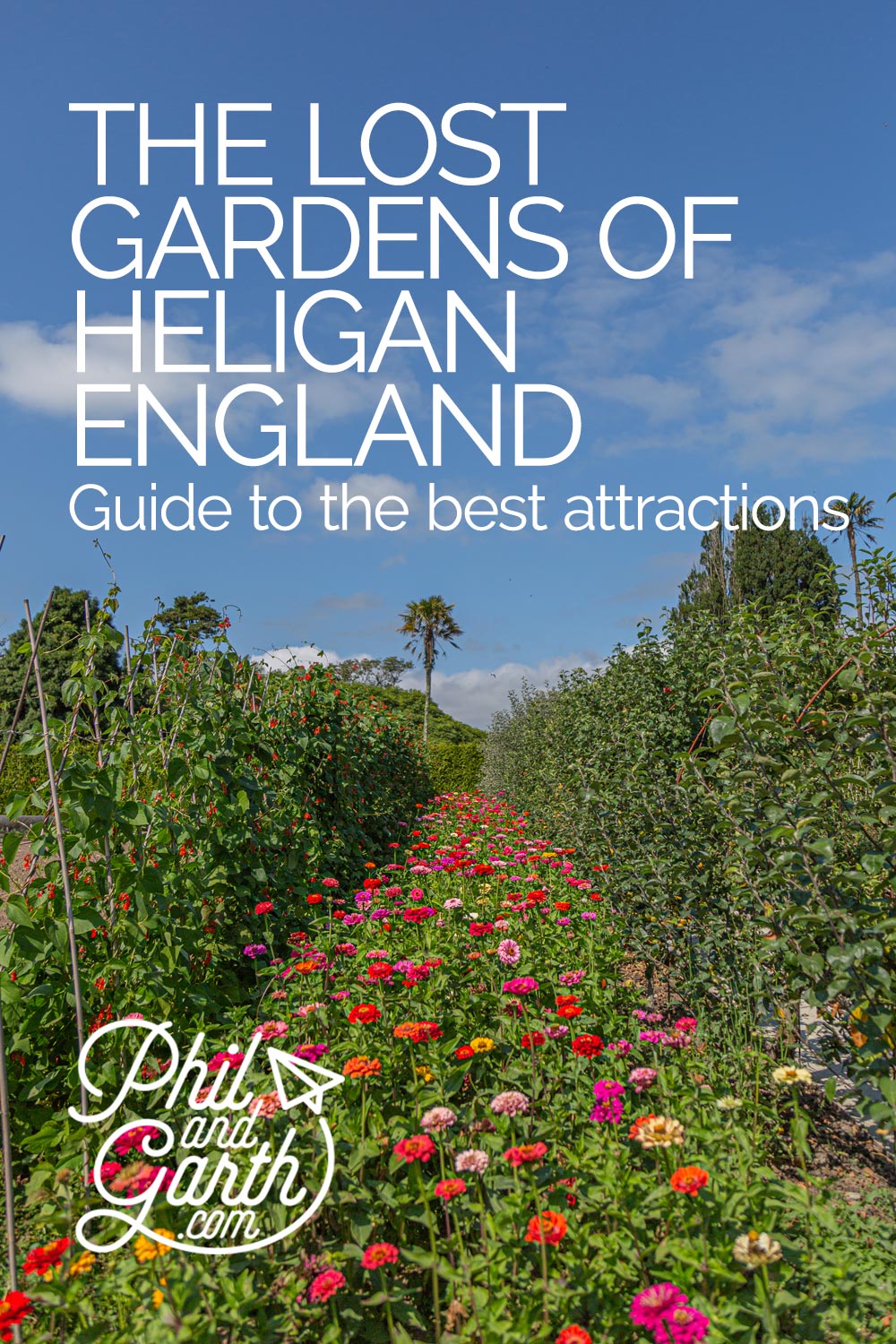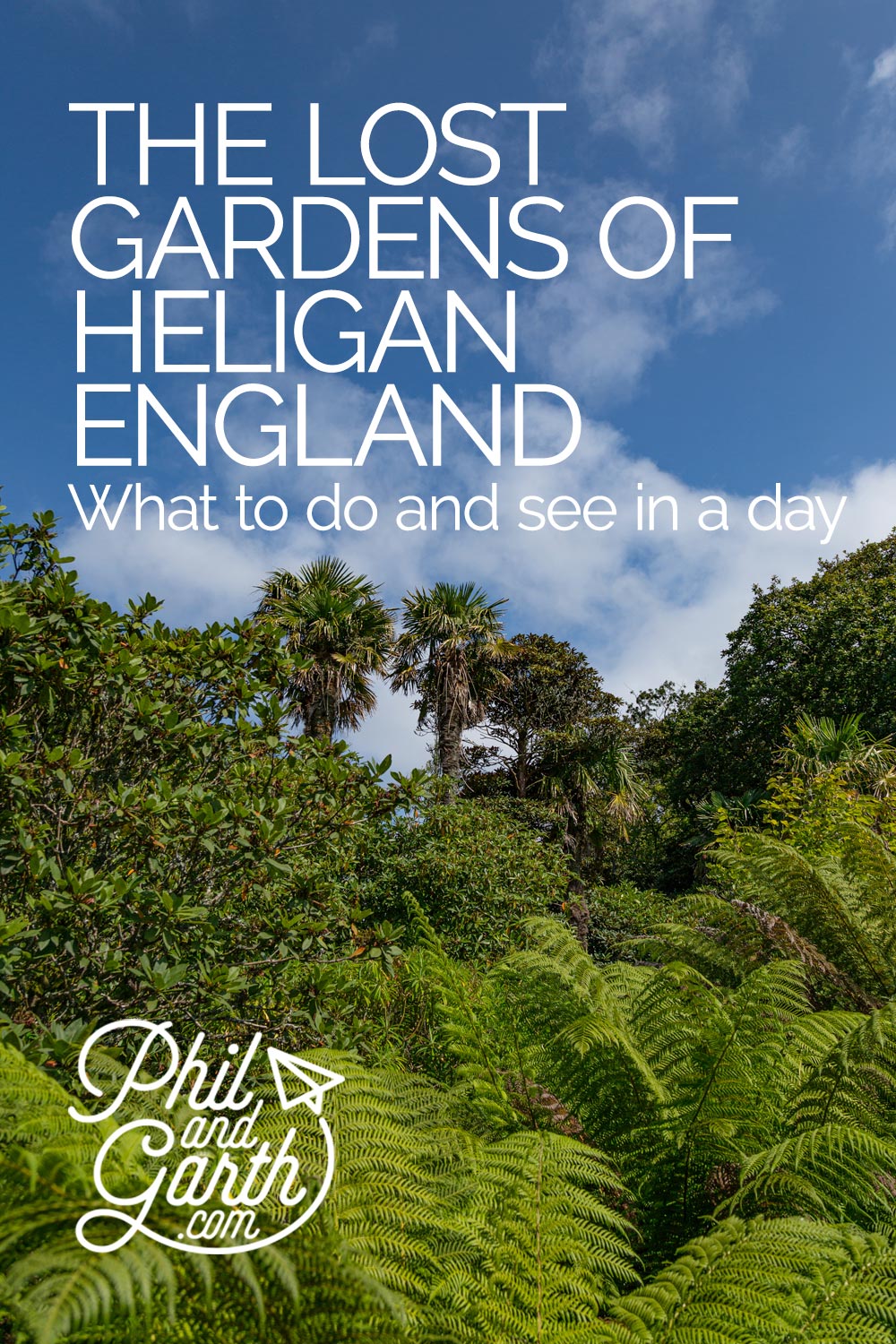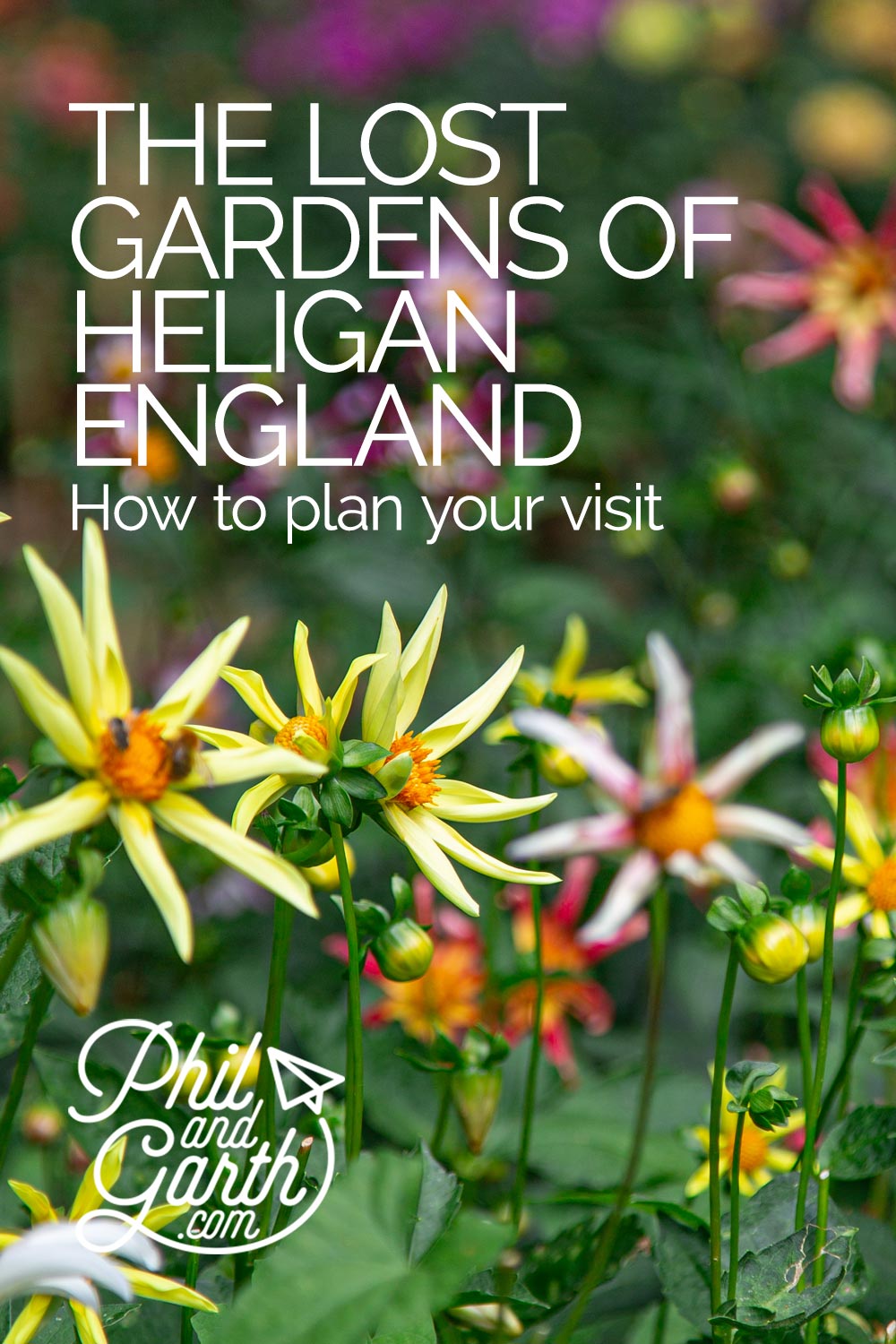Last updated: 8th February 2022
Whilst visiting Cornwall we spent half a day at The Lost Gardens of Heligan. It’s unique and we thought one of the best gardens to visit in Cornwall. Even its name sounds romantic and mysterious. It’s Cornwall’s hidden gem and far exceeded our expectations. In this post we’ll show you what to see and do at The Lost Gardens of Heligan in our complete guide. Or watch the 60 second video above to experience a taste of this beautiful garden in Cornwall.
Table of Contents
About The Lost Gardens of Heligan
The story behind The Lost Gardens of Heligan restoration is a fascinating one. Heligan’s gardens were first developed in 1780 and over 150 years by generations of the Tremayne family. They thrived in the Victorian era enough to rival other stately homes. However, they became completely neglected and overgrown for decades after World War 1. In the 1990s the lost gardens were reawakened and brought back to life.
The Lost Gardens of Heligan is now a great place to get lost in. The huge 200 acre estate has so much to explore! From a huge kitchen garden to a vast ancient woodland and the UK’s only outdoor jungle stuffed with huge ferns and giant Brazilian rhubarb plants. We loved ambling and wandering around, finding small secret gardens like the Italian Garden. The unusual people sculptures in the woodlands are cool too. Kids will love the play areas, farm animals, and walking across the Burma rope bridge. Heligan’s Gardens are deceivingly large. So be prepared to do a lot of walking, some parts are steep and hilly. The Lost Gardens of Heligan is a special place to visit that appealed to gardeners like Garth, wildlife lovers and hikers. It’s also very dog friendly, we saw lots of couples and families out with their pooches on short leads for a day of tranquility in nature.
However, just like other attractions in Cornwall, it is expensive to visit. Plan to give yourself a full day at Heligan to get the most out of it as there’s so much to explore. It’s also a great alternative to the nearby Eden Project or you can visit both as we did!
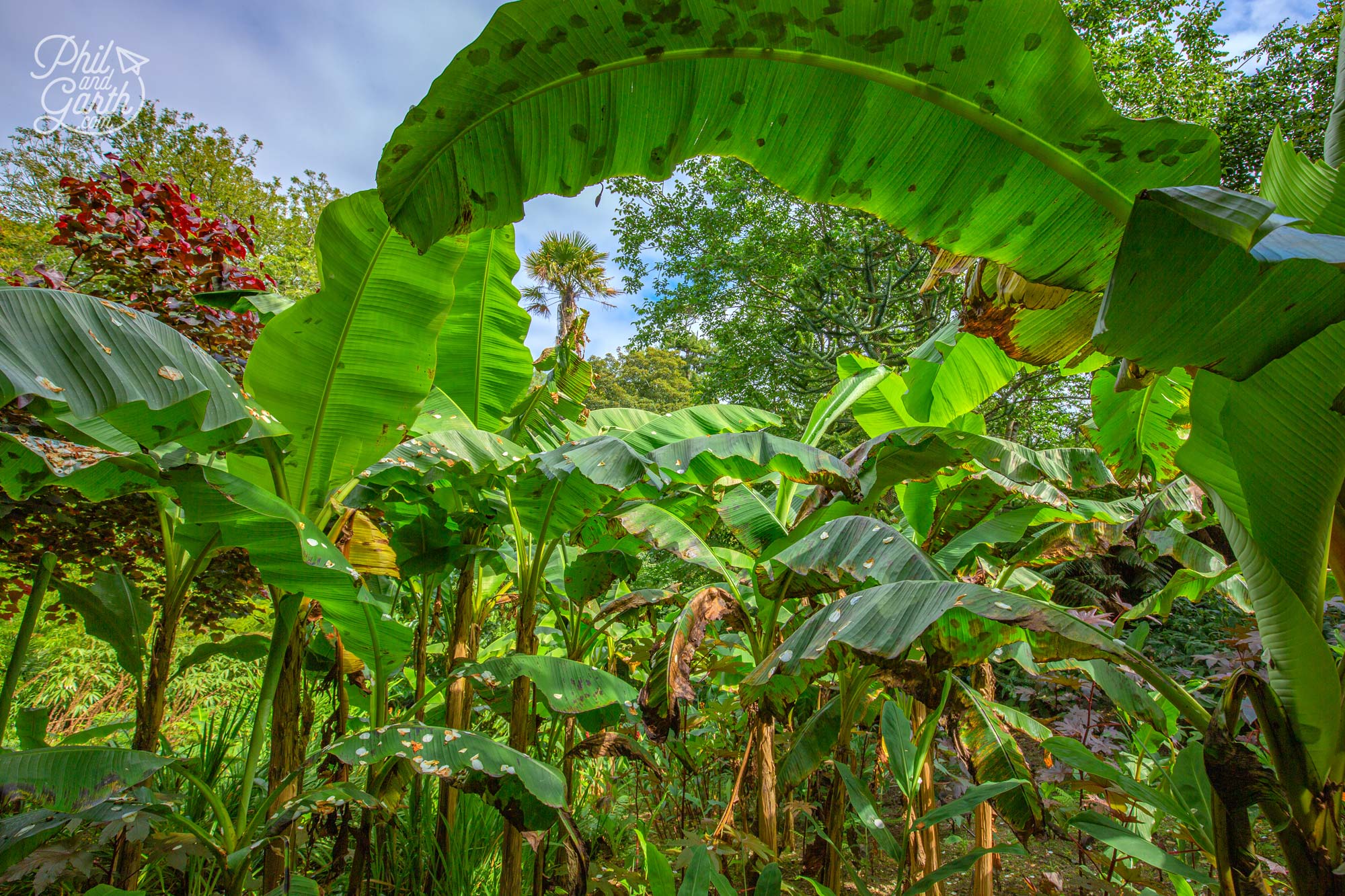
Banana plantation in the jungle valley – a part of the Heligan Gardens estate
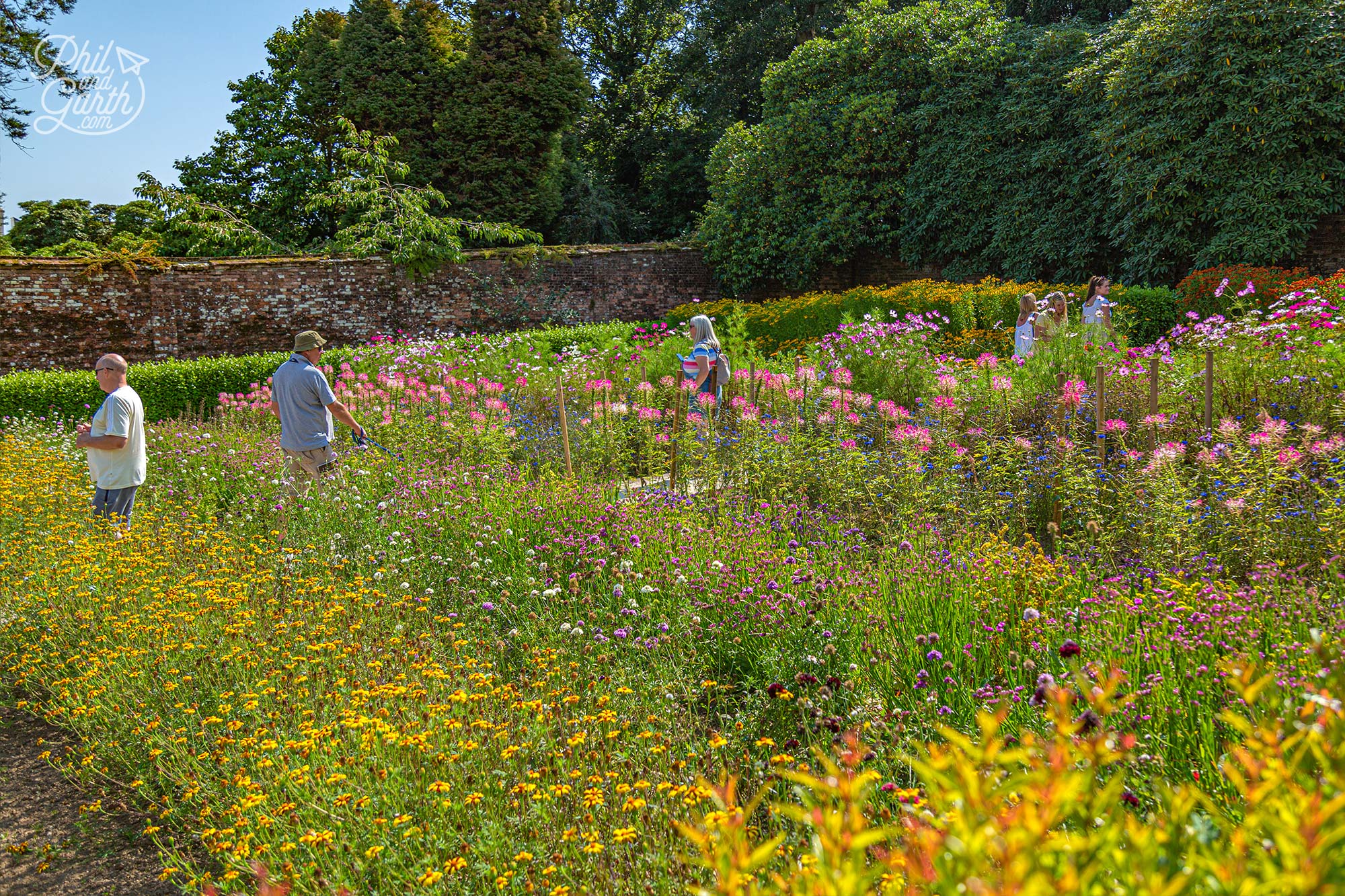
A paradise for gardeners, couples and families after a tranquil day out
History of the Lost Gardens of Heligan
The Heligan House and estate were owned by the wealthy Tremayne family for 400 years until the family’s last direct descendant Jack Tremayne left Heligan in 1923 to go live in Italy. The estate soon fell into demise and the gardens returned themselves to the wild and were lost for decades. The house played a vital role in the Second World War when American troops were based at Heligan in 1943 to train for D-Day on local beaches.
Jack Tremayne died in 1945 and the house was sold off in the 1970s, converted into flats and separated from the gardens. John Willis a descendant of the Tremayne family inherited the land and decided to look at what could be done with it. In 1990 Willis worked with an archaeologist Sir Tim Smit (the same archaeologist who founded The Eden Project) and ventured into the long-lost gardens. Through the overgrowth and vines of ivy, the pair found an old Victorian path leading to a door in a tall brick wall. They had discovered a walled garden with an ancient greenhouse and their fabulous journey of discovery, secrets and curiosity began.
The pair began excavating a bramble-covered building and made their most remarkable discovery. They had found a small room which was the gardener’s toilet called the ‘thunderbox room’ (think about it!). On the limestone wall in feint pencil a motto reads “Don’t come here to sleep or slumber” dated 1914, underneath are signatures – the names of 13 gardeners plus others beyond legibility. When we visited the thunderbox room, we could just about make them out under the protective perspex. These workers all went on to serve in World War 1, sadly 9 of them were killed – a third of all the gardeners at Heligan. These were the ordinary but talented people who gave so much to gardens and made them great.
The Lost Gardens of Heligan were lovingly restored as a tribute to these workers. It took 30 years to cut back decades of overgrowth and dense foliage to find original and priceless plant specimens. It became Europe’s largest garden restoration project. Today 20 gardeners and workers maintain the estate and continue restoration work for us to see how they once looked.
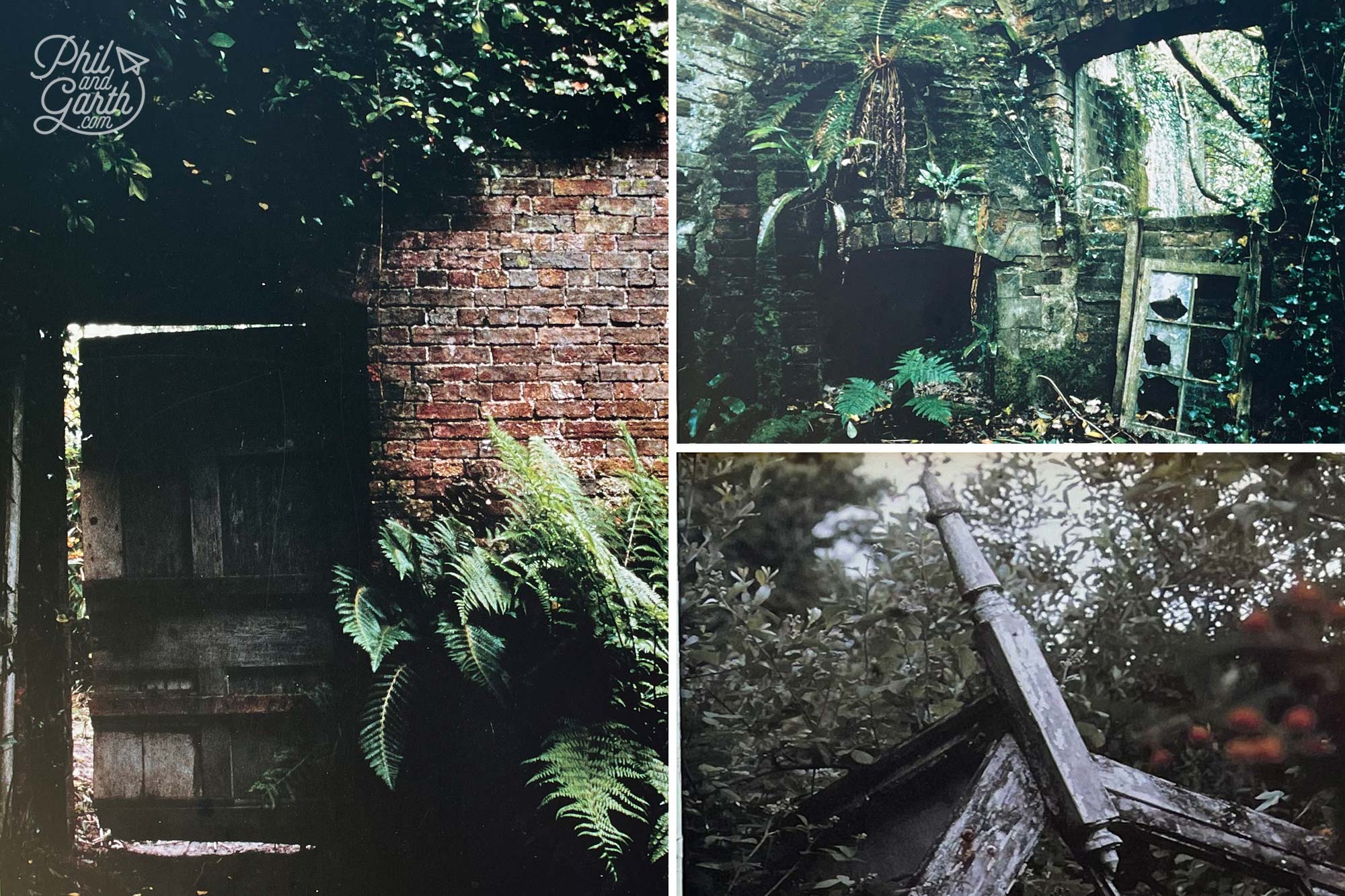
A photo exhibition after the ticket office shows how the garden was found
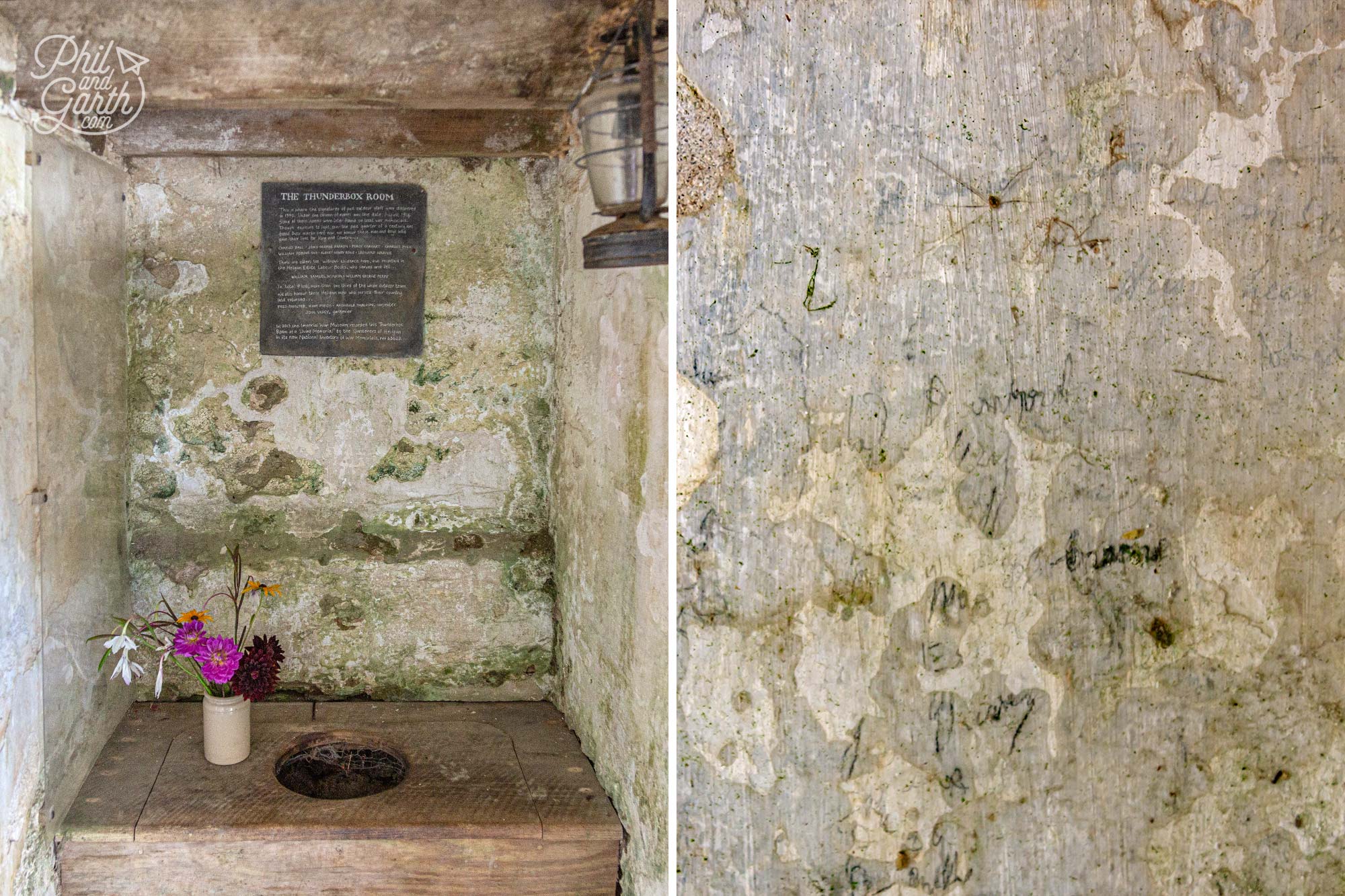
Heligan’s gardeners left their names on the wall in the ‘thunderbox room’ before they departed to serve in WW1
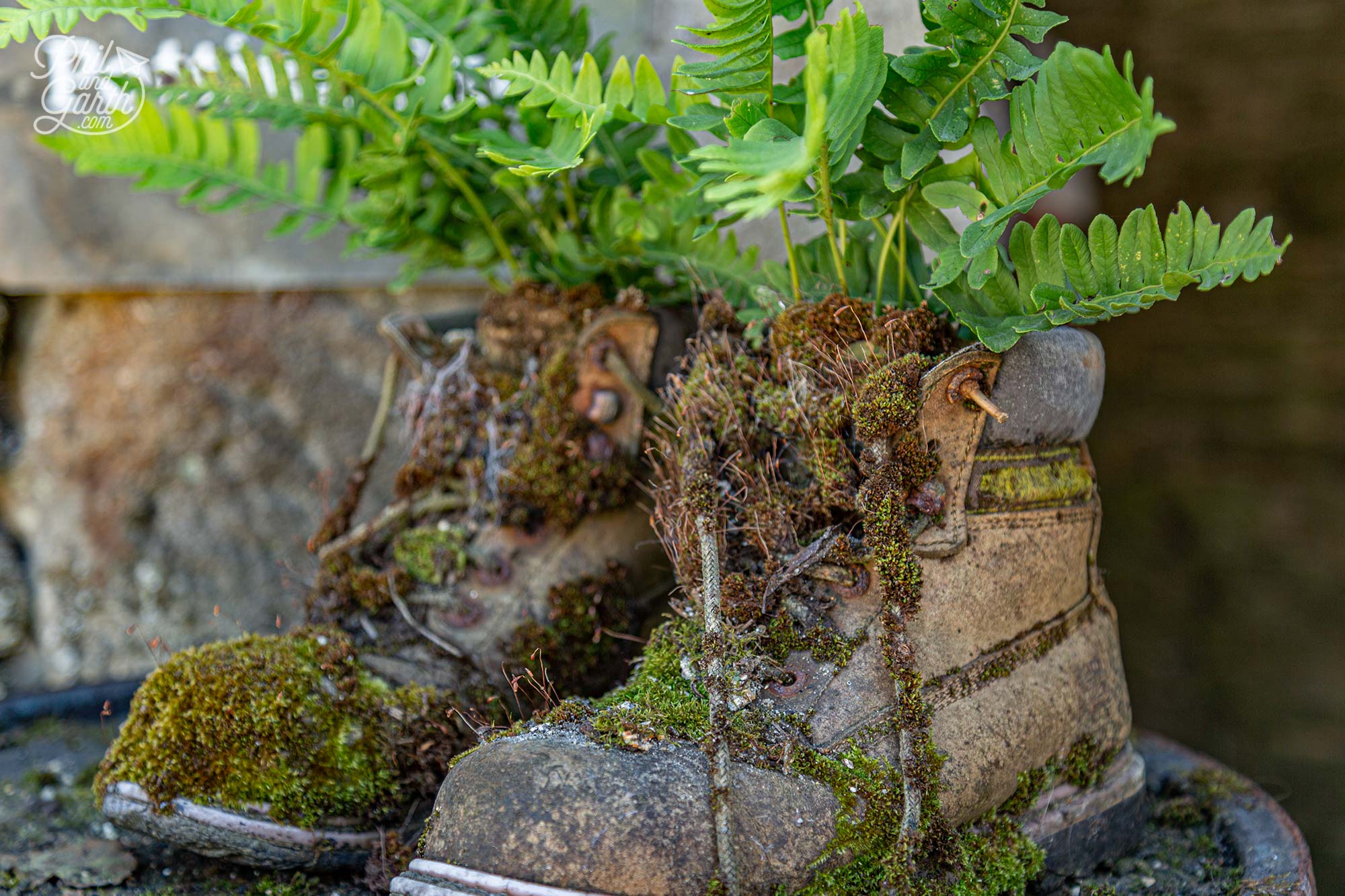
The Lost Gardens of Heligan were restored in tribute to the garden workforce
The Lost Gardens of Heligan – Guide to Attractions
So what can you do and see at the Lost Gardens of Heligan? Well, there’s absolutely loads to explore, we spent 4 hours and didn’t see everything. You really need to give yourself a full day. The gardens and estate are split up into 3 areas containing lots of different gardens and walks over a huge expanse. Take some good shoes as you’ll be covering a lot of ground! Follow our order of attractions to get the most from your day.
1. Victorian Productive Gardens
Top of the list of things to do in the Lost Gardens of Heligan are the fully restored ‘Productive Gardens’. Comprising the walled Kitchen Garden, Flower Garden, Melon Yard, Potting Shed and the Thunderbox Room. The Productive Gardens are described as “a working memorial to Heligan’s Lost Gardeners” and we could see why.
Kitchen Garden
200 years ago the Kitchen Garden used to provide over 300 varieties of fruit, vegetables, salads and herbs to the Heligan House Kitchen. In order to meet the needs of the Tremayne family to entertain their guests and feed the large number of staff who worked in the house and gardens. It was completely self-sufficient. Today the gardeners still use Victorian methods of regimental rows aligned north to south to make the best use of the sun. 500 varieties of vegetables and flowers are grown year-round to supply the onsite Heligan Kitchen and cafe.
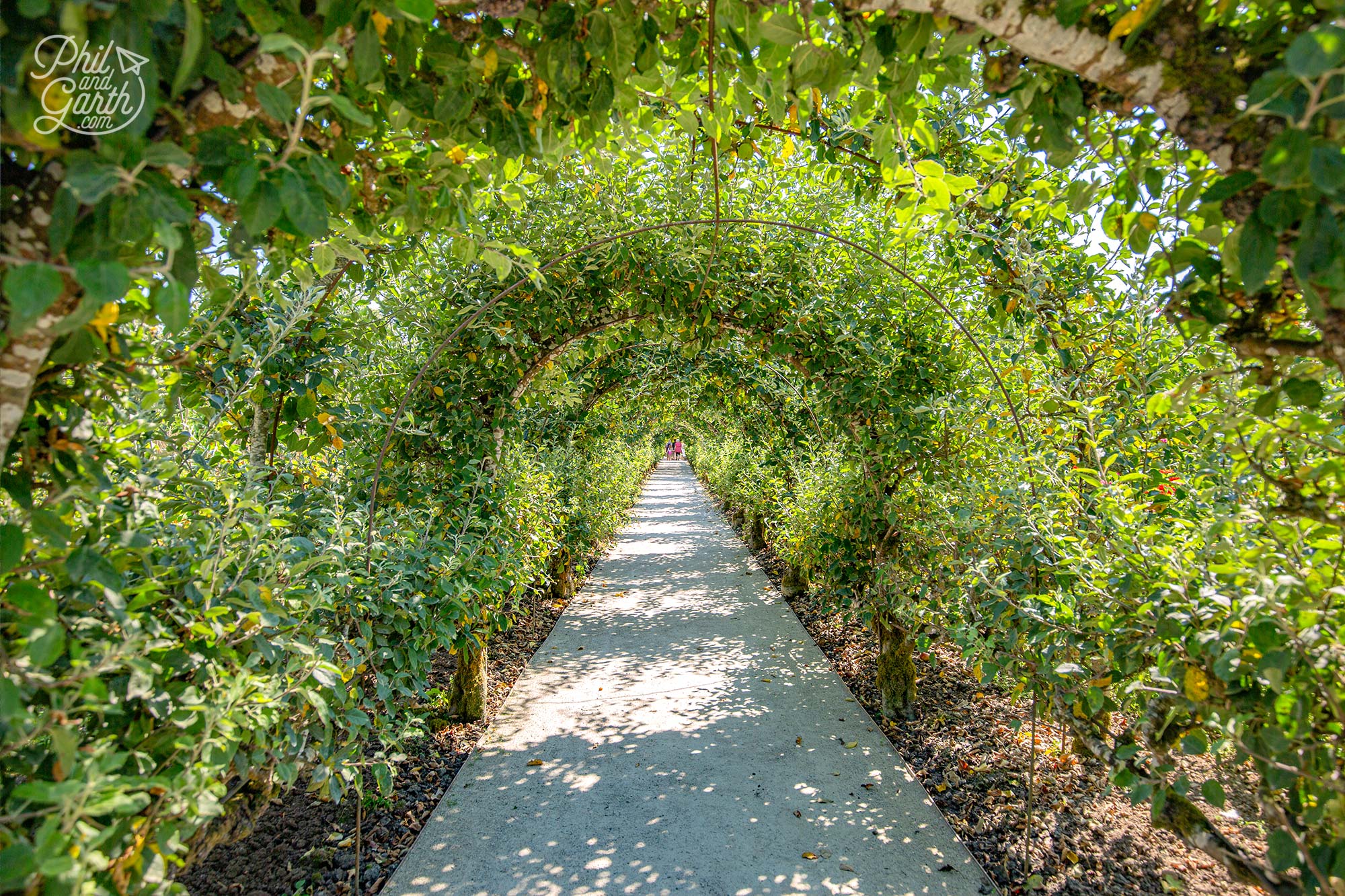
The Apple Arch – a lovely tunnel of apple trees in the Kitchen Garden
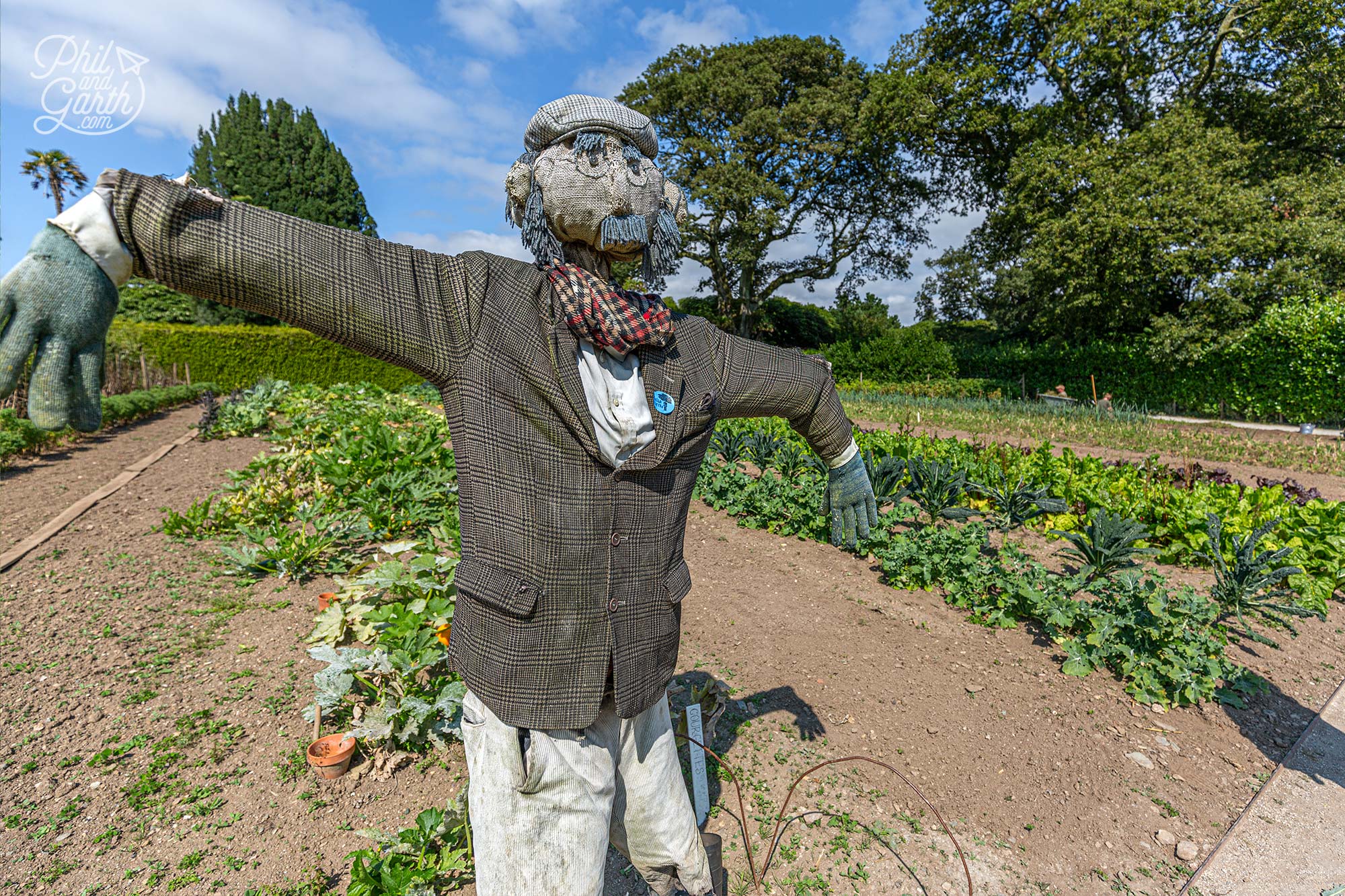
Diggory the scarecrow looking after the fresh seasonal produce for Heligan’s Cafes and Restaurant
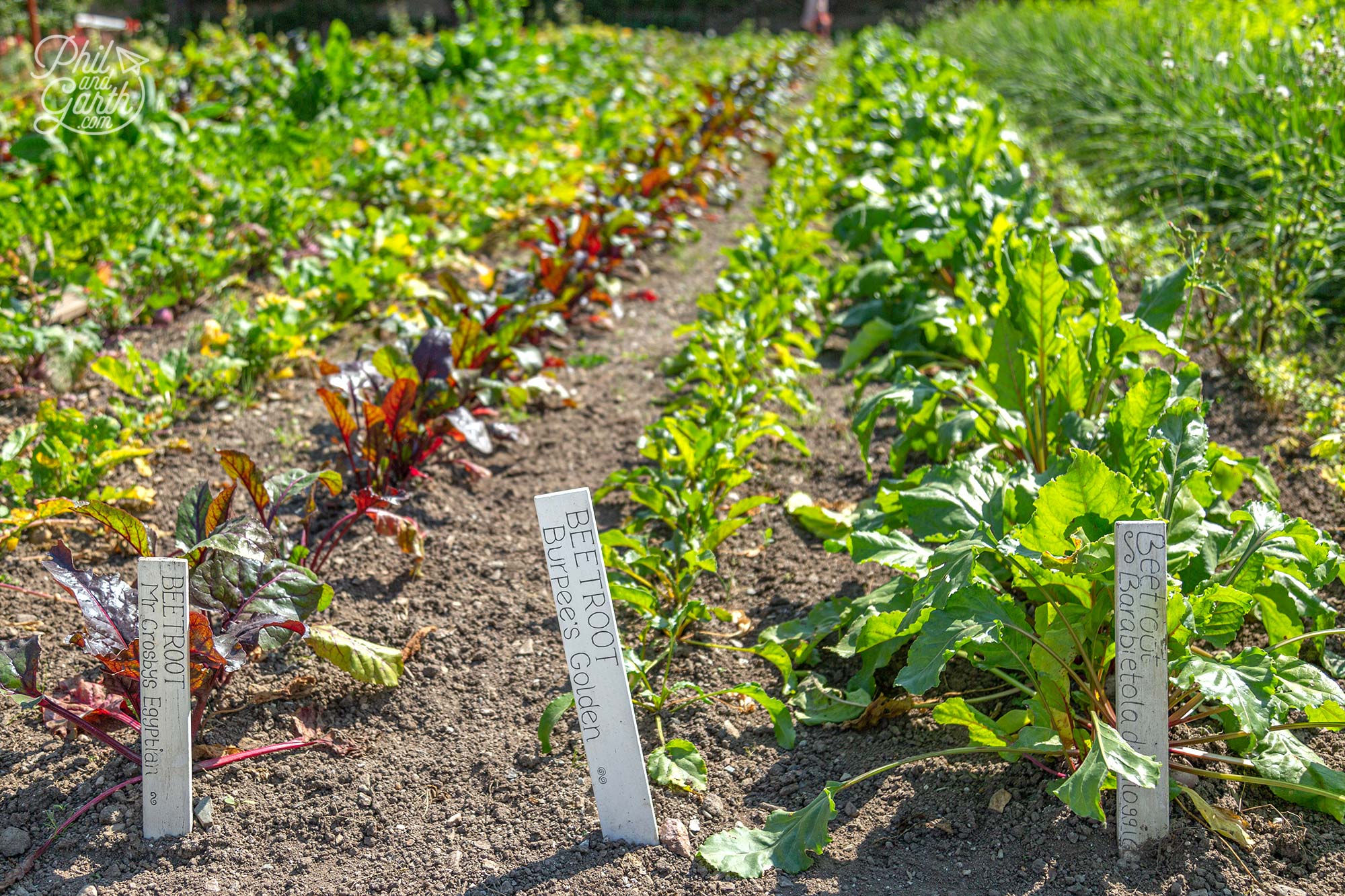
Different types of Beetroot growing
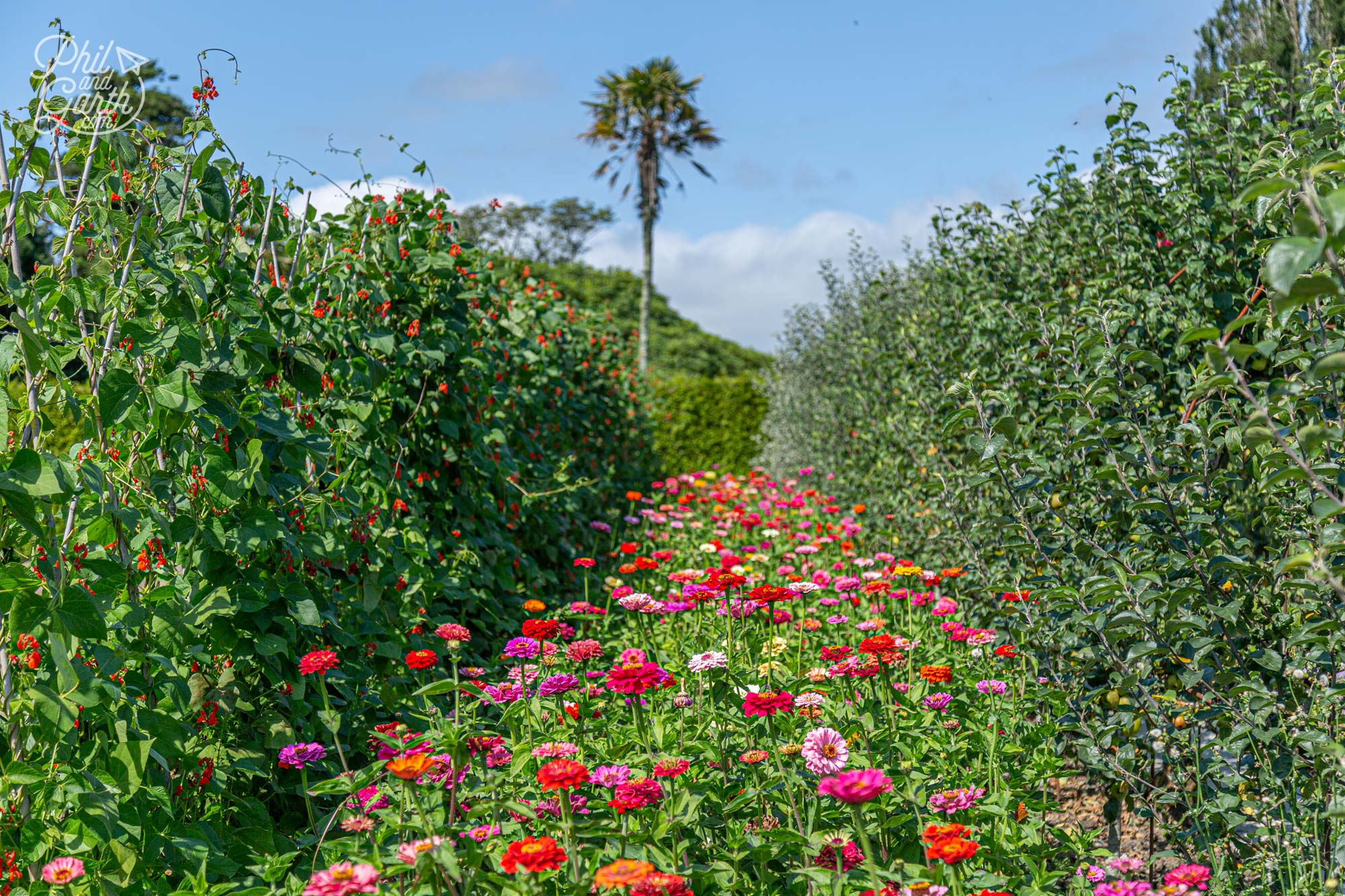
Rows of runner beans and flowers in Heligan’s Kitchen Garden
Melon Yard
We found the Melon Yard absolutely fascinating, especially the Lost Gardens of Heligan pineapple pit. We saw pineapples growing in the pits warmed by the heat of rotting farm manure. We’ve seen pineapples close up growing in Thailand but never in England! You can imagine how exotic and fancy it would have been in Victorian times. In fact, pineapples were a sign of wealth and status. It could take 2 years to grow pineapples and was a very labour intensive and costly process. The competition was fierce between Victorian estates.
The surrounding glass greenhouses were used to grow melons, citrus fruits, bananas, grapes, apricots and peaches.
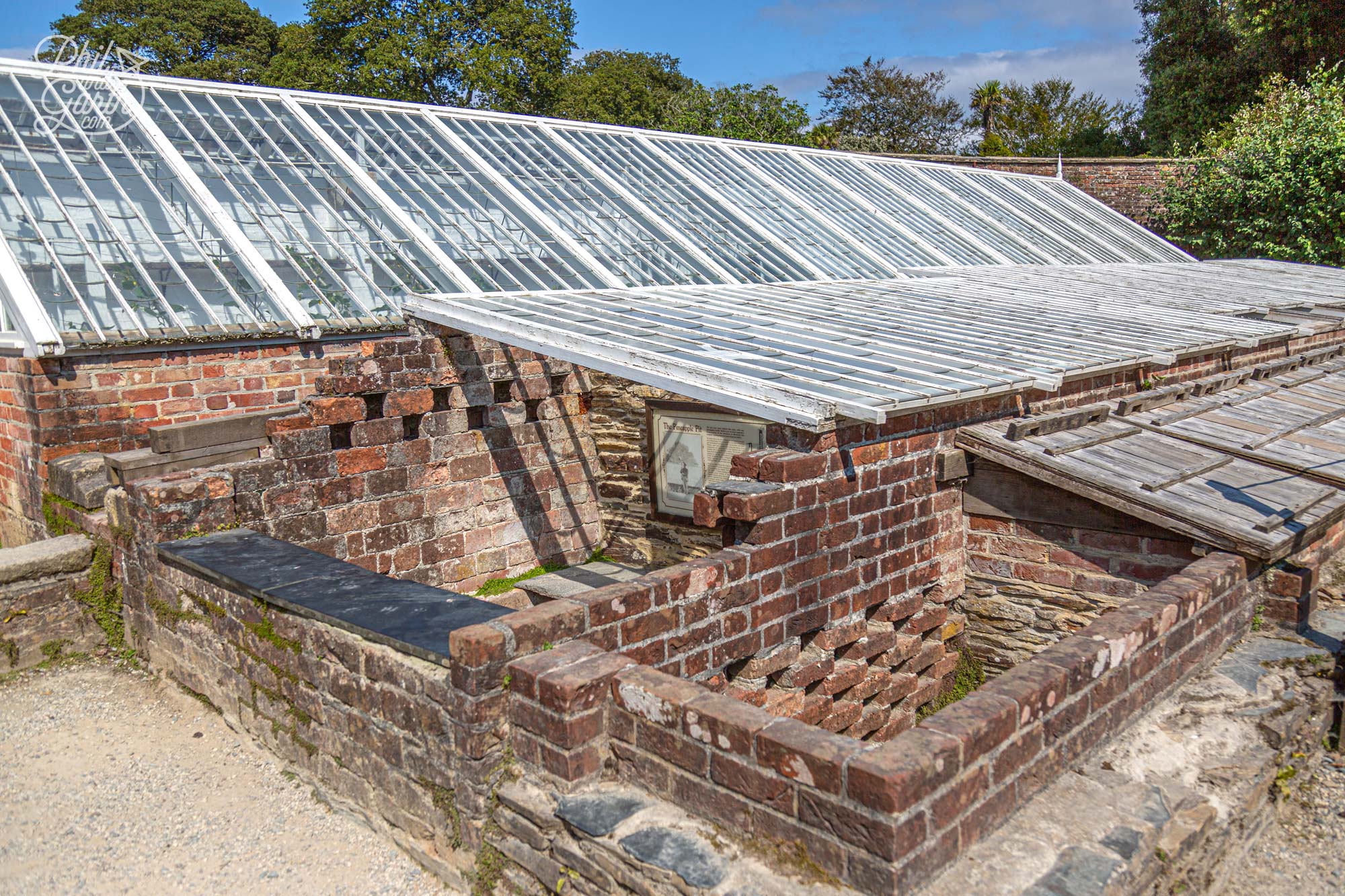
The ingenious pineapple pits which used the heat from manure to grow pineappples
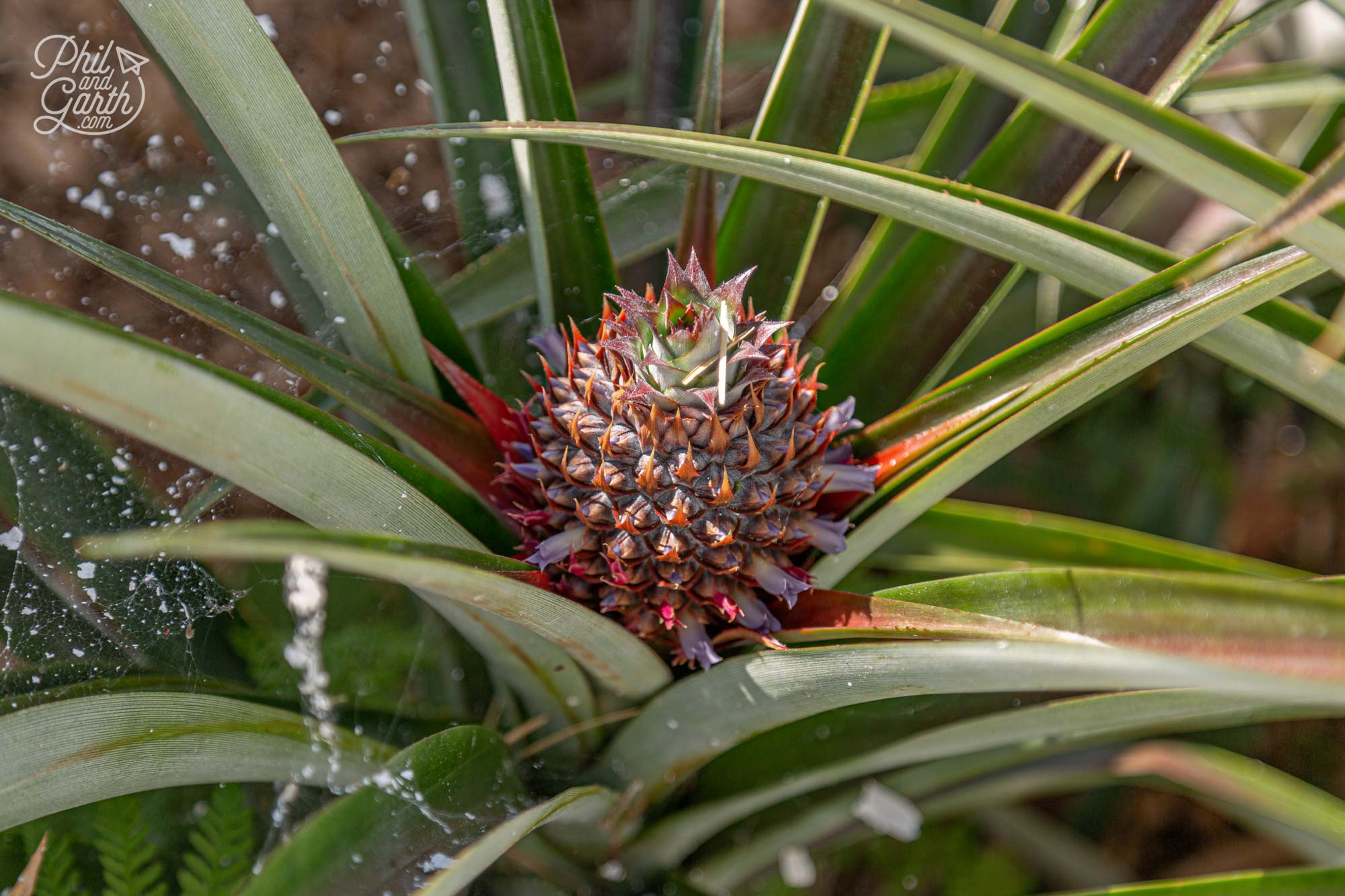
A sight you don’t expect to see – a pineapple growing in England!
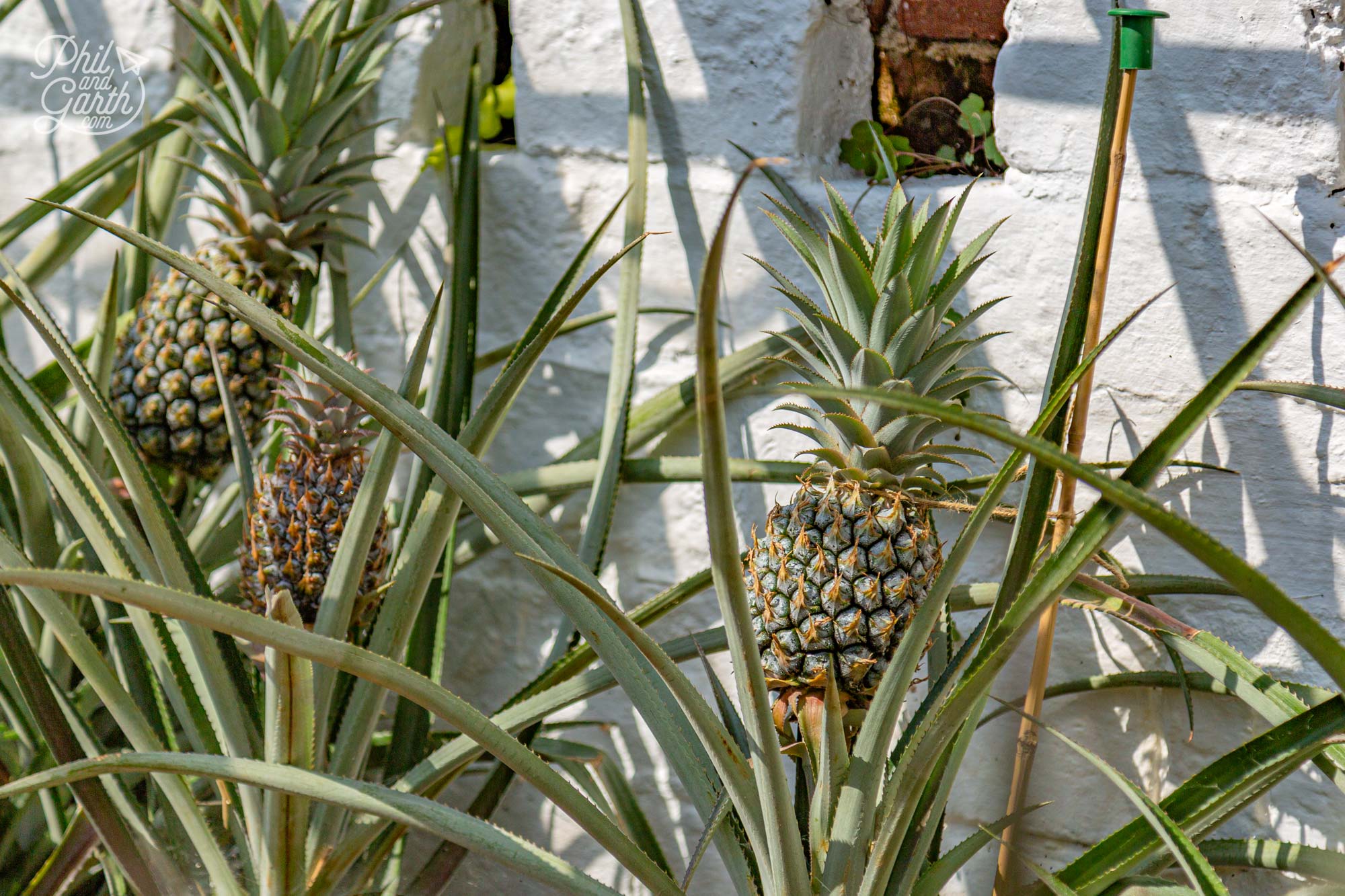
These pineapples look ready to pick
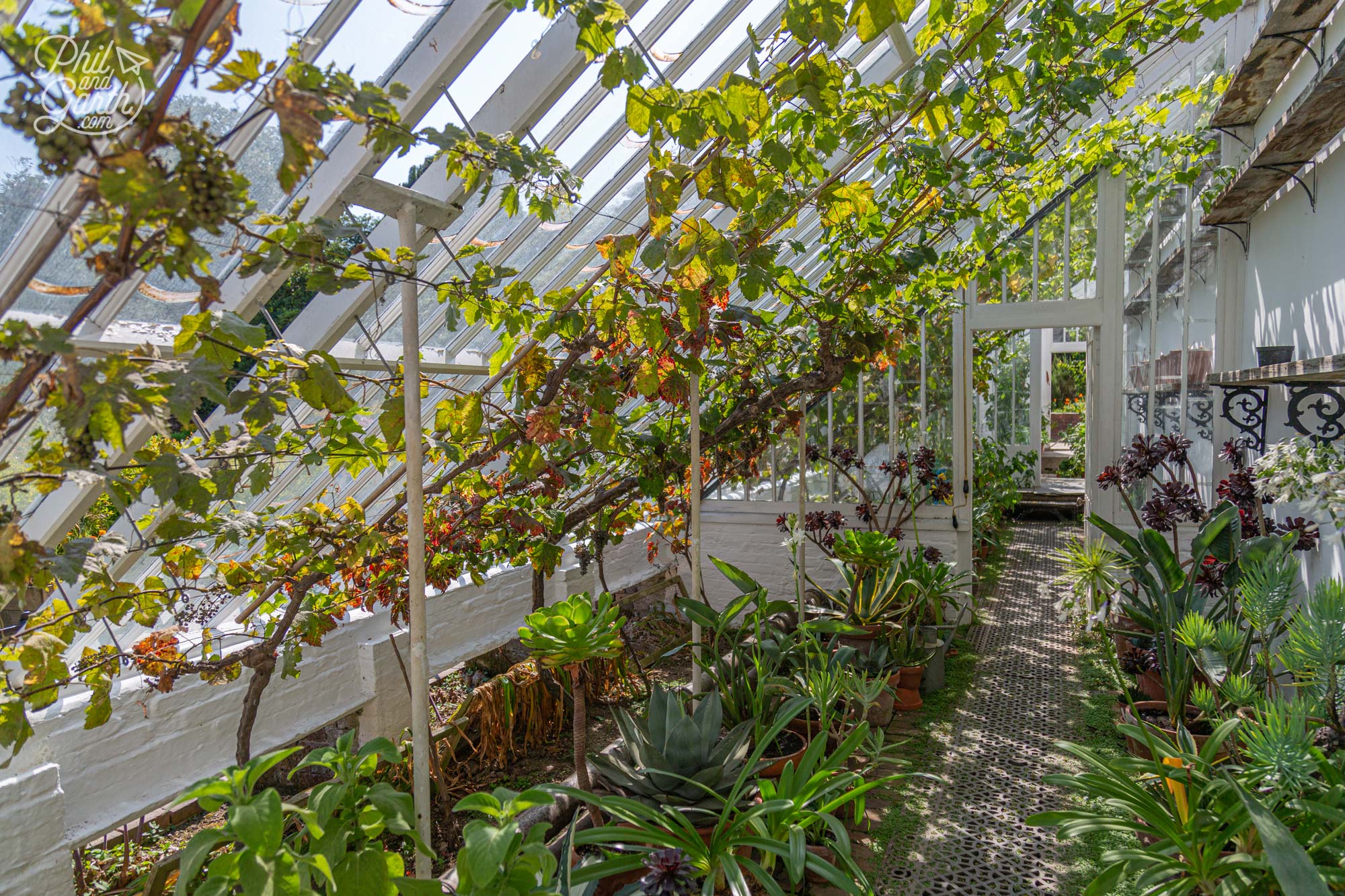
One of the glass greenhouses fulll of grape vines
Thunderbox Room
Peer into the potting sheds and go inside the thunderbox room which also leads to a small secret Italian Garden.
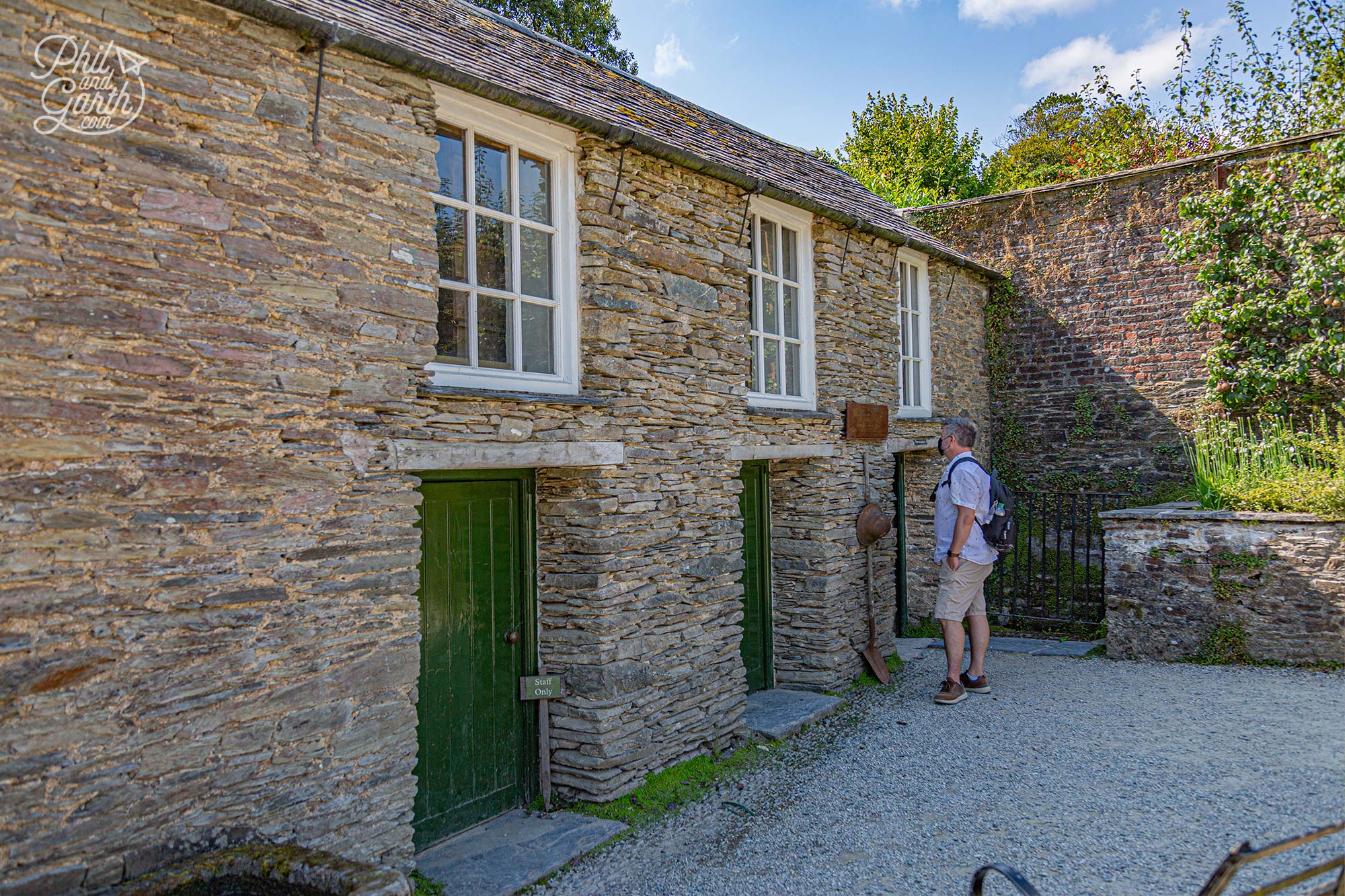
The barn with the Thunderbox Room located in the Melon Yard
Flower Garden
In the Flower Garden, they grow cut flowers exactly as they did 100 years ago.
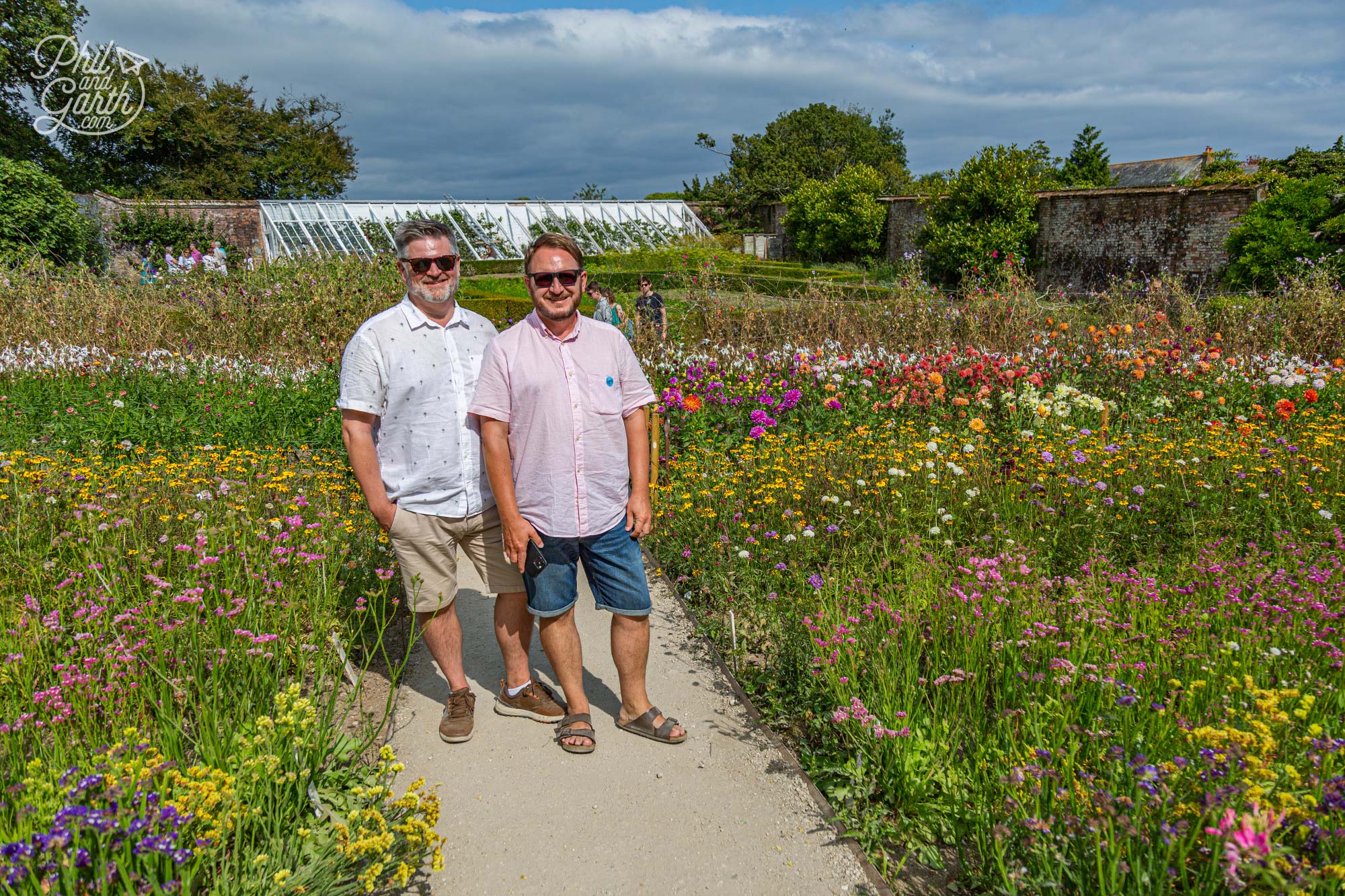
Phil and Garth amongst the colourful blooms of the Flower Garden
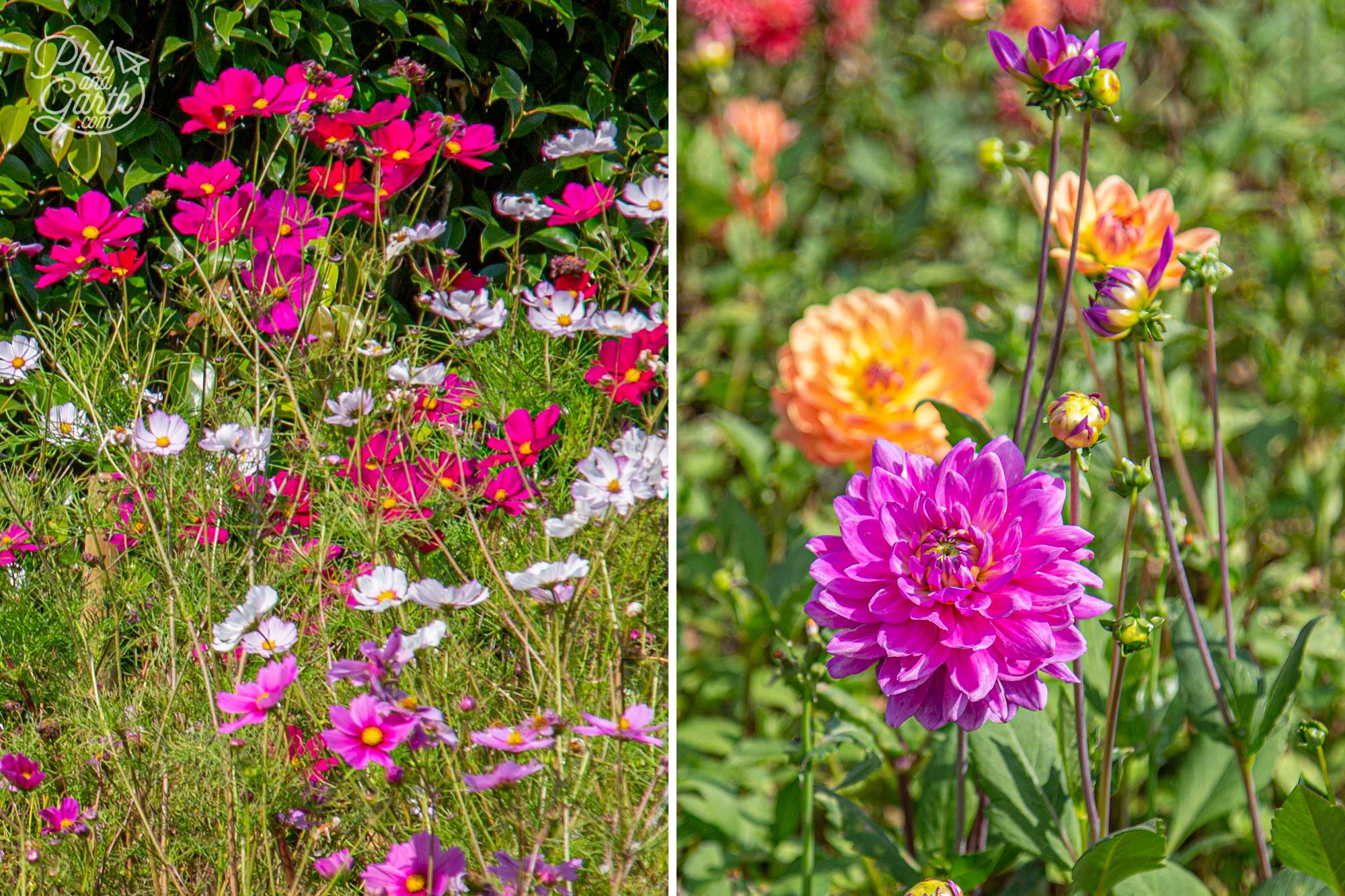
Cosmos and dahlias are perfect cut flowers
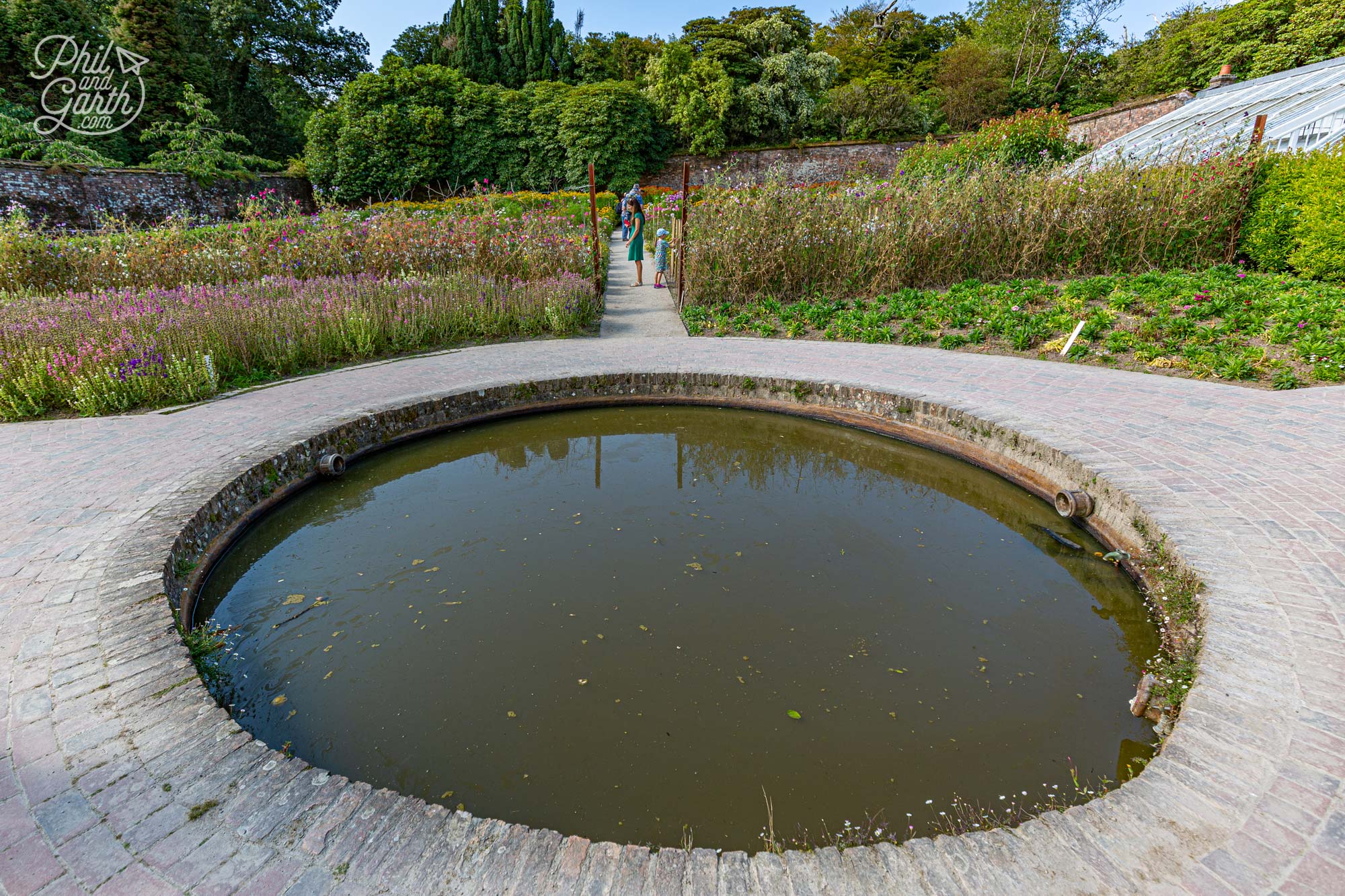
The Dipping Pond was used by staff to collect water in watering cans to feed the flowers and plants
Pencalenick Greehouse
Next to the Flower Garden and tucked away behind the Head Garderner’s Office we found the Pencalenick Greenhouse. It”s fabulously fragrant from the many pots of scented pelargoniums (geraniums). The smell reminded us of Spain.
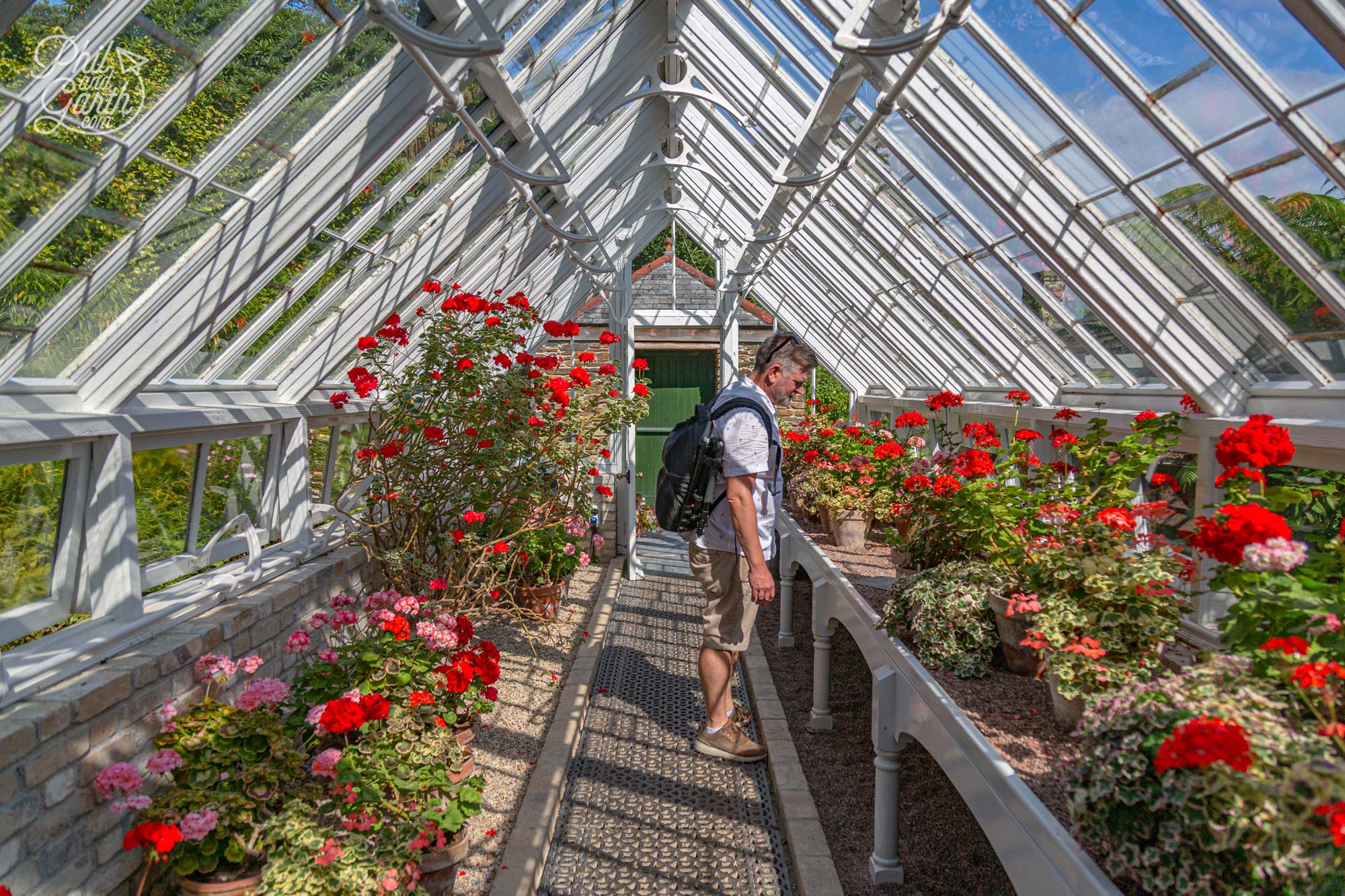
Phil inside the Pencalenick Greenhouse
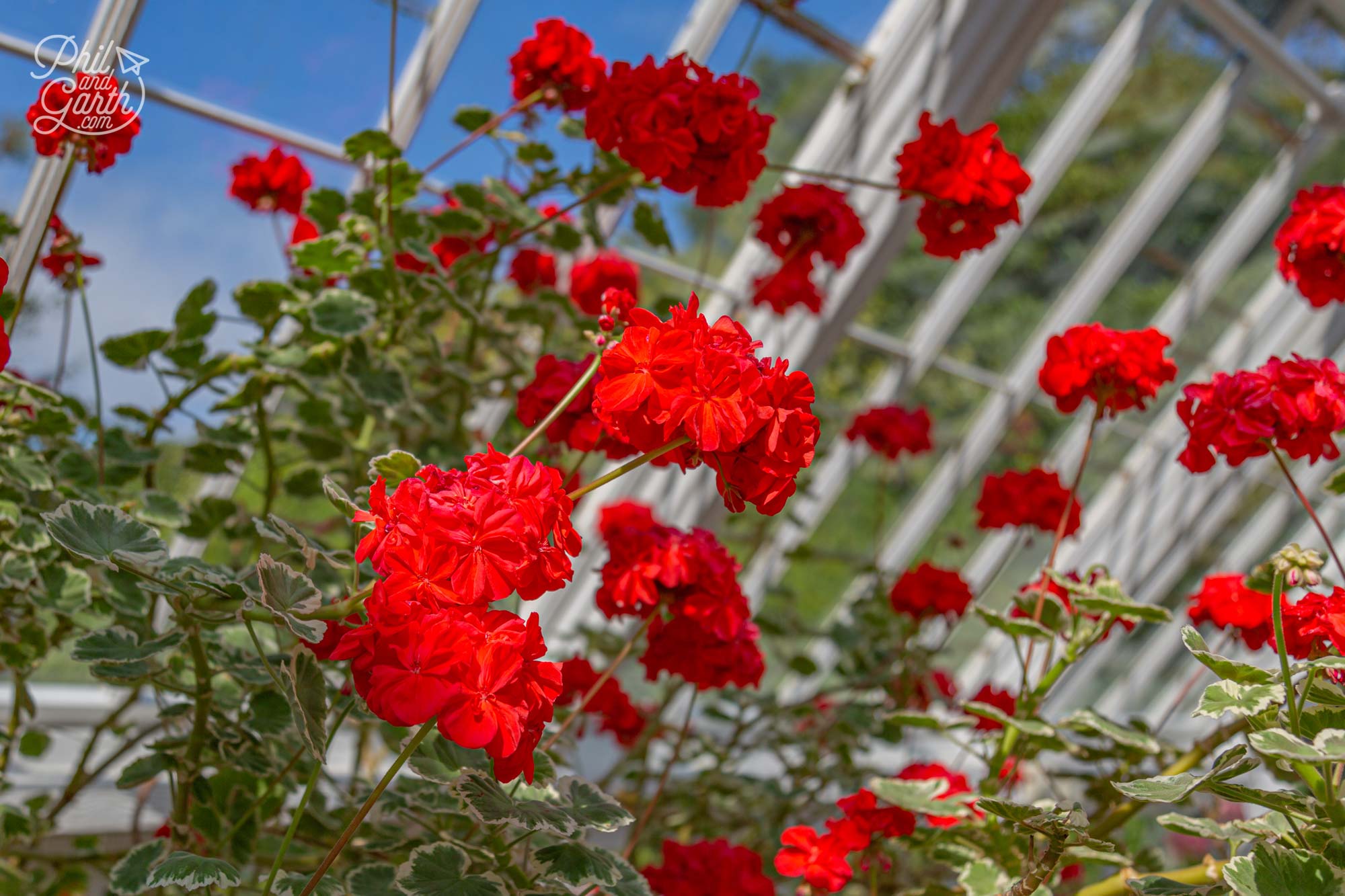
So many lovely potted geraniums, the smell reminds us of Spain
2. Pleasure Grounds
The Pleasure Grounds were created 150 years ago by generations of the Tremayne family. Winding paths lead you through various themed gardens like the Italian Garden, Sundial Garden, Northern Summerhouse, Crystal Grotto and the New Zealand garden.
Flora’s Green
From the kitchen garden we walked into Flora’s Green to see Heligan’s impressive collection of ancient and huge rhododendron bushes. To see these rhododendrons in flower you need to visit from April to May. These impressive shrubs were granted National Collection Holder status by Plant Heritage for its unique camellias and rhododendrons introduced to Heligan pre-1920.
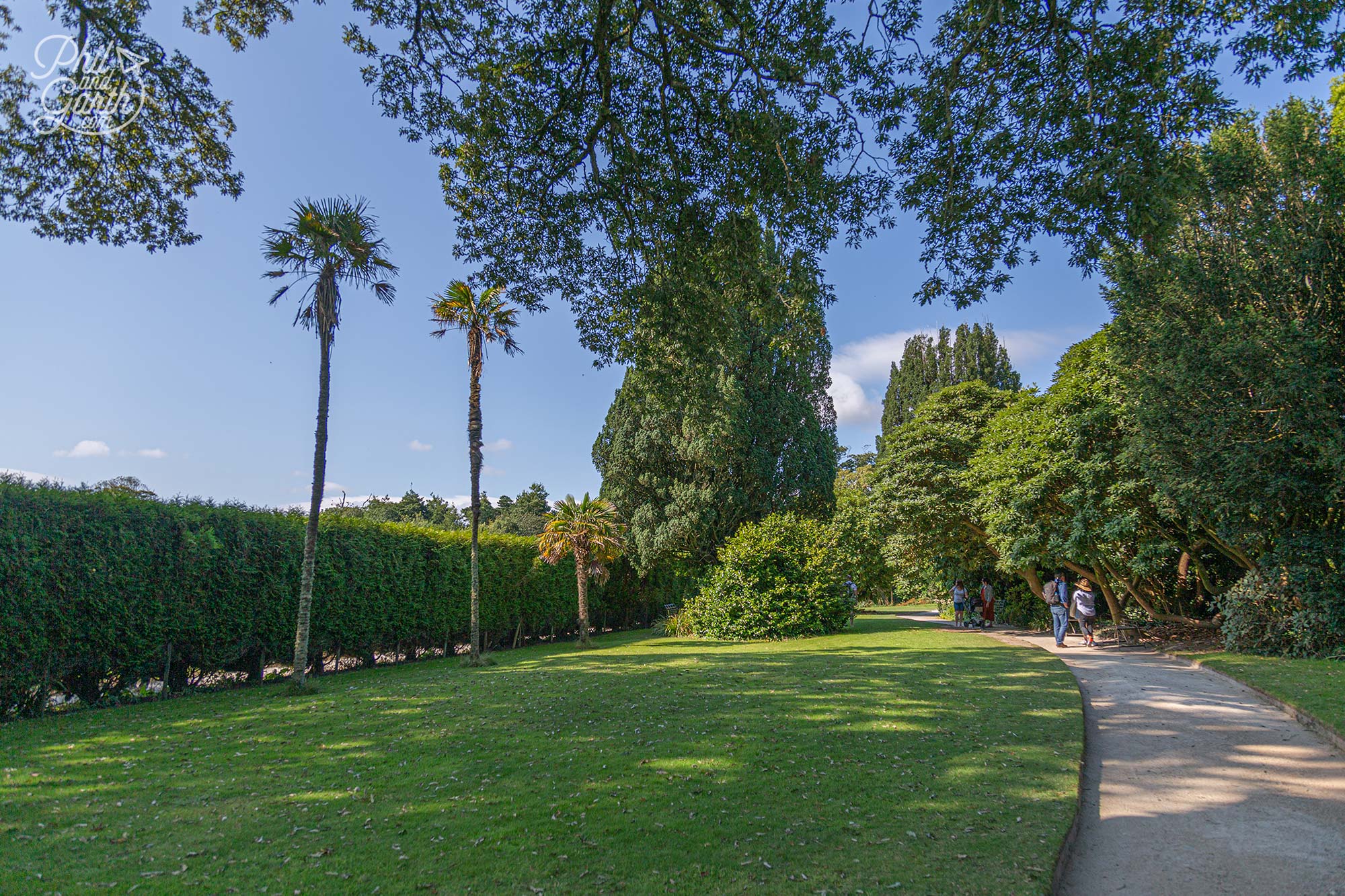
Old Victorian paths lead you past ancient rhododendrons in Flora’s Green
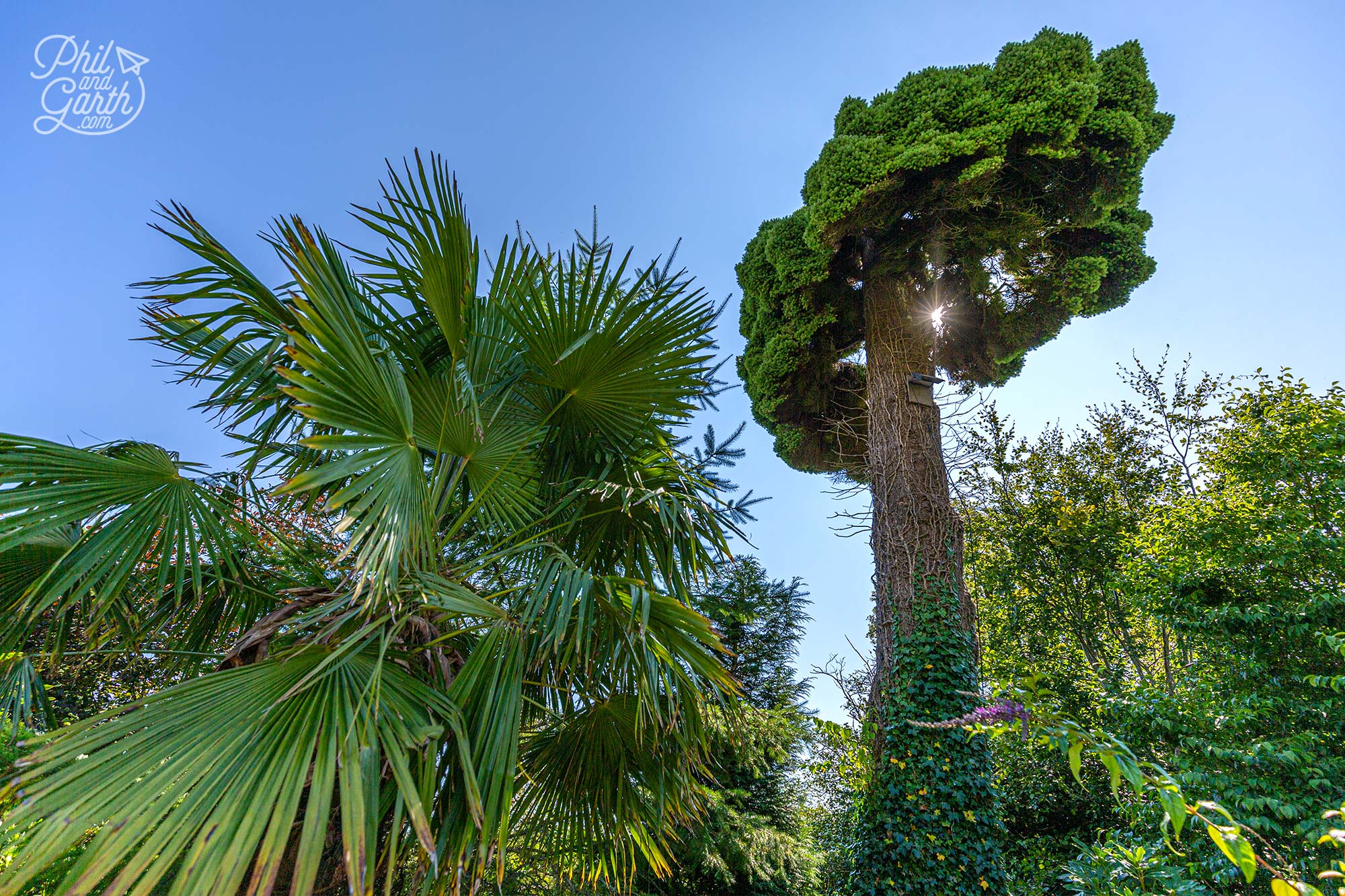
To the right – an ancient Douglas Fir Tree, nicknamed “Witches’ Broom”
Northern Summerhouse Garden
At the Northern Summerhouse, there are lovely views over the fields and St Austell on a clear day. Apparently, it was a favourite morning spot of the Tremayne family for views over their estate.
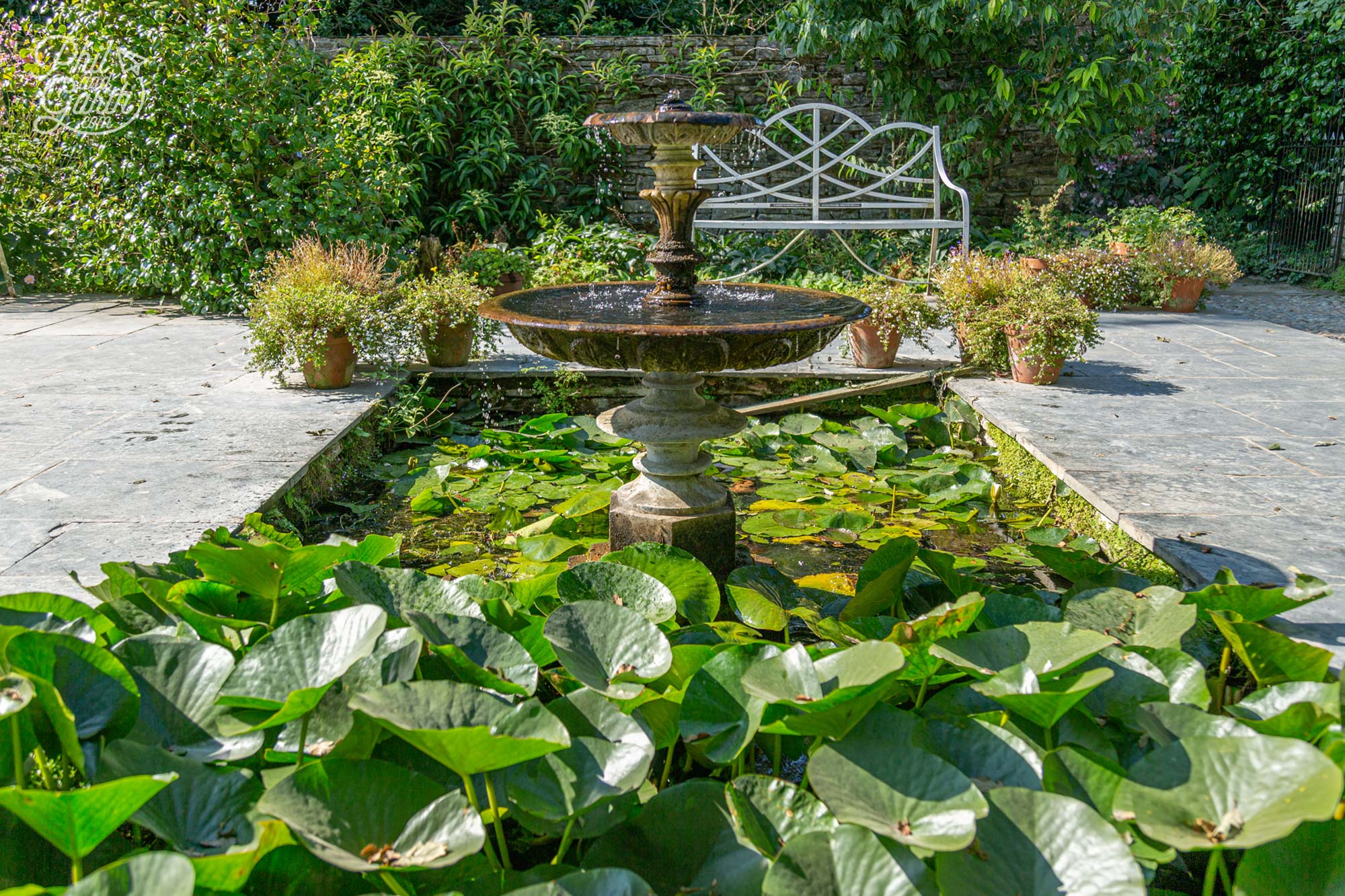
An ornamental pond at the Northern Summerhouse garden
Crystal Grotto Garden
The Crystal Grotto garden feels like a magical secret place. It’s very quiet where shafts of light peek through the shady and overgrown ferns onto the moss-covered rocks. In Victorian times there were no trees and the quartz encrusted rocks were illuminated by the moon and candles were lit inside the grotto.
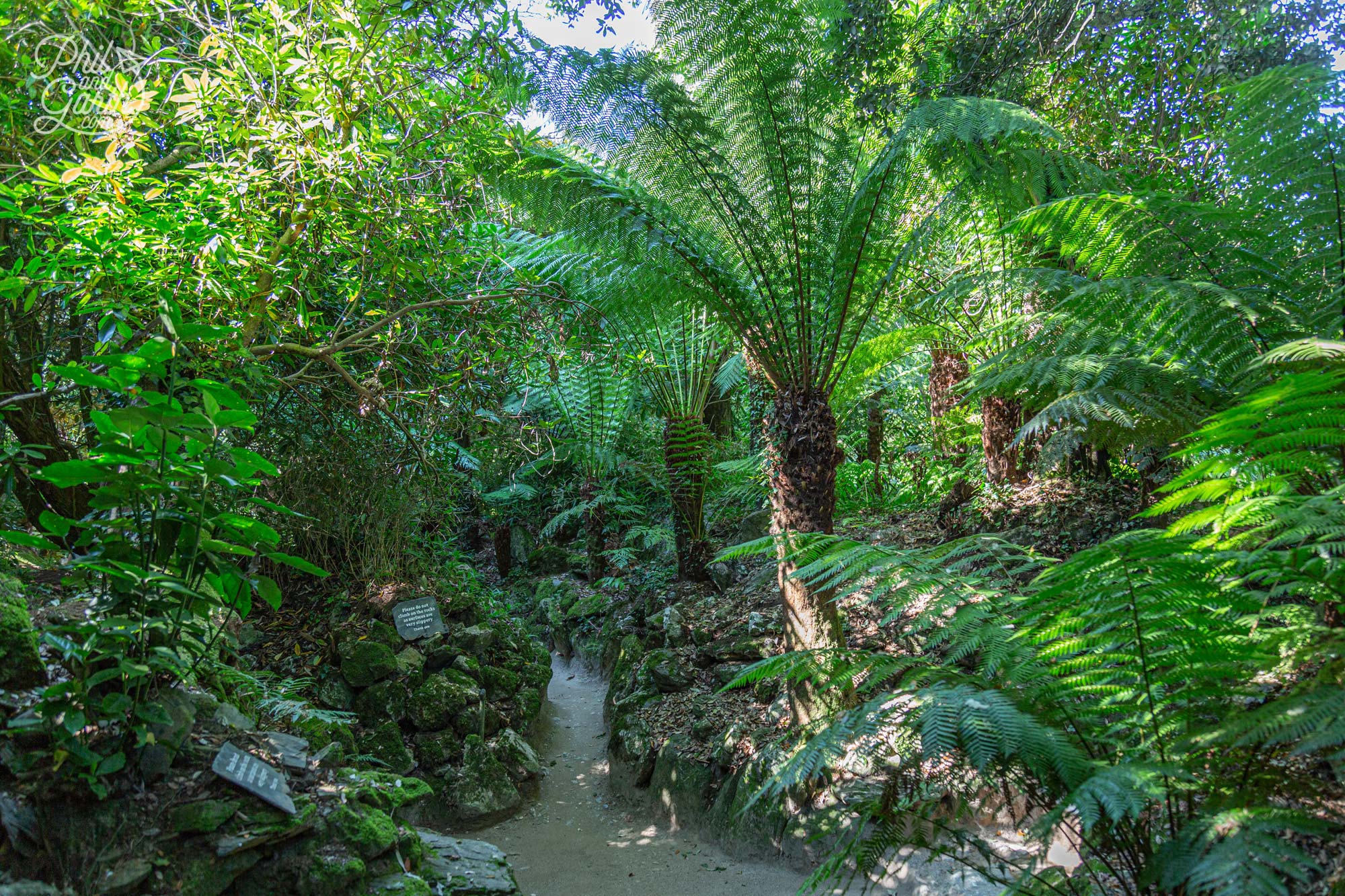
The shady and magical Crystal Grotto garden
New Zealand Garden
Tree ferns and lots of textural grasses line the pretty and smaller New Zealand Garden. Sculptures here are by Maori chiefs.
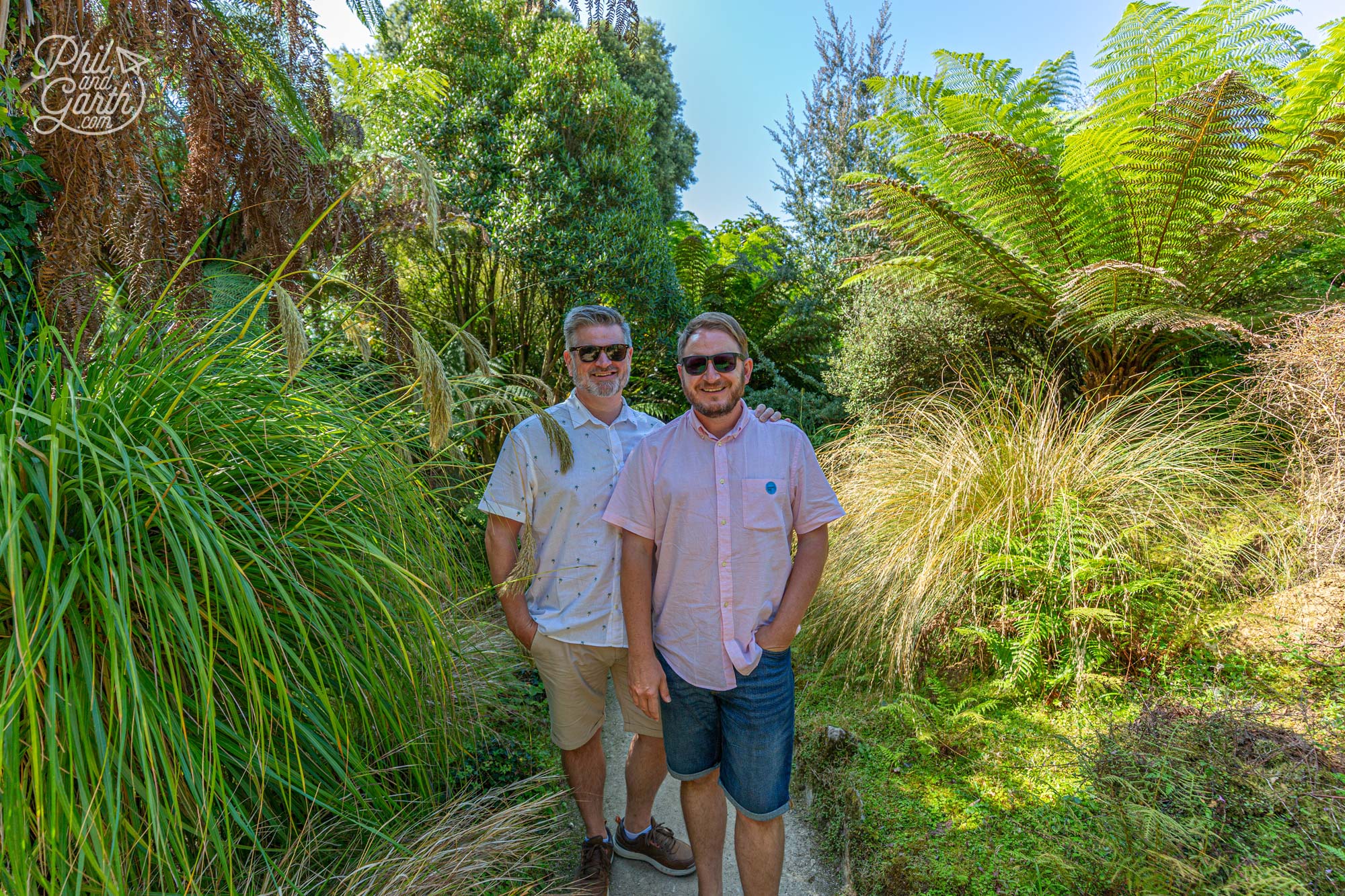
Phil and Garth in the New Zealand garden
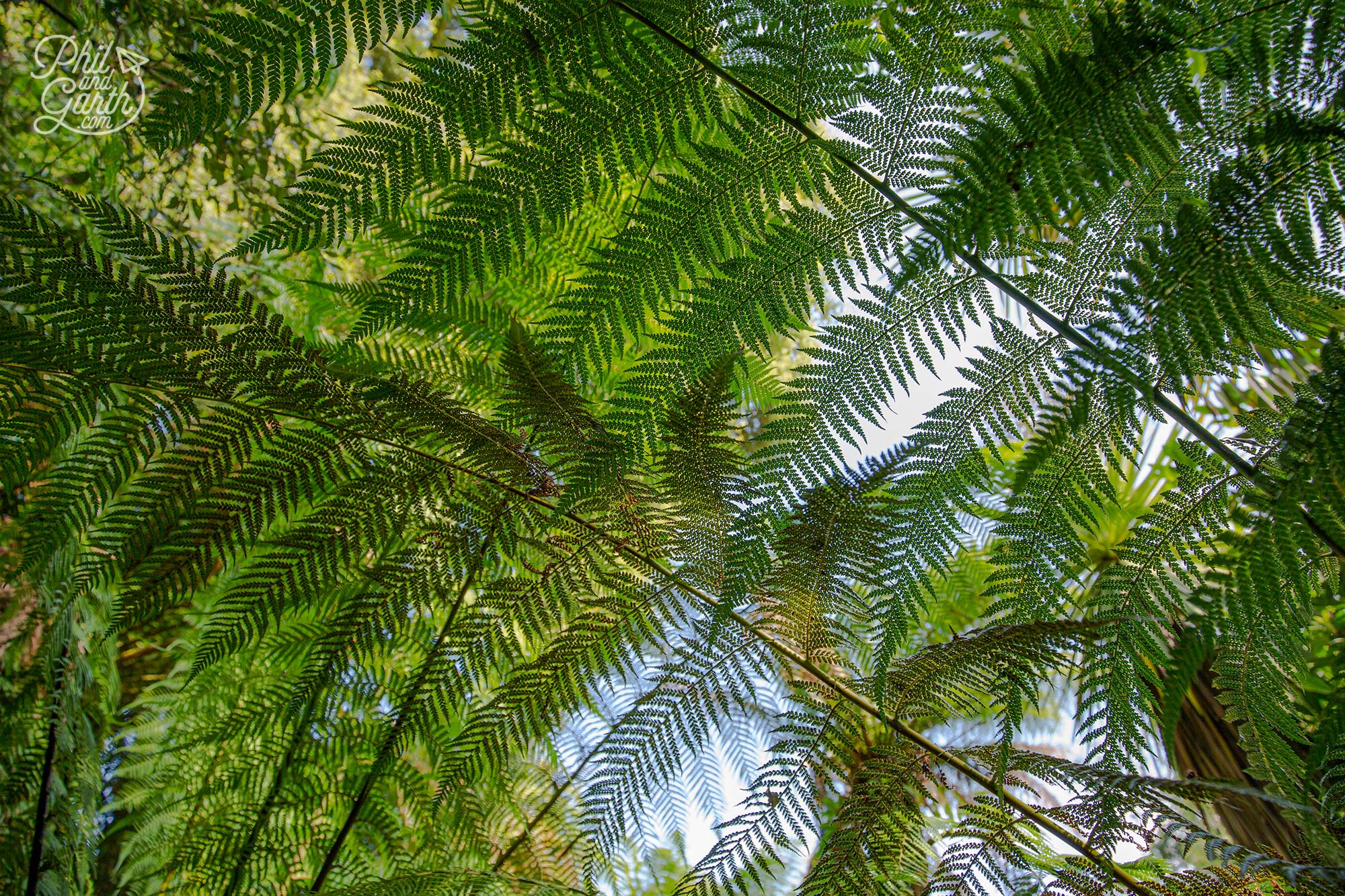
Parts of the New Zealand Garden have a canopy of tree ferns
Sundial Garden
The Sundial Garden is a delightful walled garden with large herbaceous borders full of colourful flowers. There are a few benches to relax at and watch the butterflies and bees. We took some time photographing plants we liked for inspiration to take home. This garden was a favourite of the Tremayne family because it was the closest garden to their house.
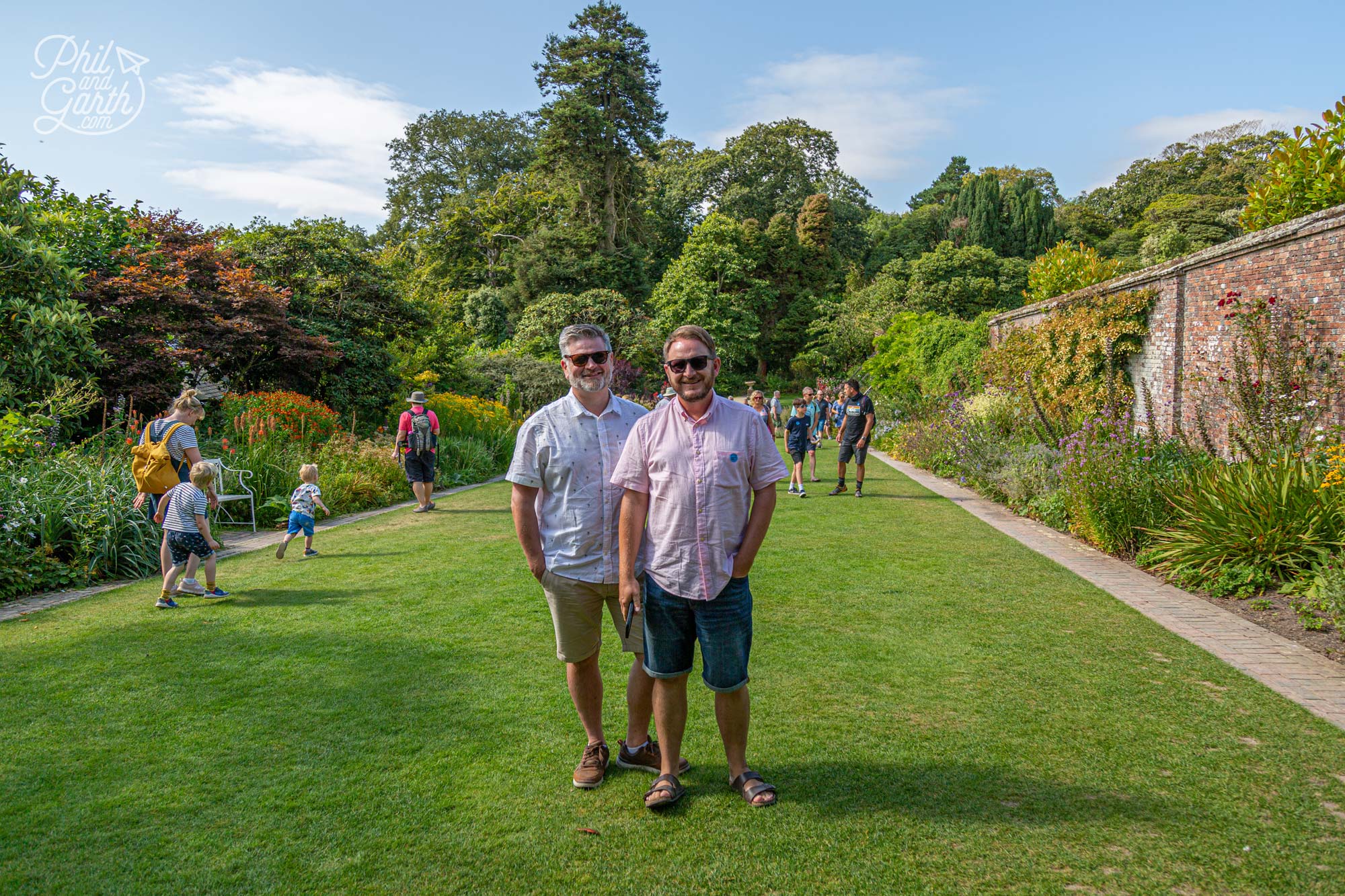
Phil and Garth at the walled Sundial Garden with it’s impressive herbaceous borders
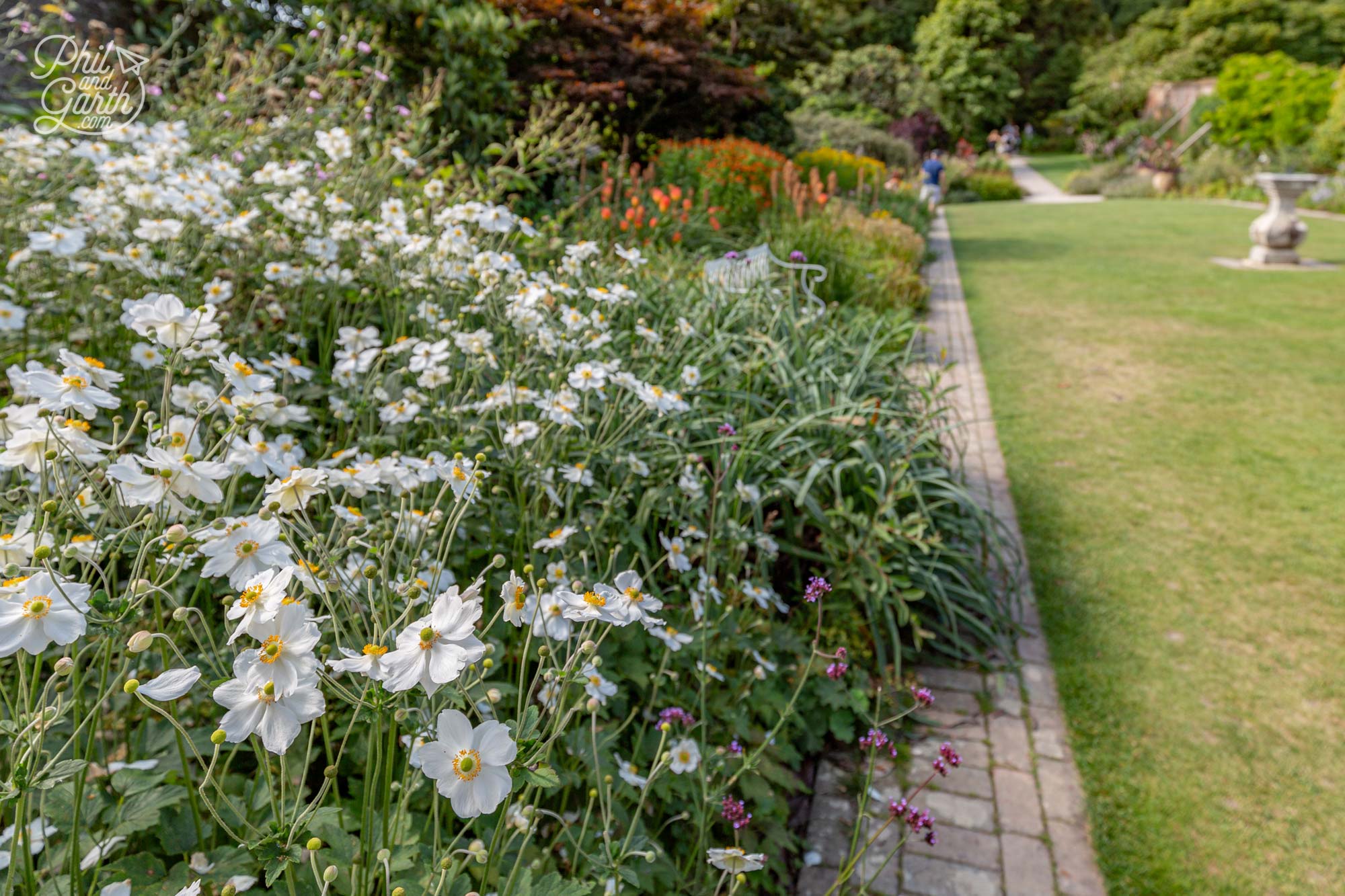
Japanese anemones, crocosmia and red hot pokers fill the borders
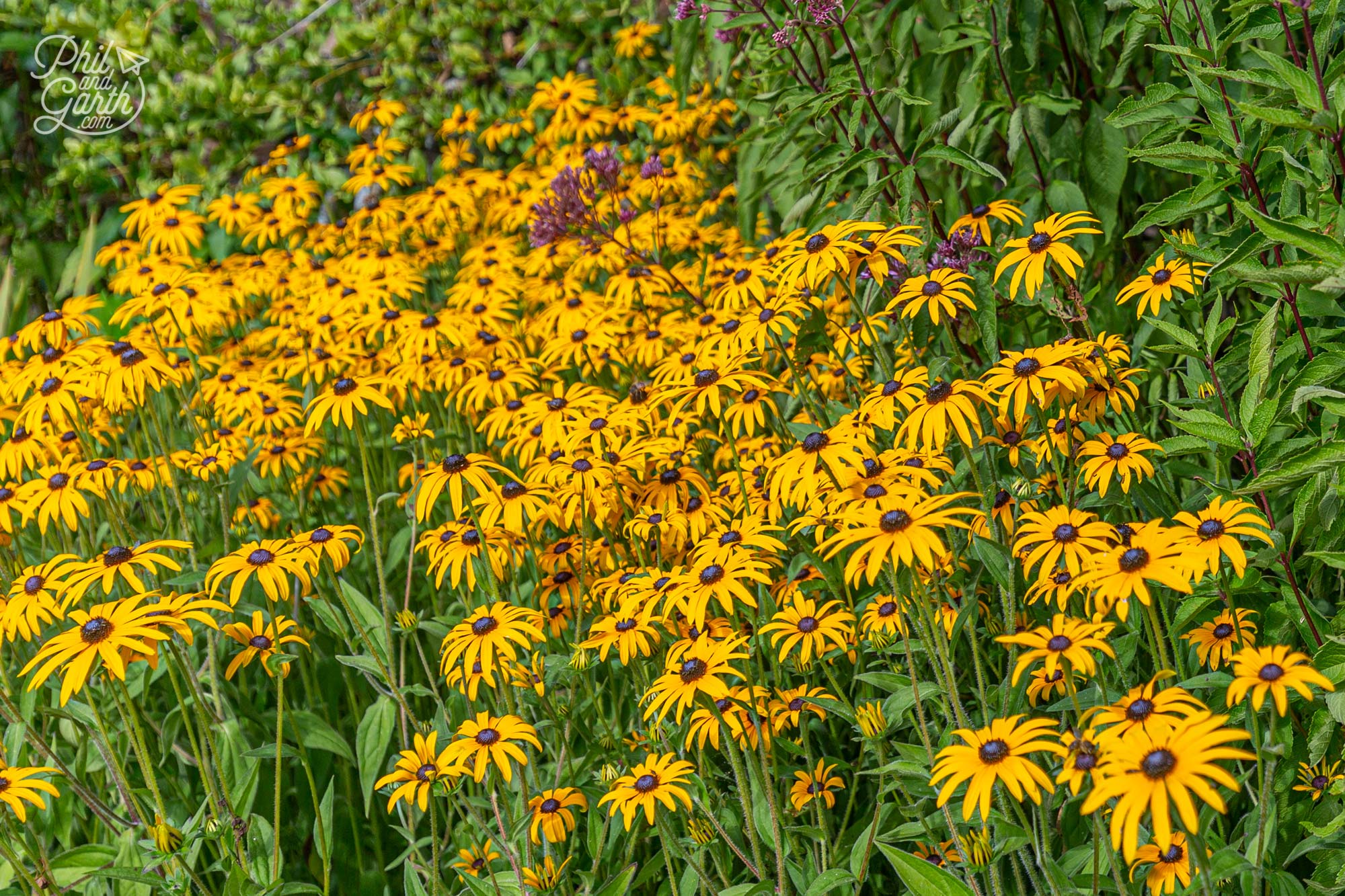
We love these Black-eyed Susan Rudbeckia plants and have them in our garden for late summer colour
The Italian Garden
Created in 1906 this small understated garden was Jack Tremayne’s secret retreat. Built to remind him of his beloved Italy.
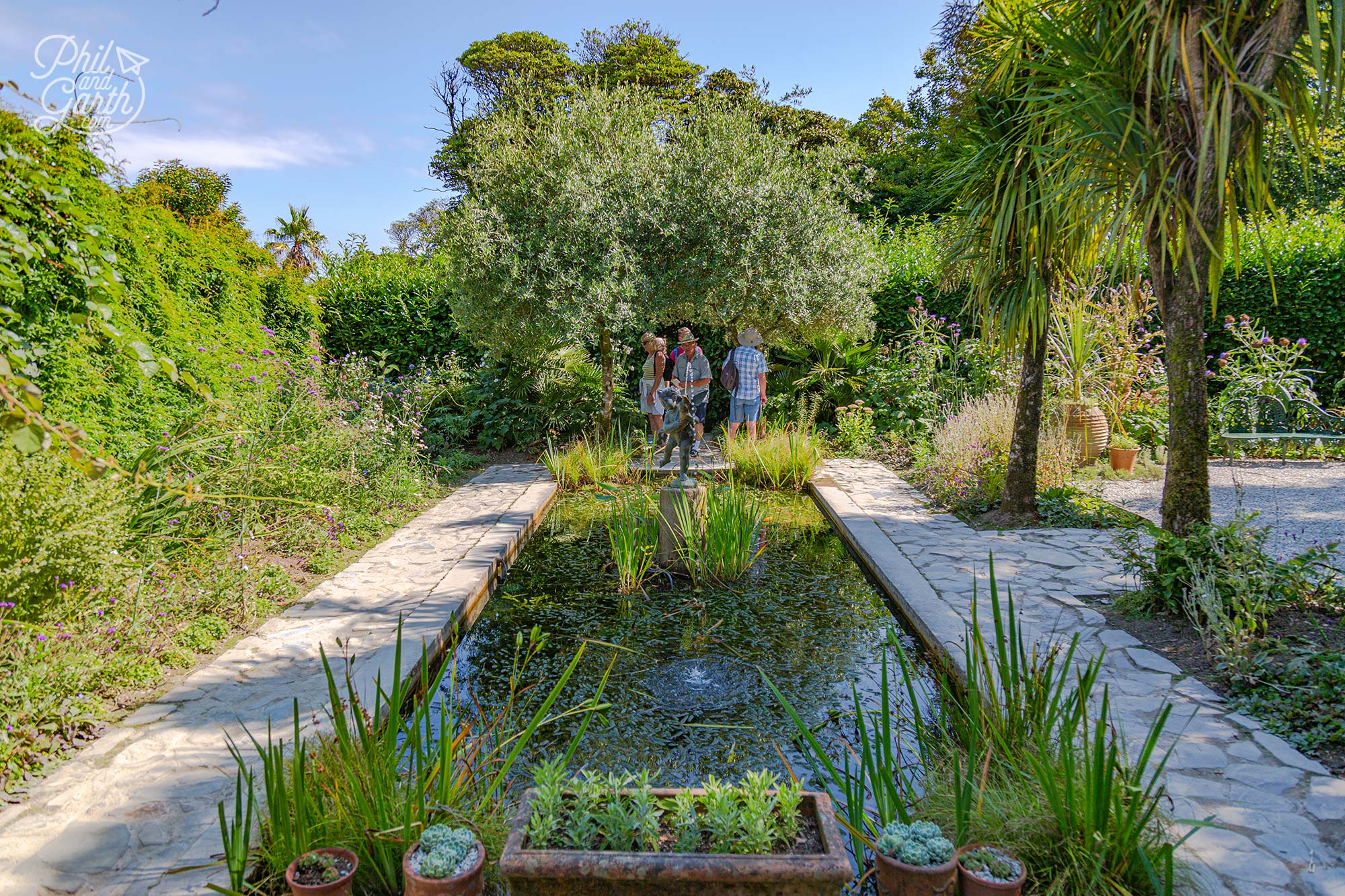
The Lost Gardens of Heligan’s secret Italian Garden
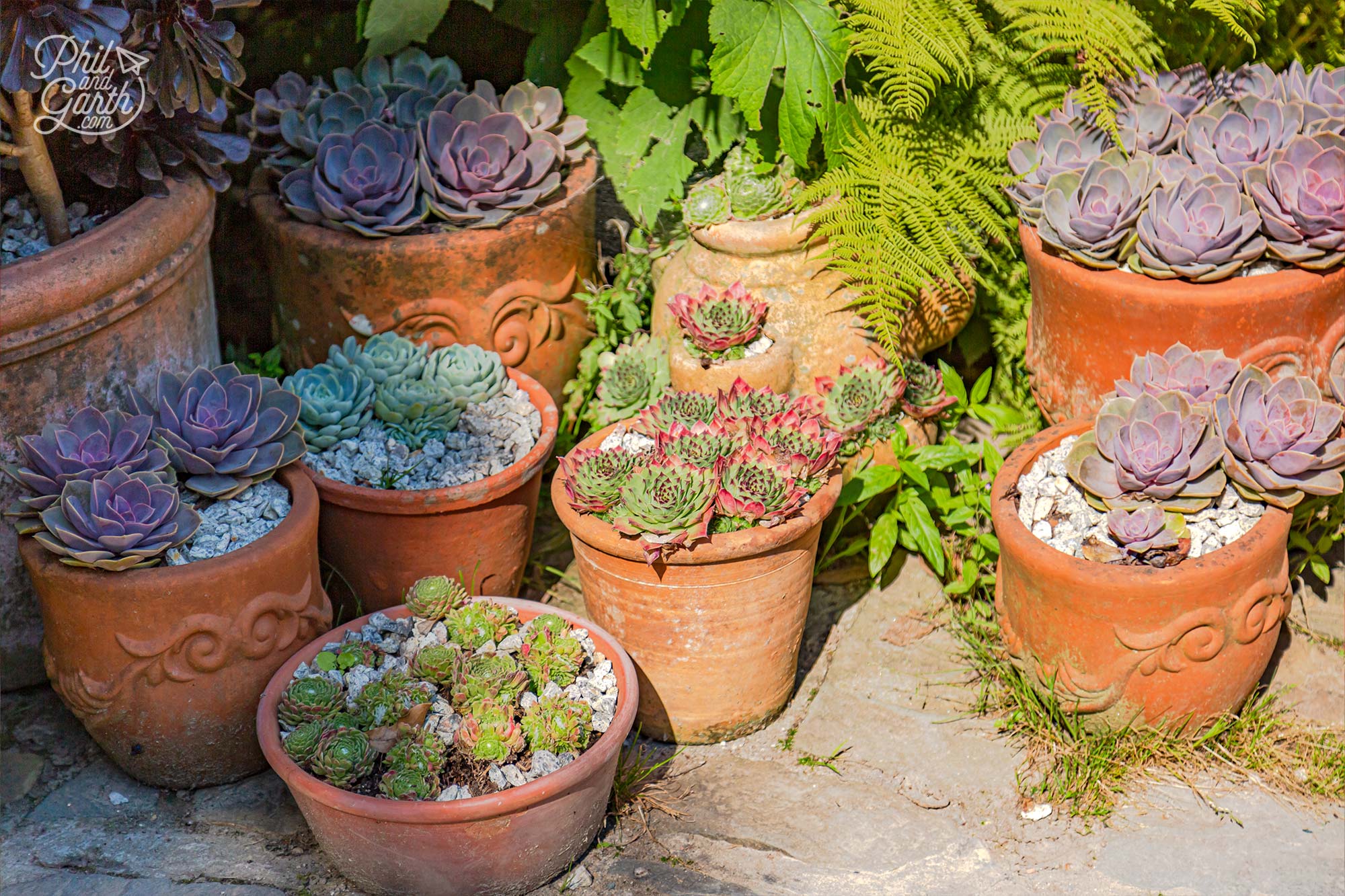
Potted succulent plants in the Italian Garden
3. The Estate
Away from the restored pleasure gardens is the wider estate of the Lost Gardens of Heligan. Worth noting everything from here is downhill … so remember to pace yourself for the return journey! The Estate is much wilder, highlights include the subtropical Jungle Valley, Lost Valley, Woodland Walk, Home Farm and East Lawn for children.
Home Farm
First up is the Home Farm with breeds of rare and heritage livestock. We saw pigs, sheep, chickens and horses. There are lots of signs to learn about the animals and the traditional practices used to manage the land.
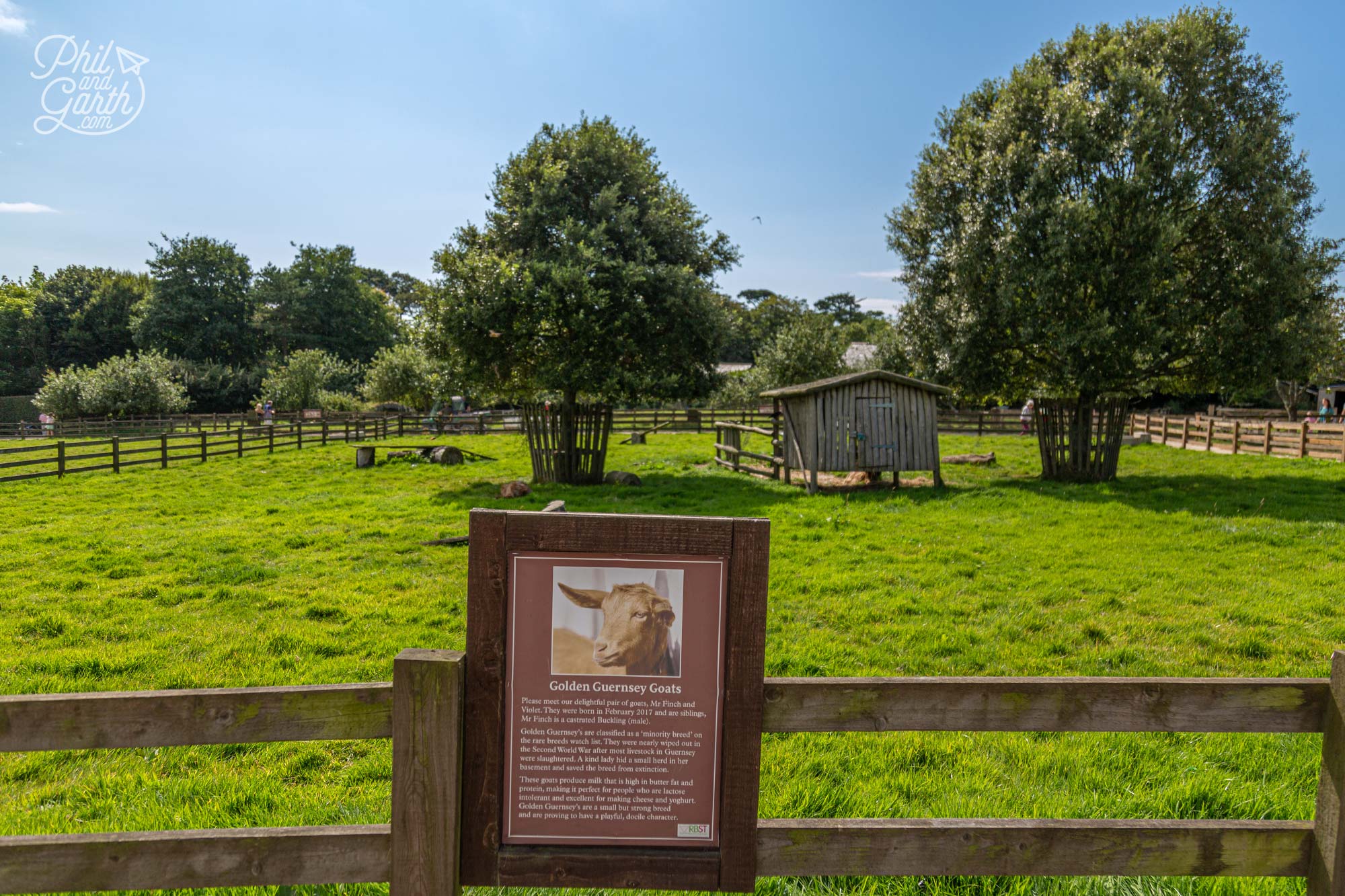
Kids will love Home Farm with heritage animals
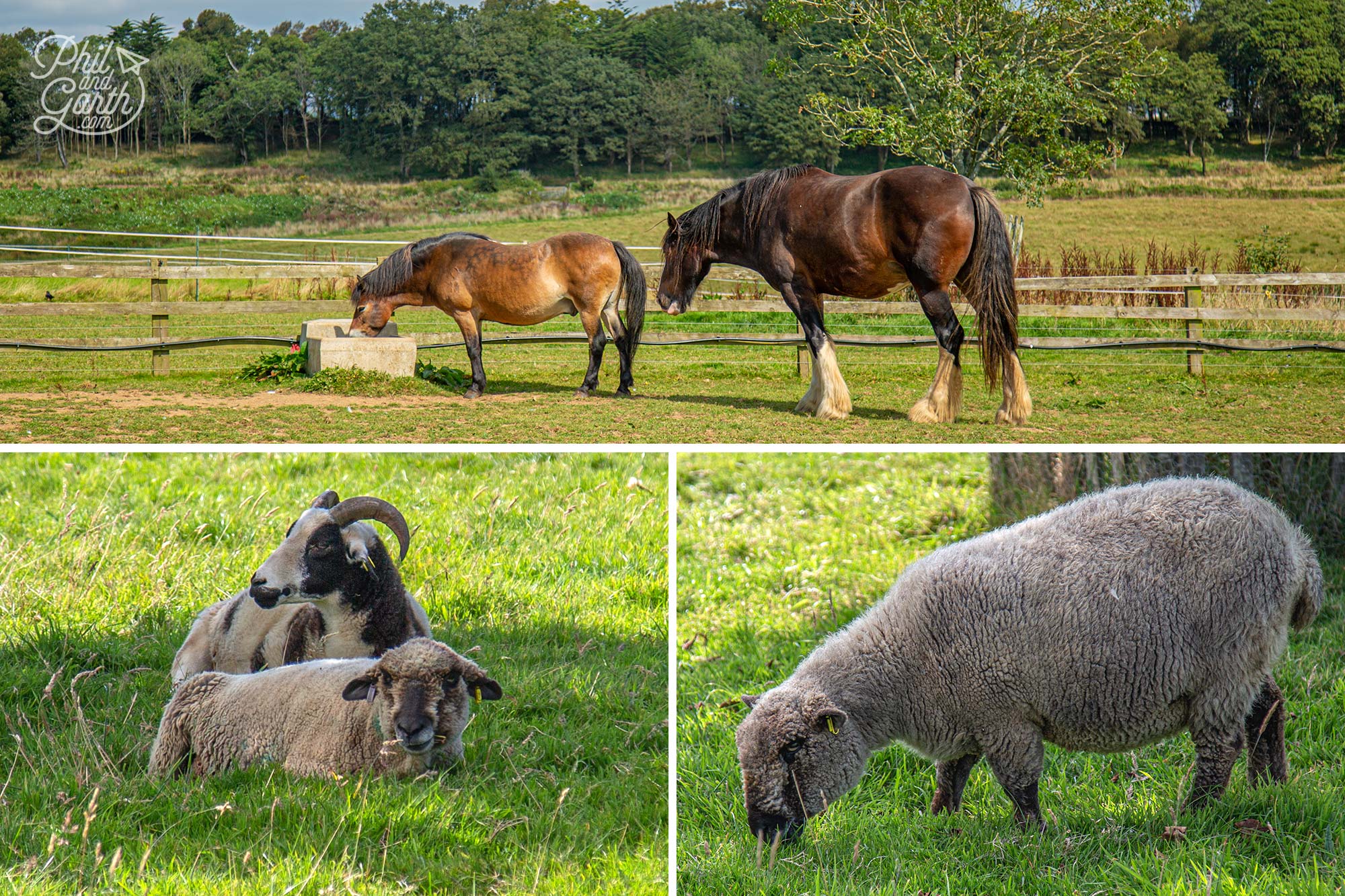
Lots of paddocks to explore
The Barn
Inside the barn there was a local dahlia flower competition being held, we voted for the best display! Dahlias are such stunning flowers, Phil loved the pom-pom variety and Garth like the ones that look like fireworks.
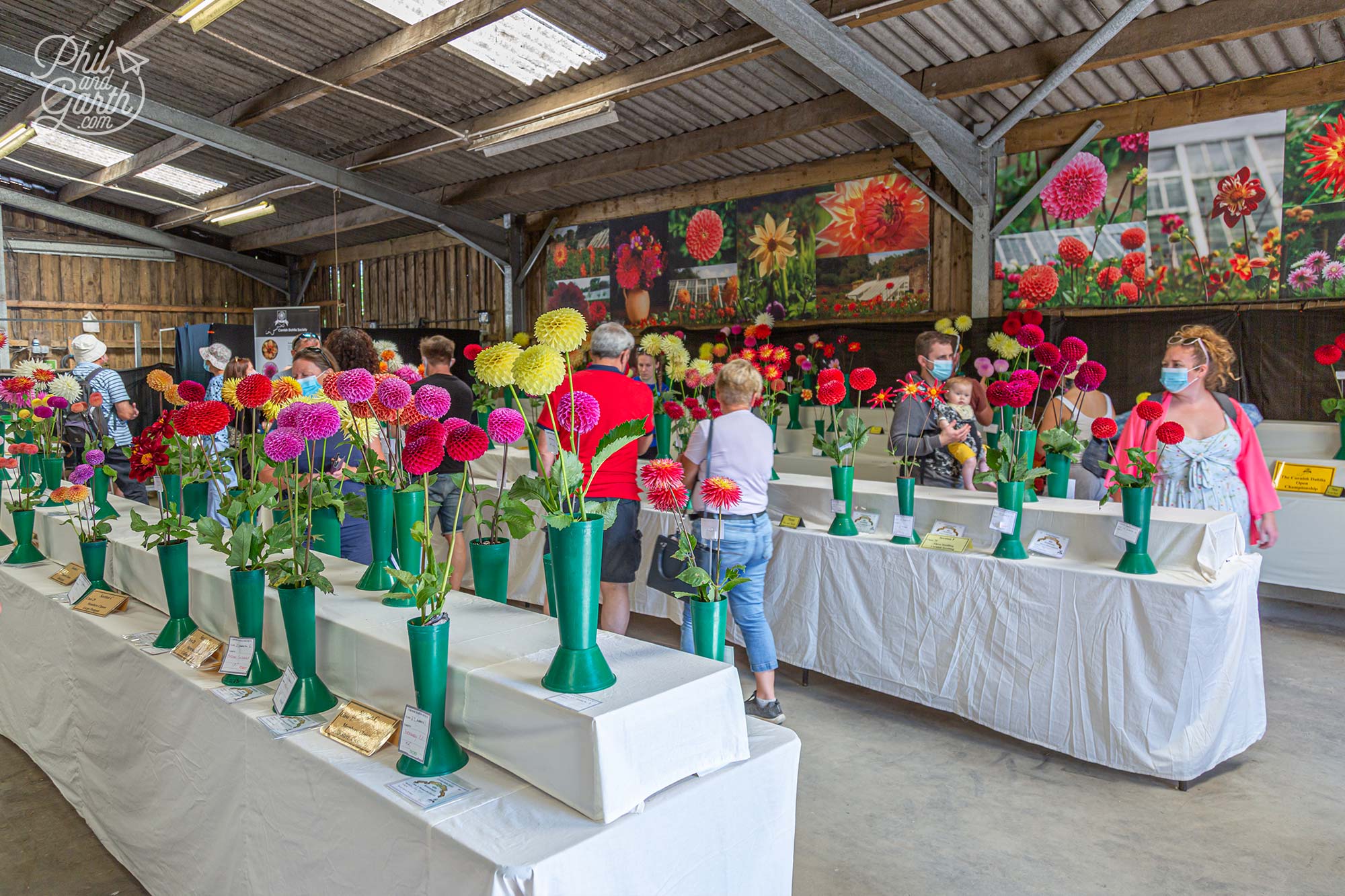
Inside a barn a dahlia flower show been judged
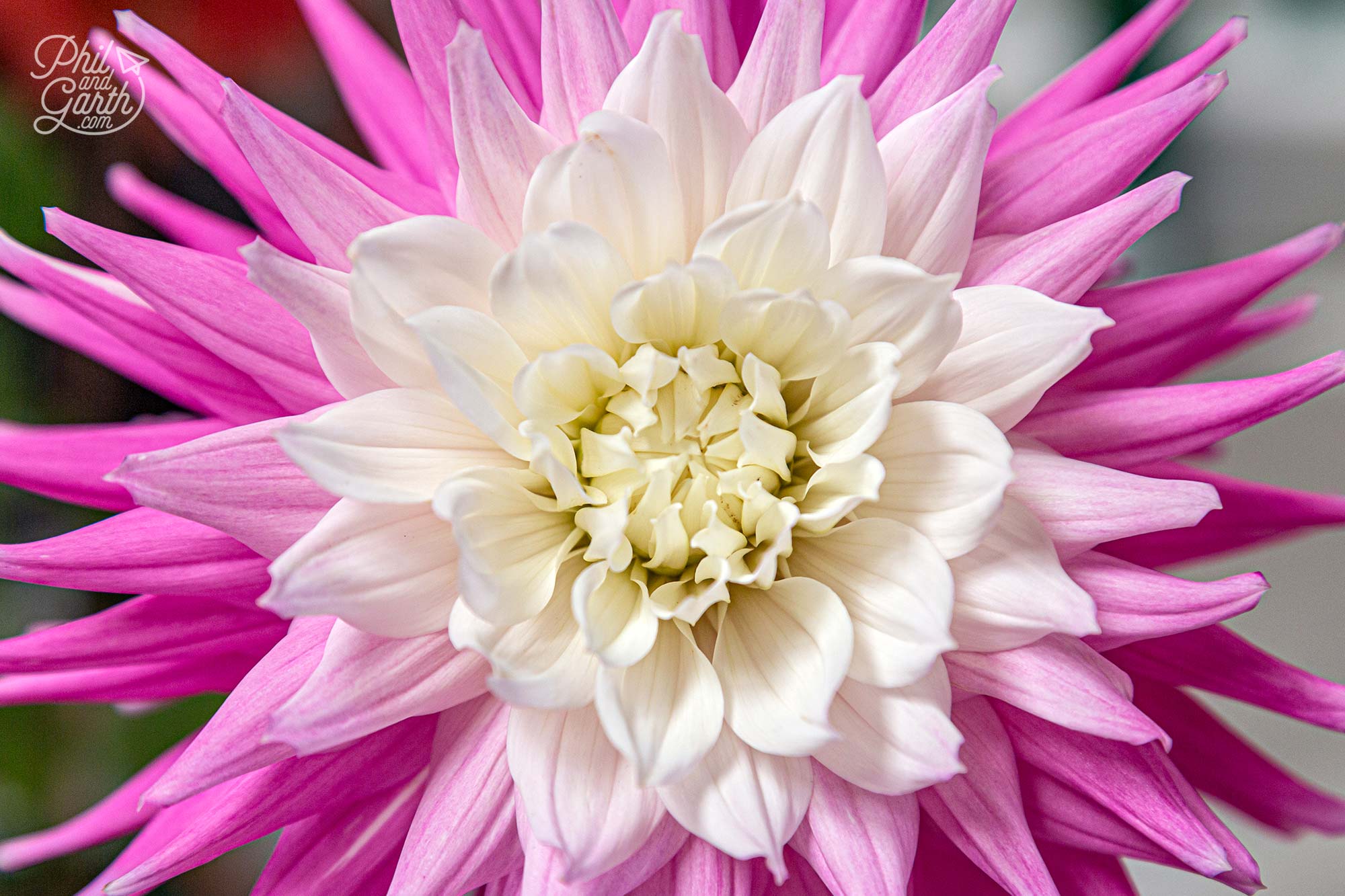
Dahlias are such stunning flowers
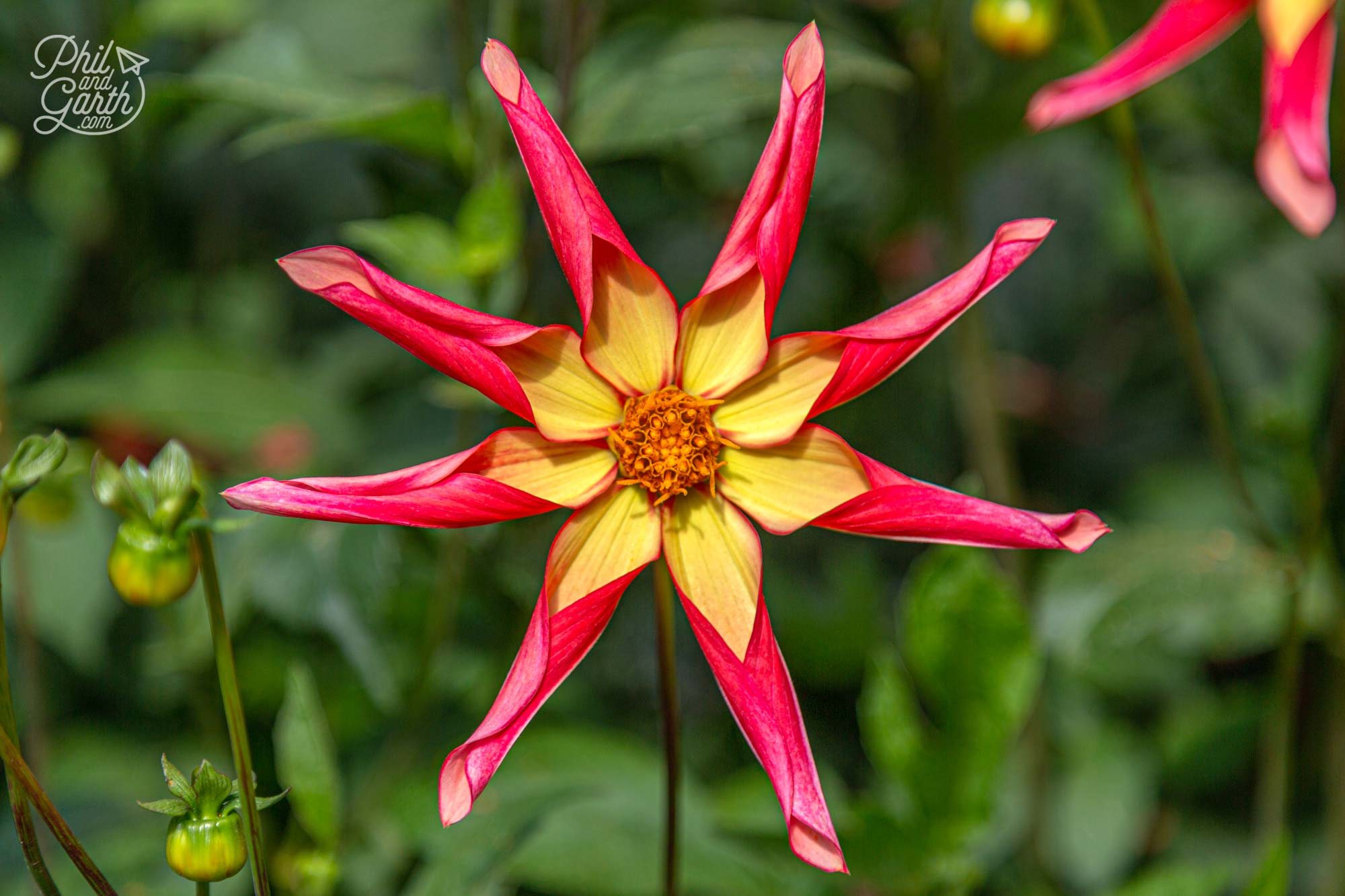
How stunning is this dahlia? looks like a firework
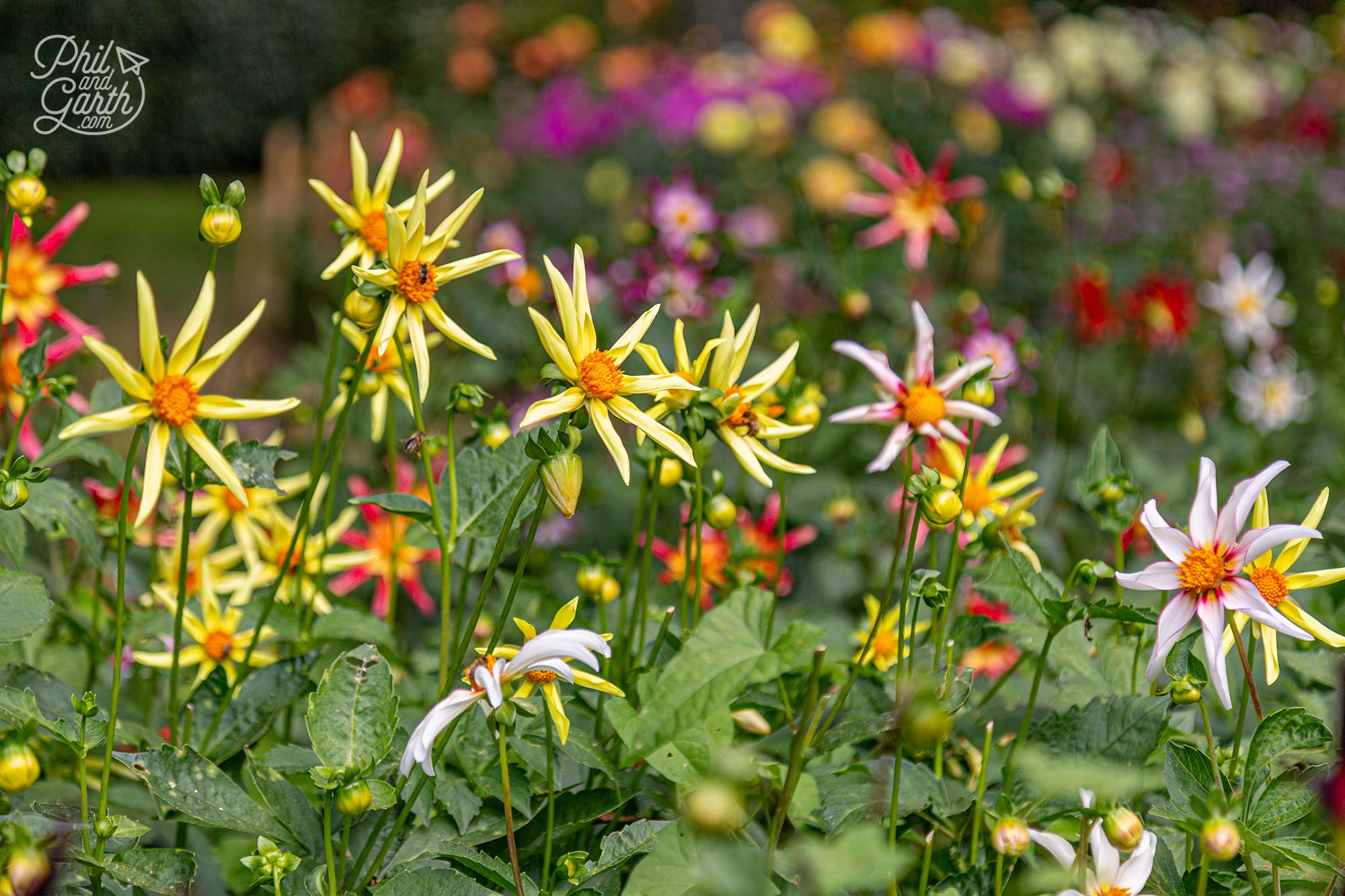
We visited at the end of August so the garden was bursting with colourful dahlias
East Lawn
After the Home Farm before you reach the Jungle Valley is a large children’s play area on the East Lawn.
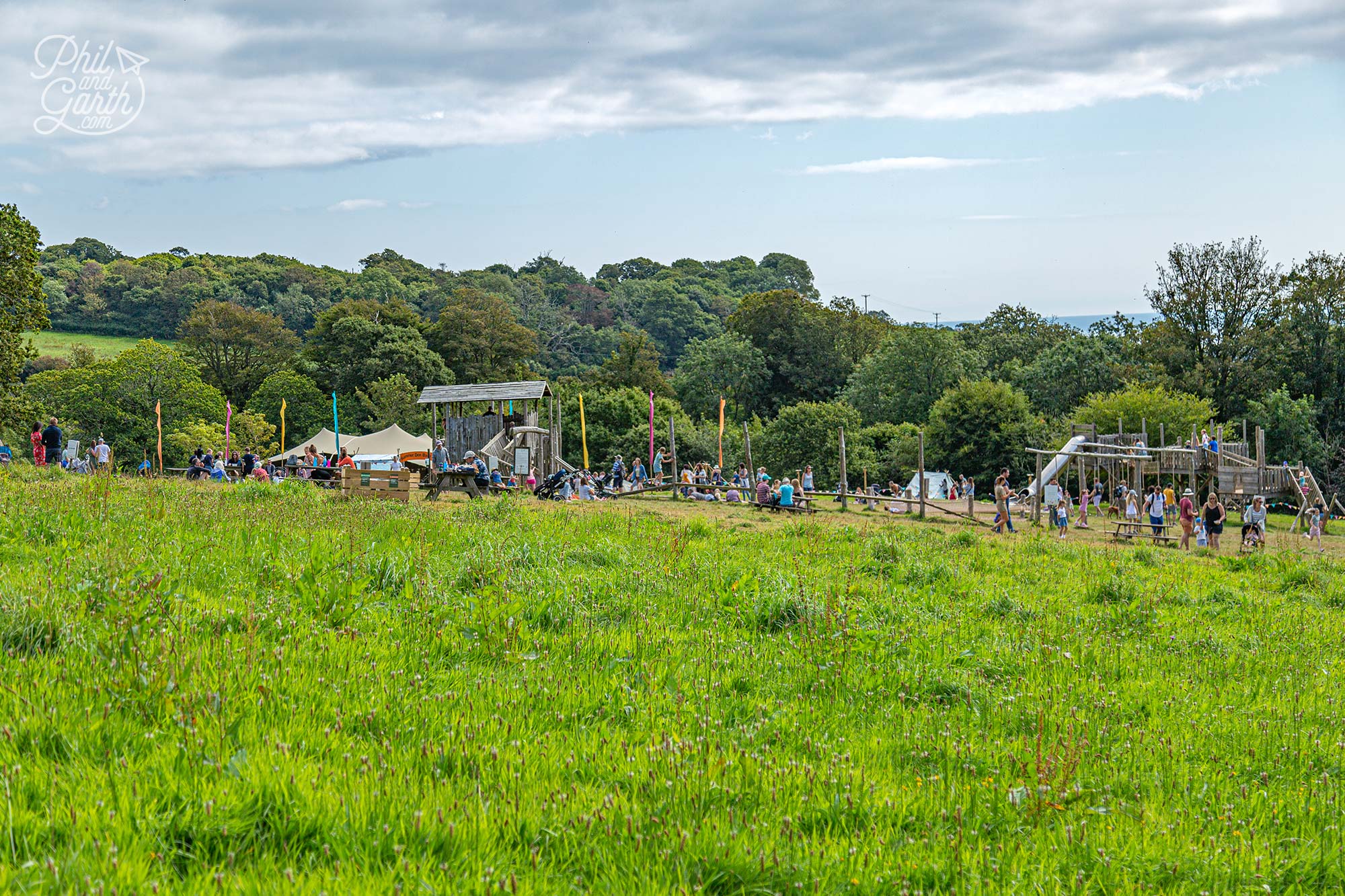
Jungle Valley
It’s now a steep descent to the Jungle Valley. Described as “the UK’s only outdoor jungle” we absolutely loved this part of the Lost Gardens of Heligan because it’s intimate and feels like you are in some far-flung tropical destination. So how can all these subtropical plants grow in England? Well, Cornwall is one of the only places in the UK that is frost-free. The jungle is on a steep-sided valley that has its own little microclimate. It’s 5 degrees warmer than the rest of the estate which allows all these exotic plants to thrive and survive. Most of these plants from the Americas and Asia were brought to the UK by intrepid Victorian explorers.
4 swampy looking ponds feed the gunnera (giant rhubarb) plants with their huge leaves plus hundreds of giant tree ferns. This is the largest collection of tree ferns in Europe. The raised boardwalk takes you past the different textures and foliage of bamboo groves, palm trees and banana plantations. The bamboo groves reminded us of seeing the towering bamboo trees of Kyoto, Japan and Chengdu in China.
We also did our best Indiana Jones impression crossing the wobbly Burmese rope bridge. This is the busiest part of Heligan, where we had to queue for about 30 minutes for Heligan’s only theme-park style attraction.
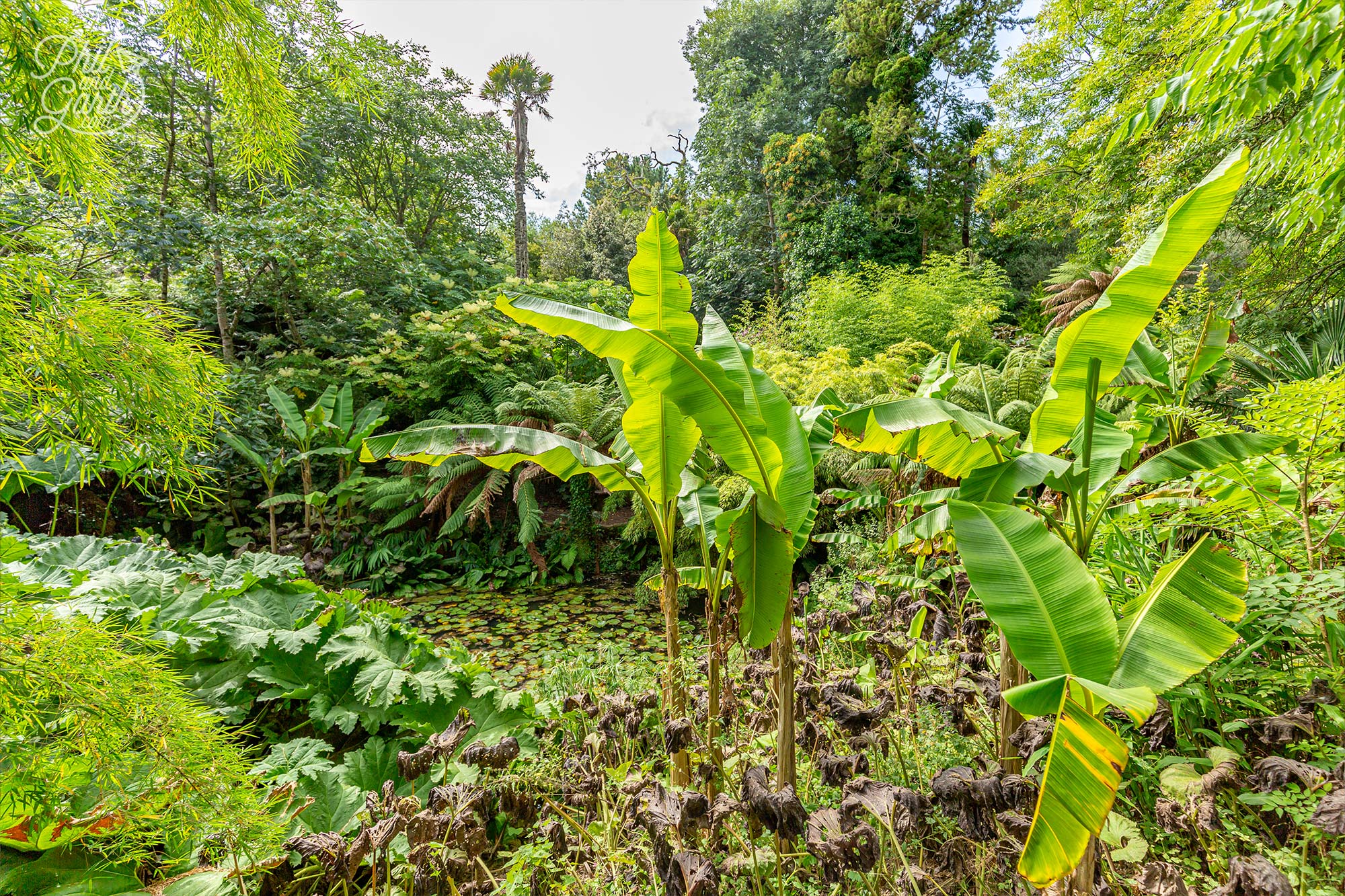
Our favourite attraction of the Lost Gardens of Heligan – The Jungle valley
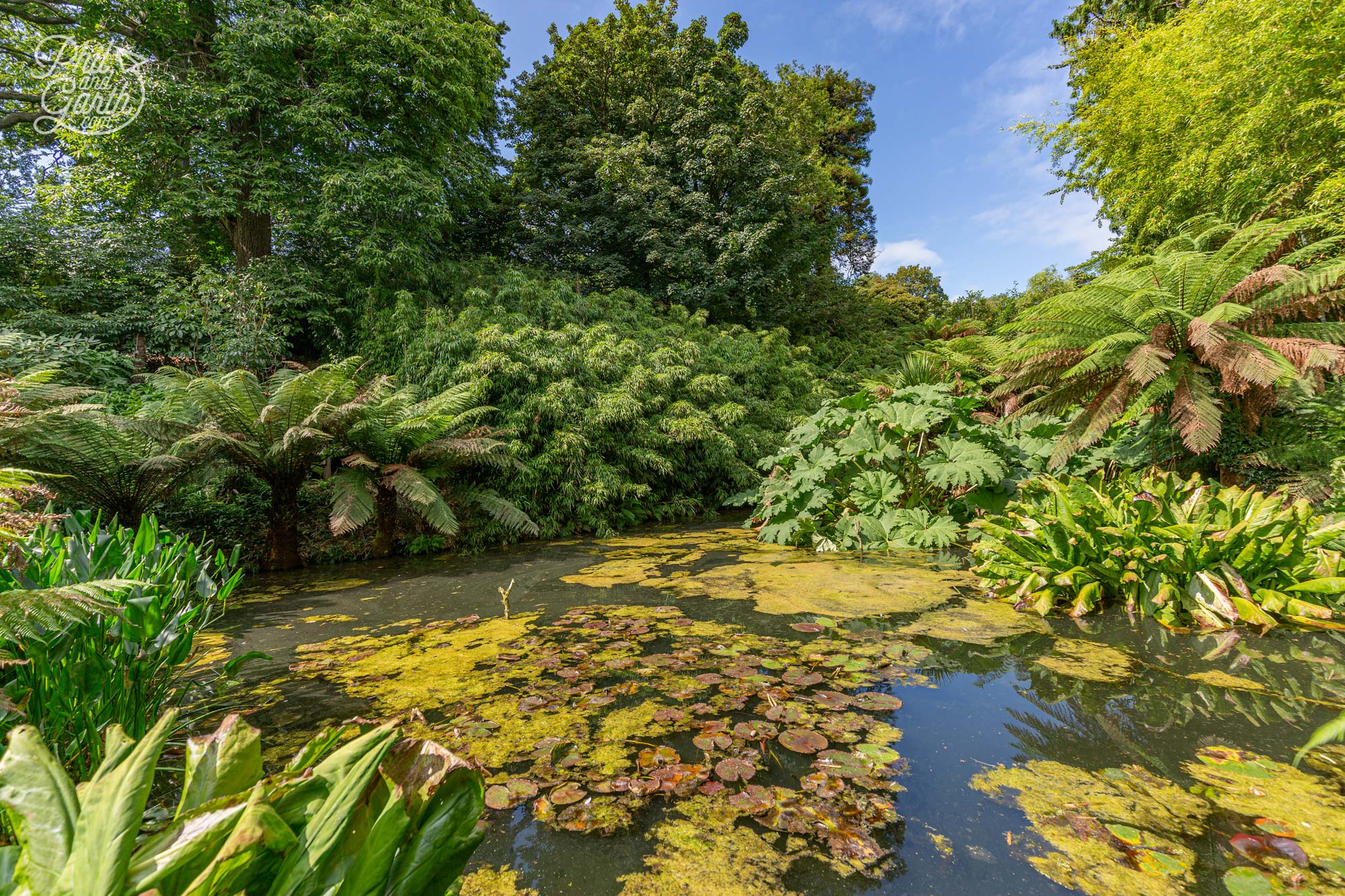
One of the 4 ponds in the jungle surrounded by sub tropical plants
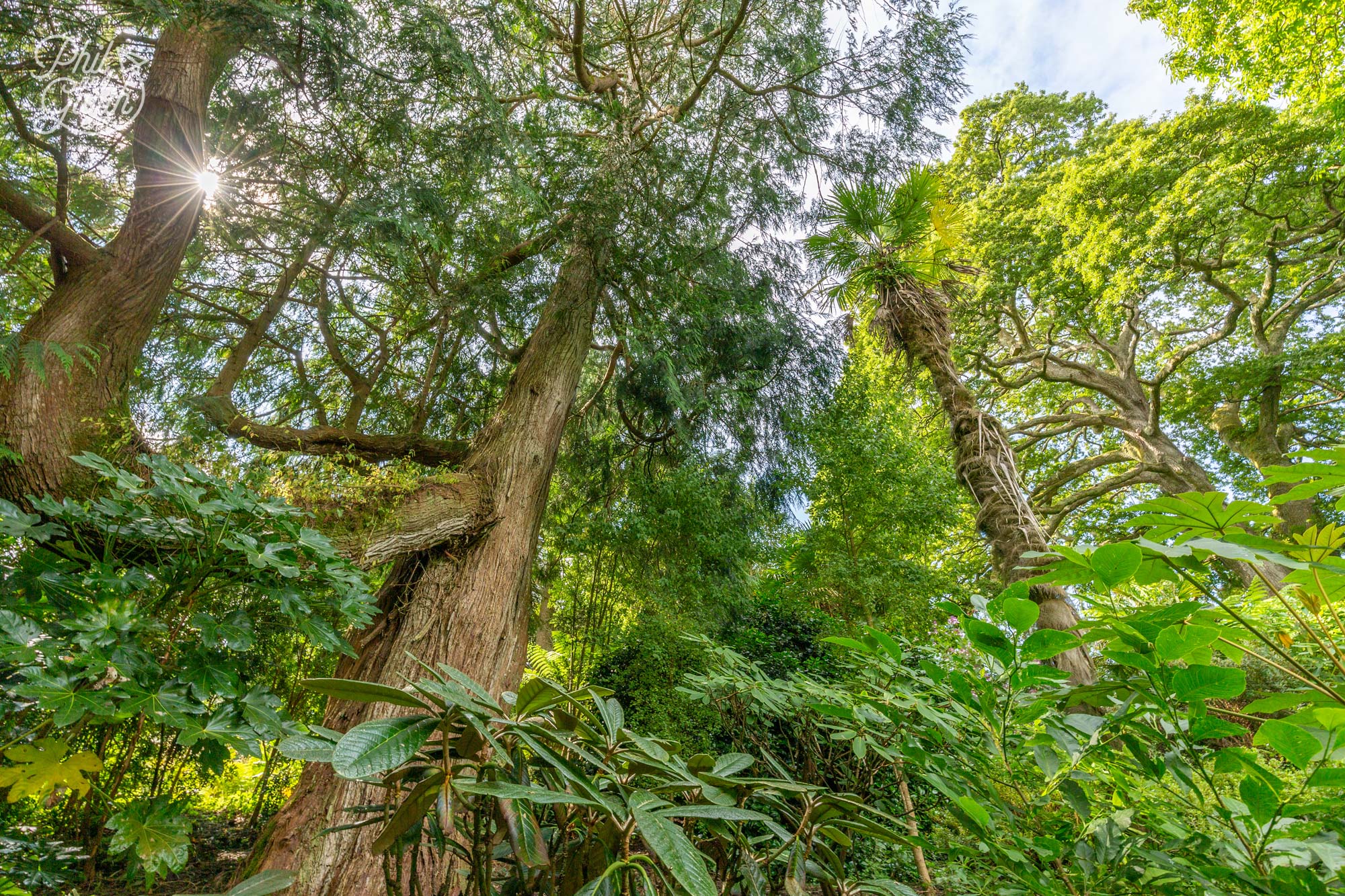
Looking up to the sky from the Jungle valley
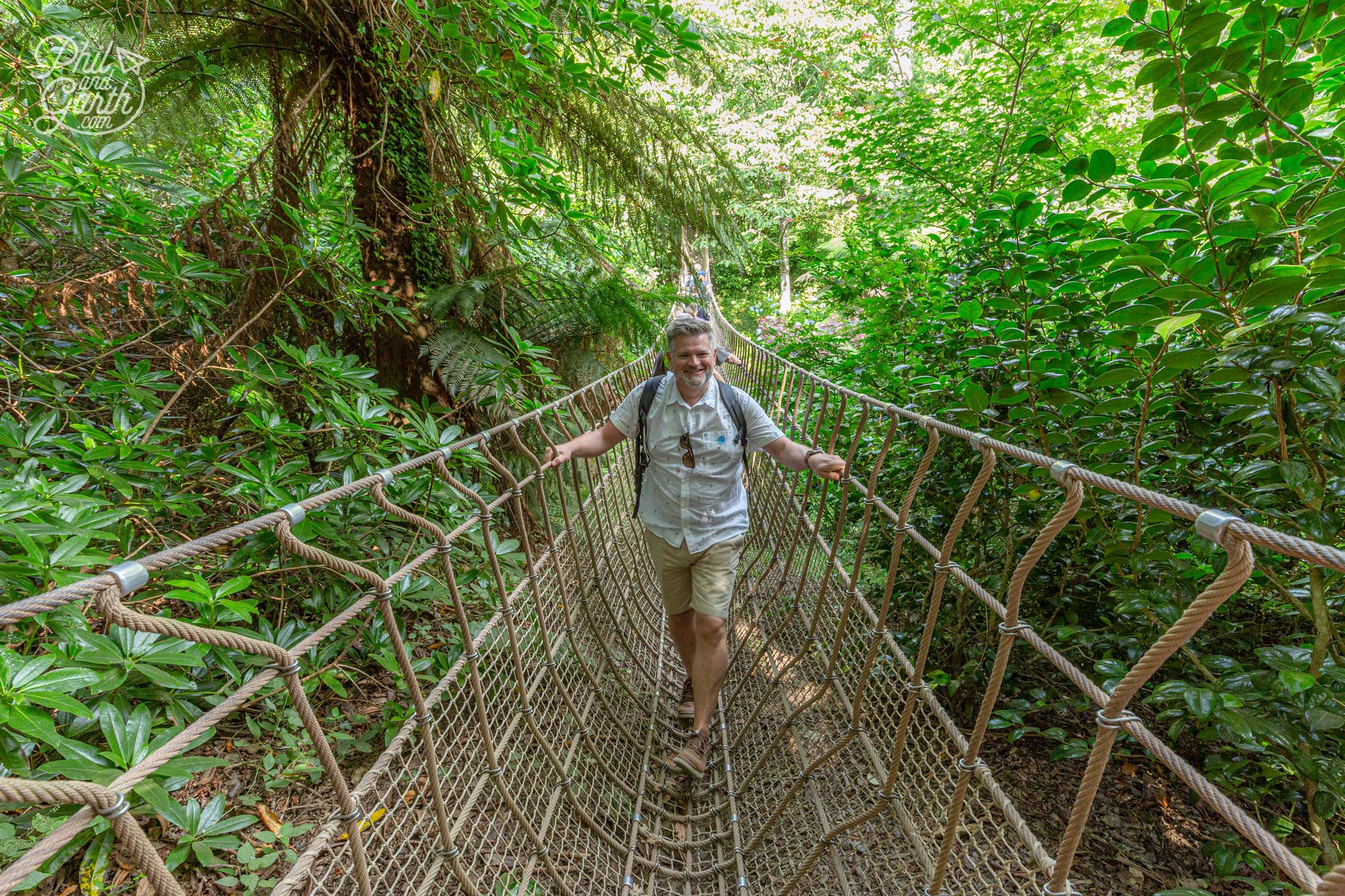
Phil crossing the Burmese rope bridge
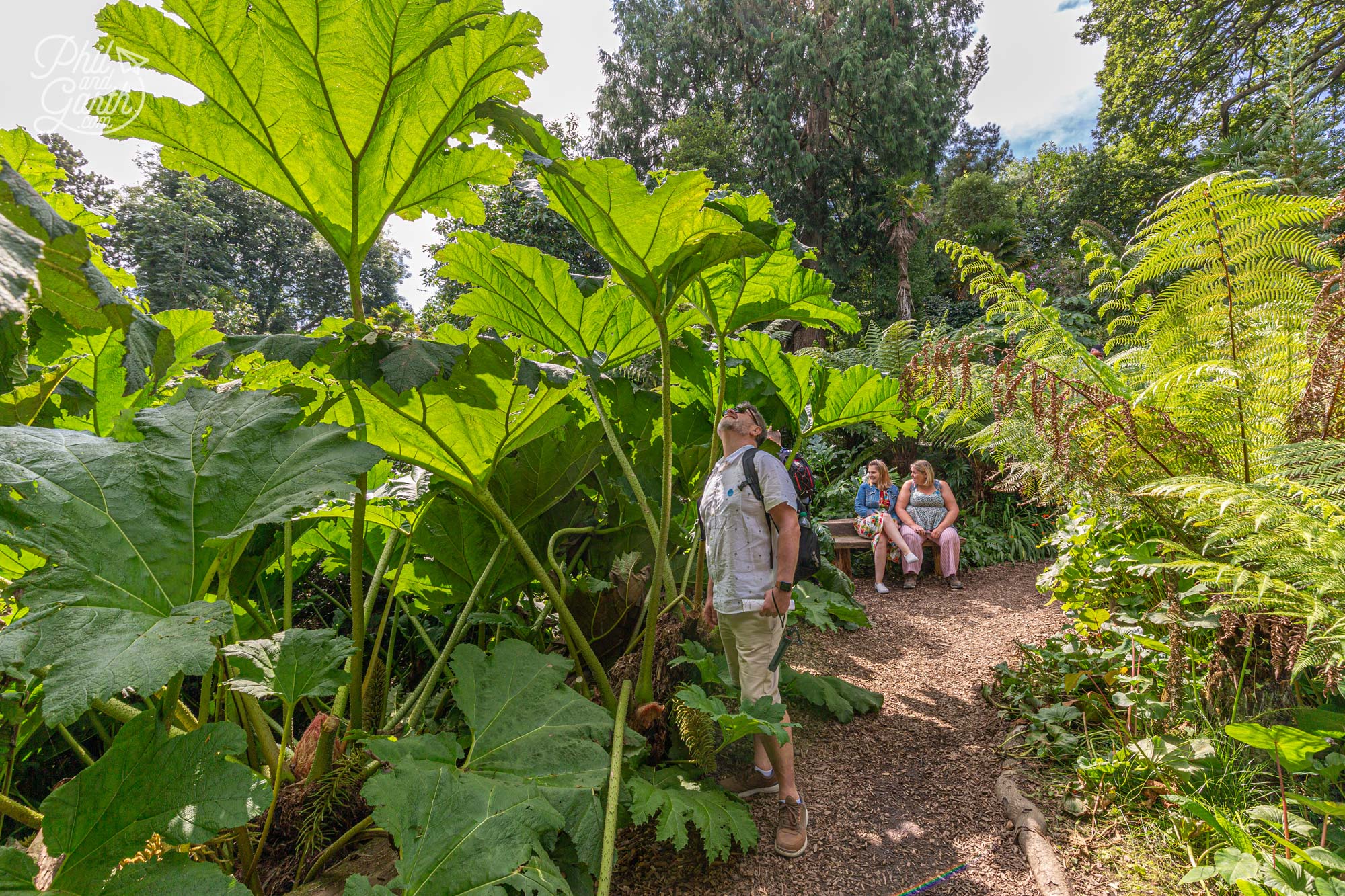
Phil under a towering Brazilian Gunnera – a giant rhubarb plant
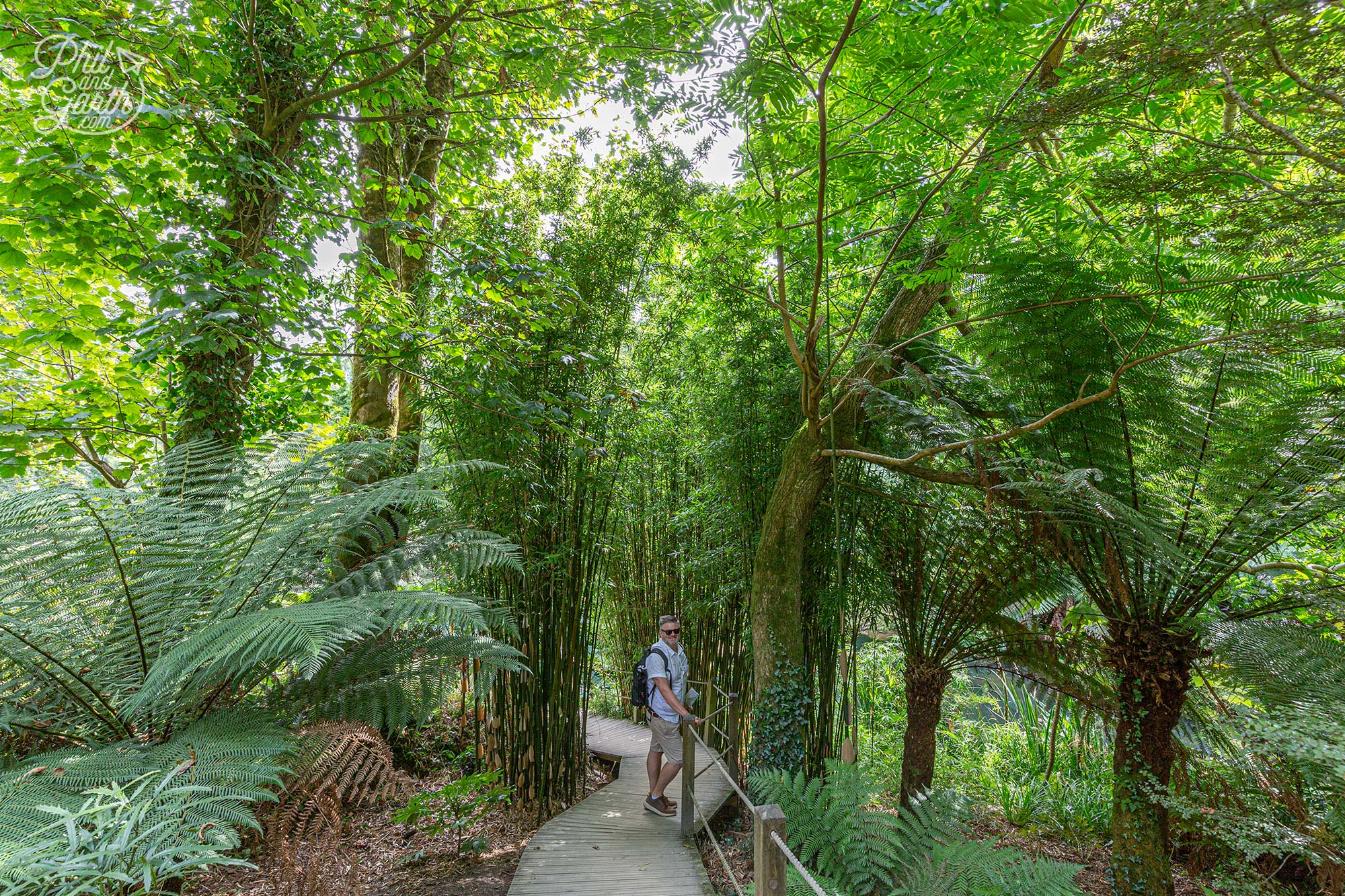
Phil next to one of the mini bamboo groves
Lost Valley
When you’re done in the Jungle Valley visit the neighbouring Lost Valley a popular spot for hikers to see ancient trees, wildflowers and ponds teaming with wildlife. In the Spring at Bottle Dump Hill, the valley is carpeted in bluebells. We liked the Charcoal Sculpture which depicts growth and decay, created by local sculptor James Eddy. The charcoal kilns further up the valley produce charcoal for the Heligan BBQ Hut and for artists, you can purchase some at their shop.
Worth noting this is the bottom of the estate which means it’s all uphill back to the exit via the Georgian Ride and Woodland Walk.
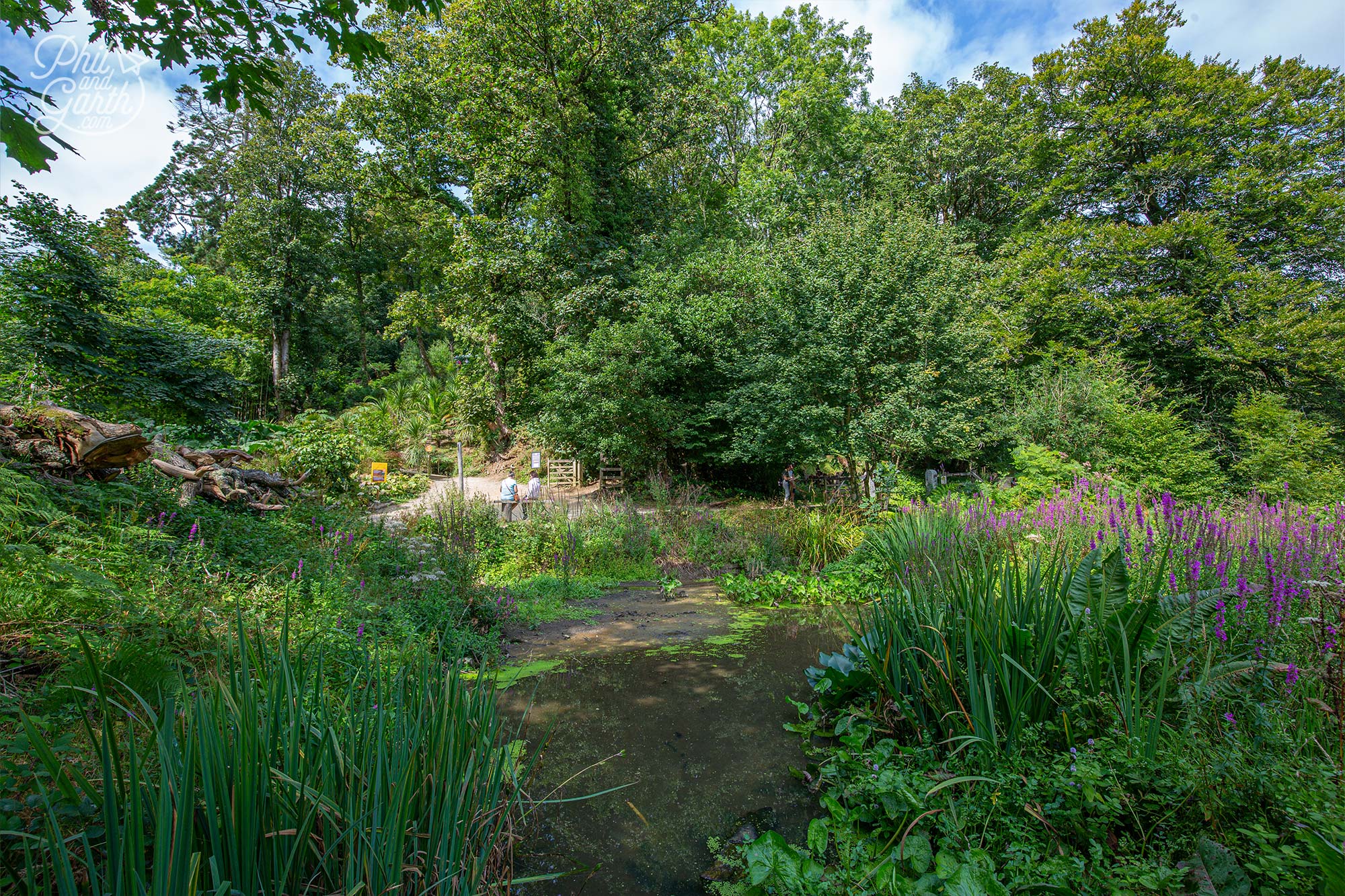
The Lost Valley – Heligan Gardens
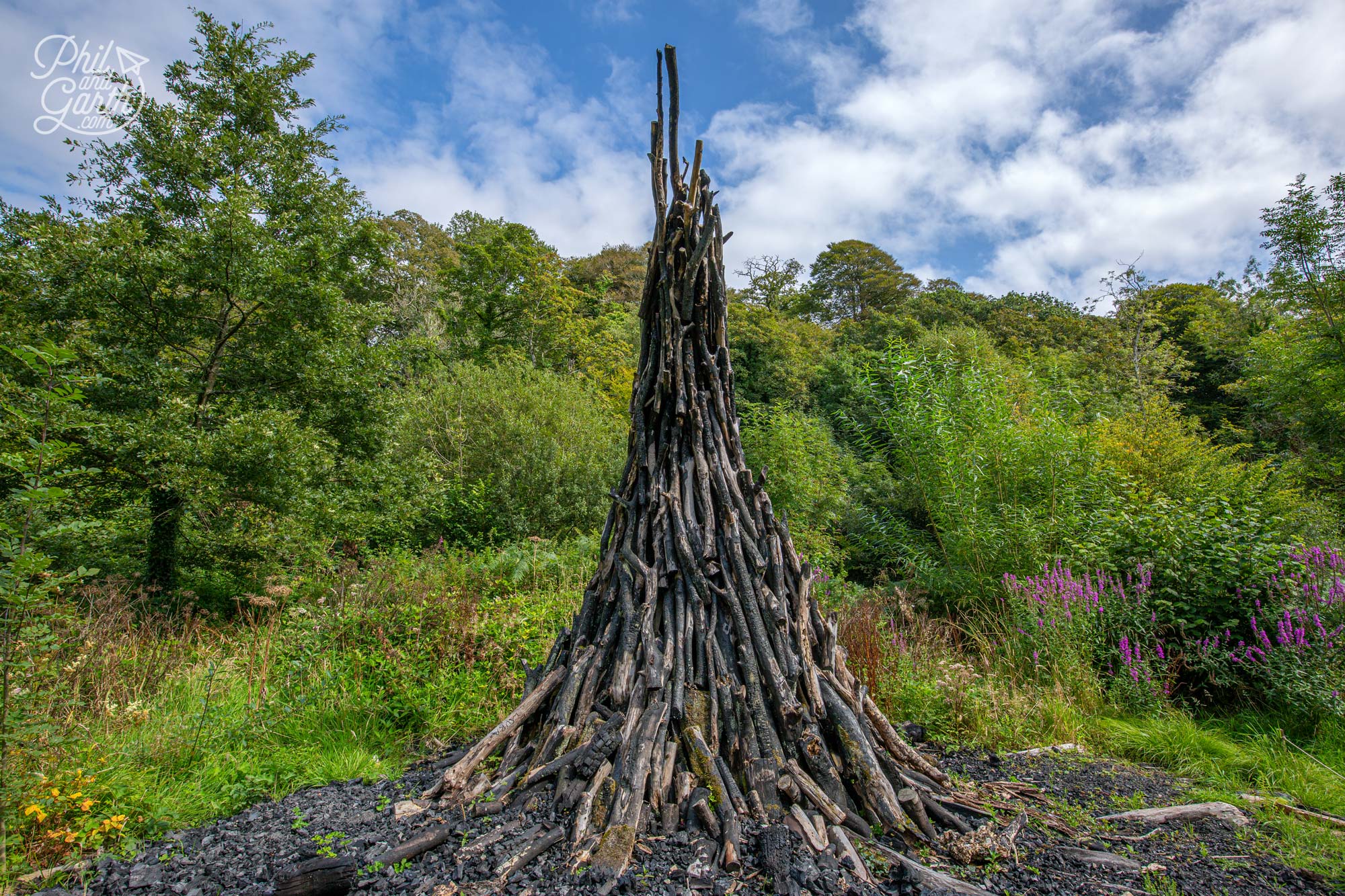
Heligan’s charcoal sculpture ‘Growth & Decay’ by Cornish sculptor James Eddy
Georgian Ride
The Georgian Ride is a scenic trail that leads to the Woodland Walk. It’s has a few attractions every 15 minutes, so there’s something to see – a bug hotel, an observation beehive and a wildflower meadow. Look out for the ancient English Oak Tree with torn branches that provide homes for bats and woodpeckers.
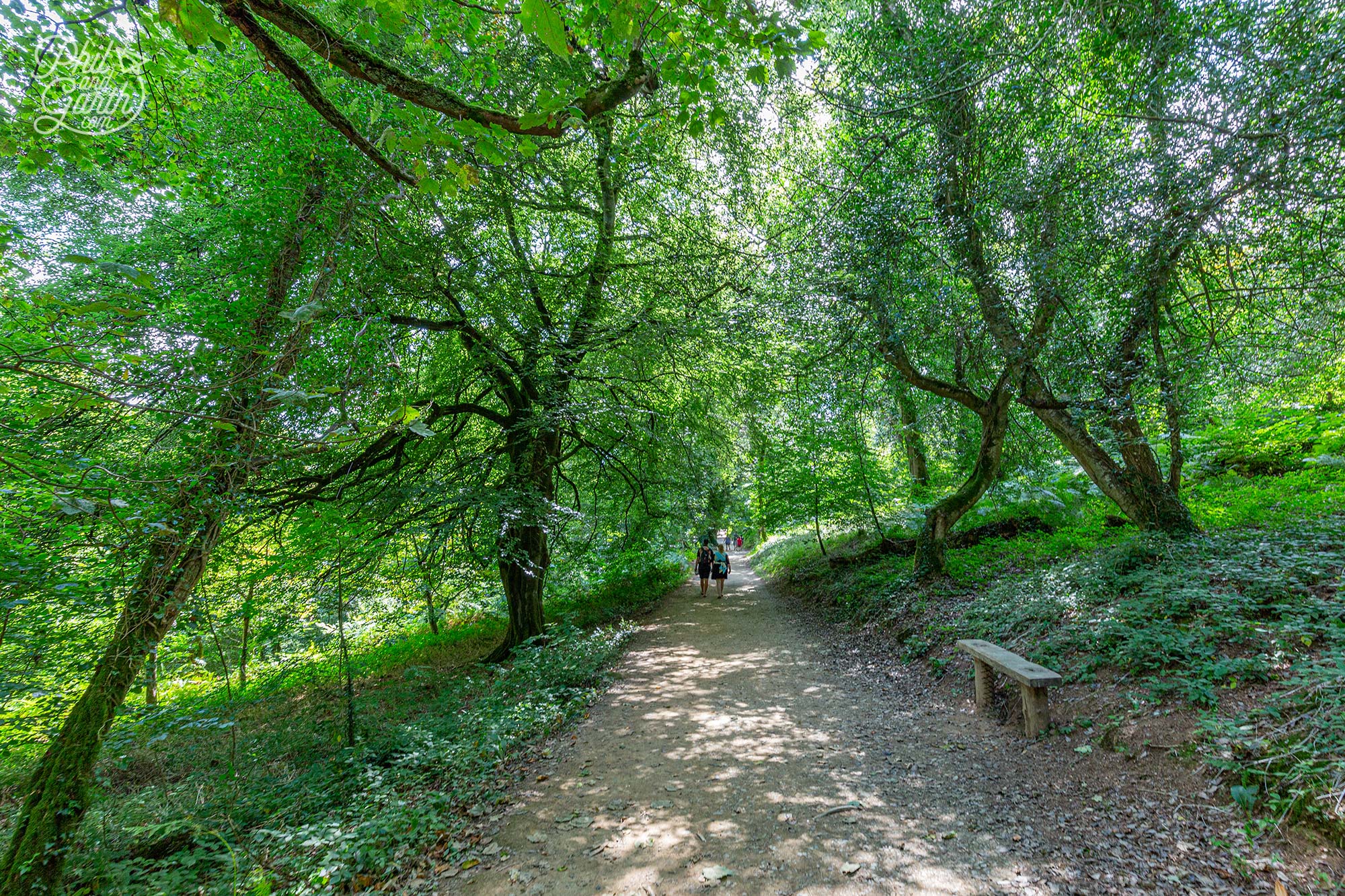
The Georgian Ride walk
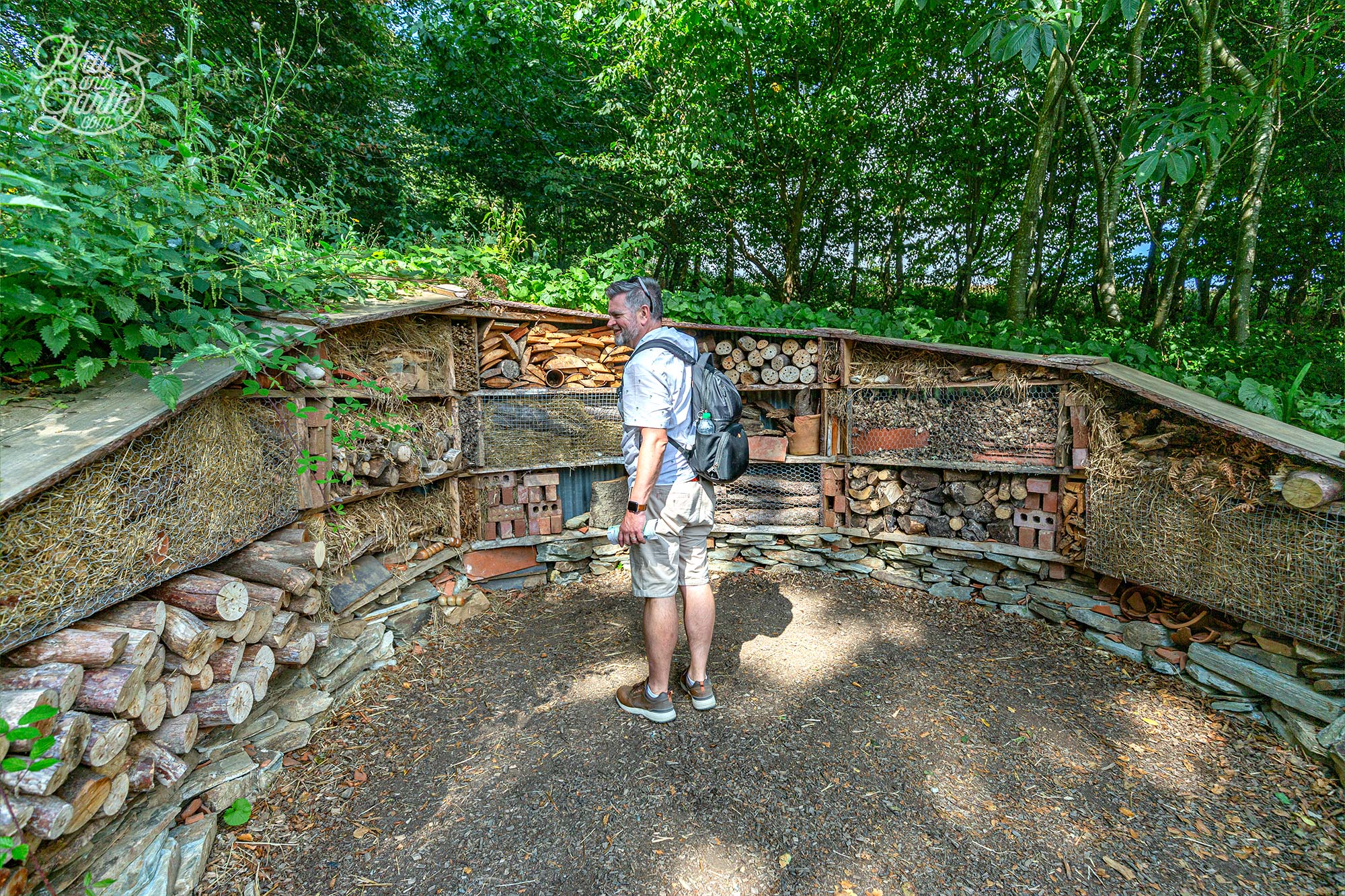
Further down the Georgian Ride is this fabulous insect hotel
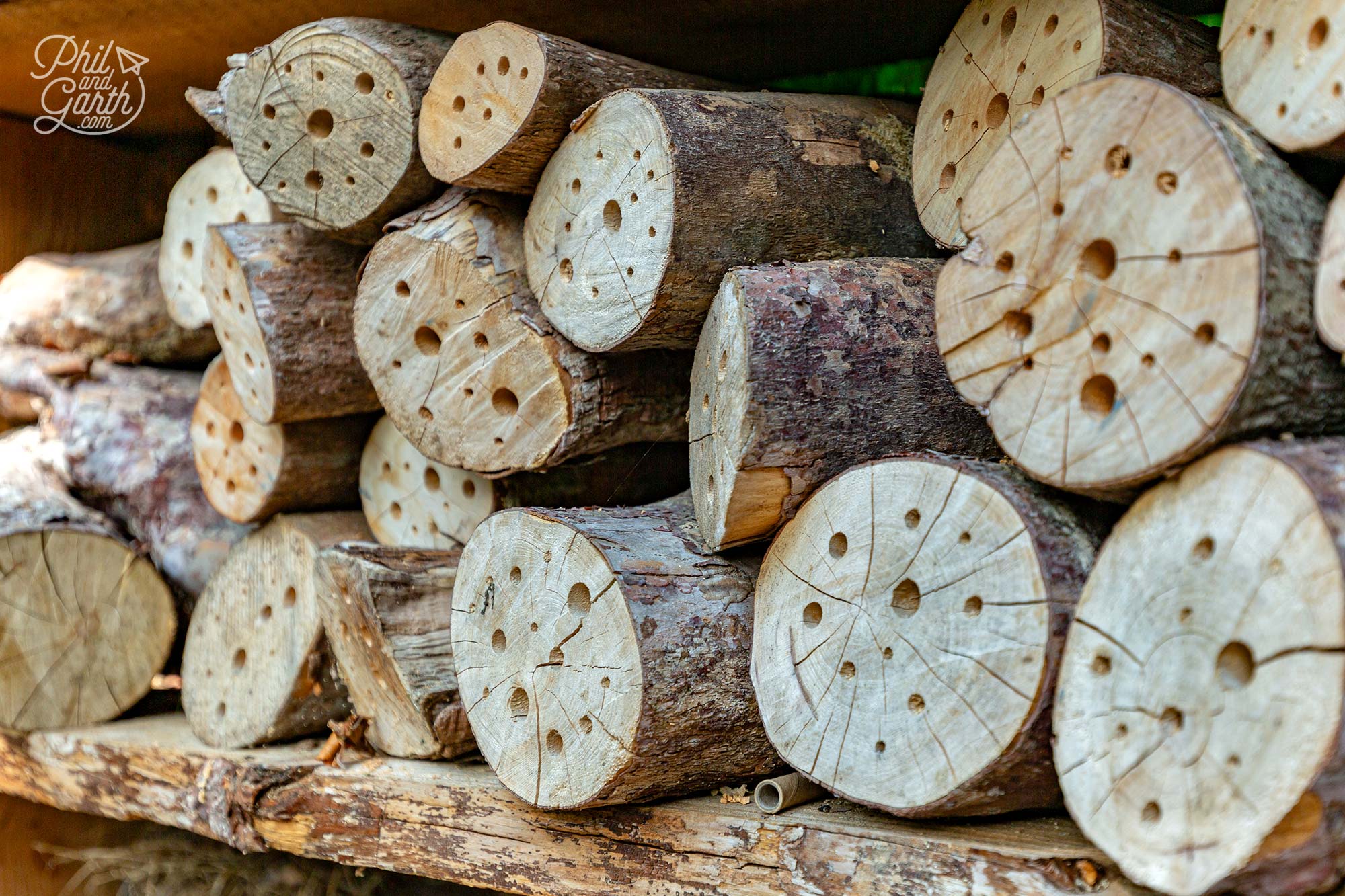
We’re going to take home this idea – drilling different size holes in logs for bugs
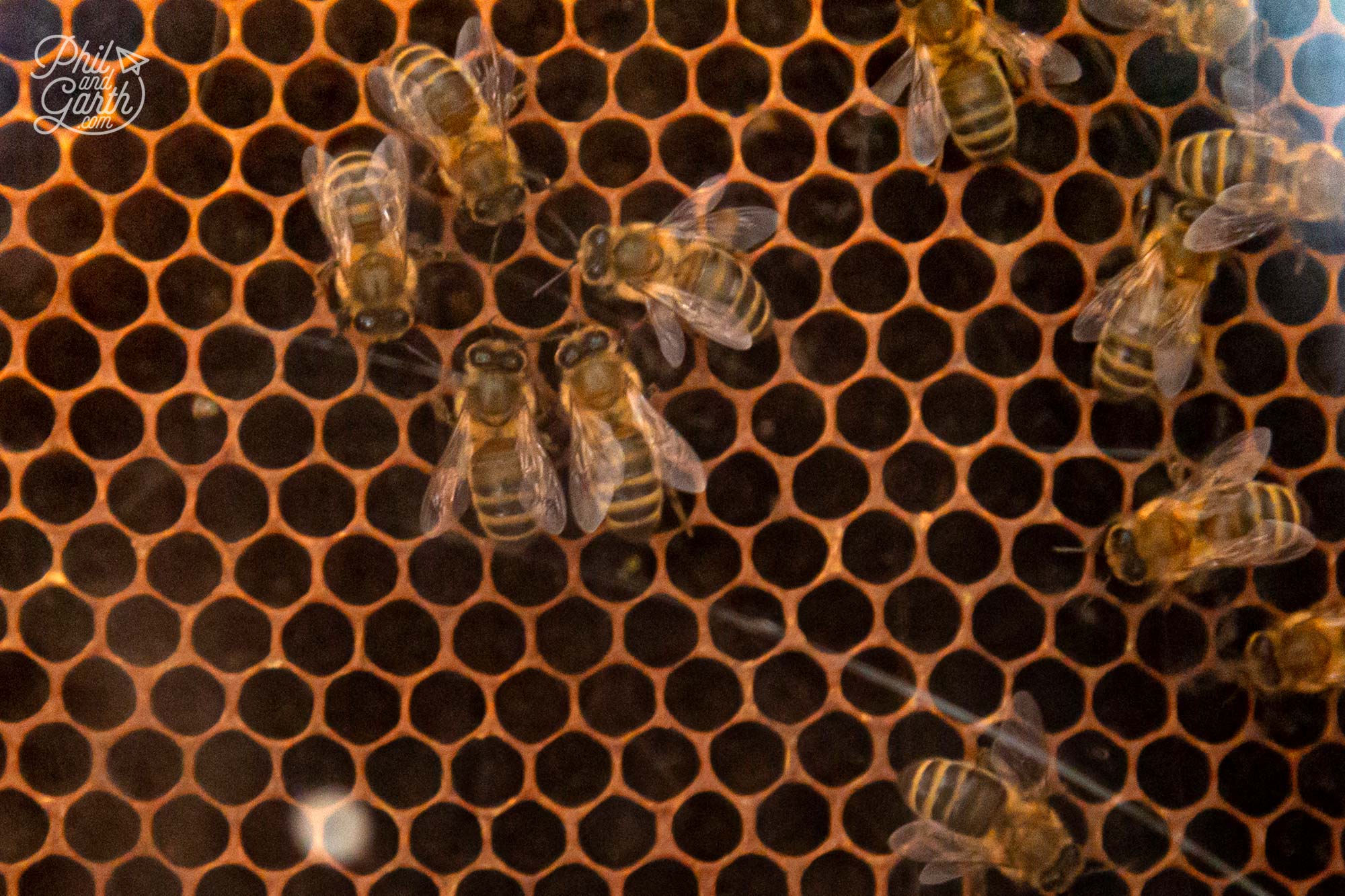
You can view black honey bees at the bee observation hive
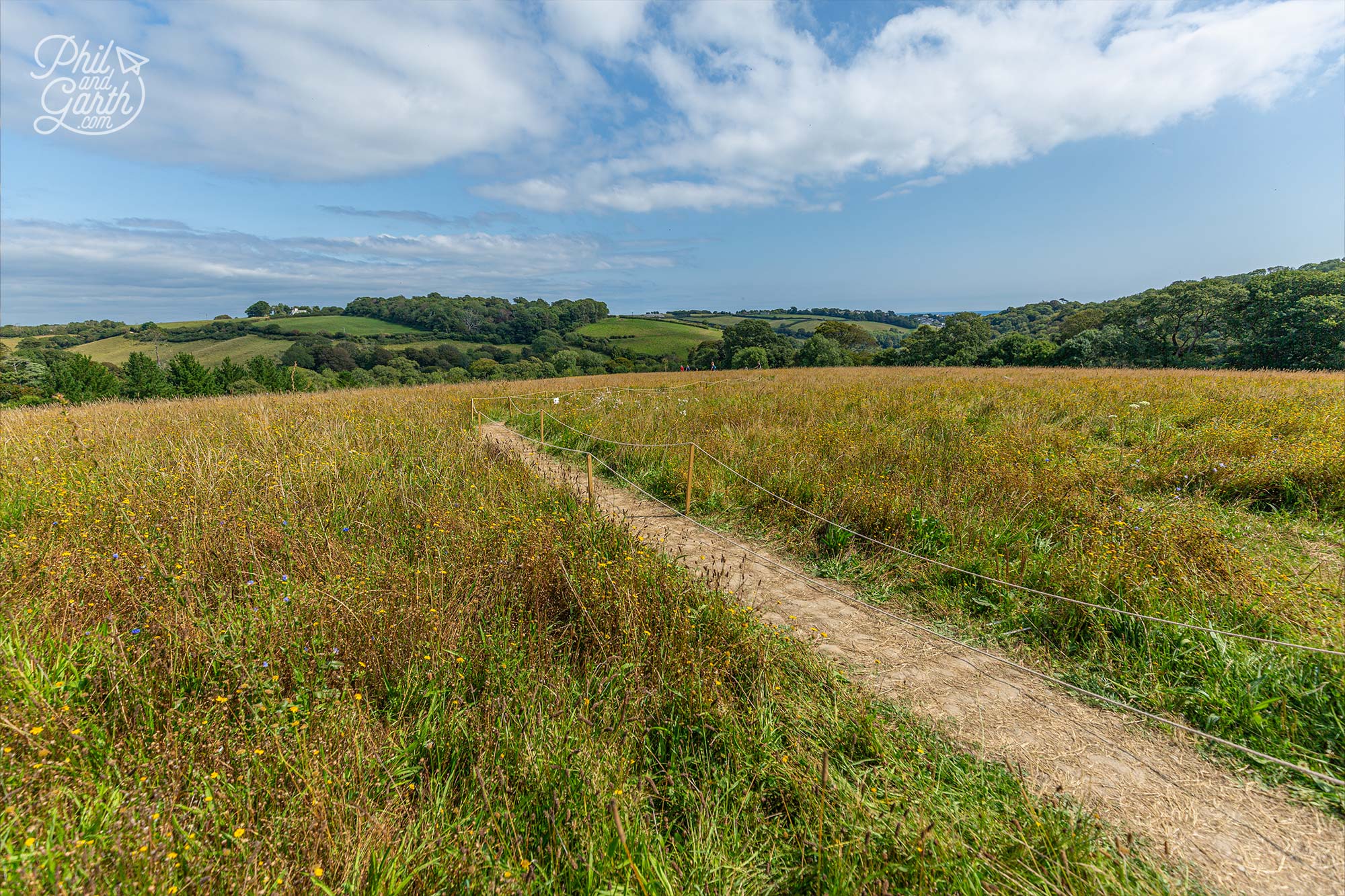
The wildflower meadow home to pollinator insects – bees, butterflies, moths, wasps and beetles
Woodland Walk
The Woodland Walk is one of the nicest scenic trails at Heligan’s Gardens for a slow amble. This walk comes alive as you’ll discover through the trees unusual eclectic sculptures including a transparent sculpture of the Grey Lady (which we nearly missed!) and others made from mud that change appearance according to the season. Heligan’s famous Mud Maid sculpture was created by local artists Pete and Sue Hill. Her hands and face are a mixture of mud, cement and sand. Depending on the season her appearance changes as moss and seasonal plants grow over the sculpture. We thought seeing the Mud Maid peacefully asleep symbolised Heligan’s heritage as a place that time forgot hidden away for decades. The walk finishes with The Giant’s Head sculpture near the garden entrance. The Giant’s Head is made from an old large tree root and his eyes from glass and china pieces found during the garden restoration. You can do the Woodland Walk at the start or end of your visit to Heligan.
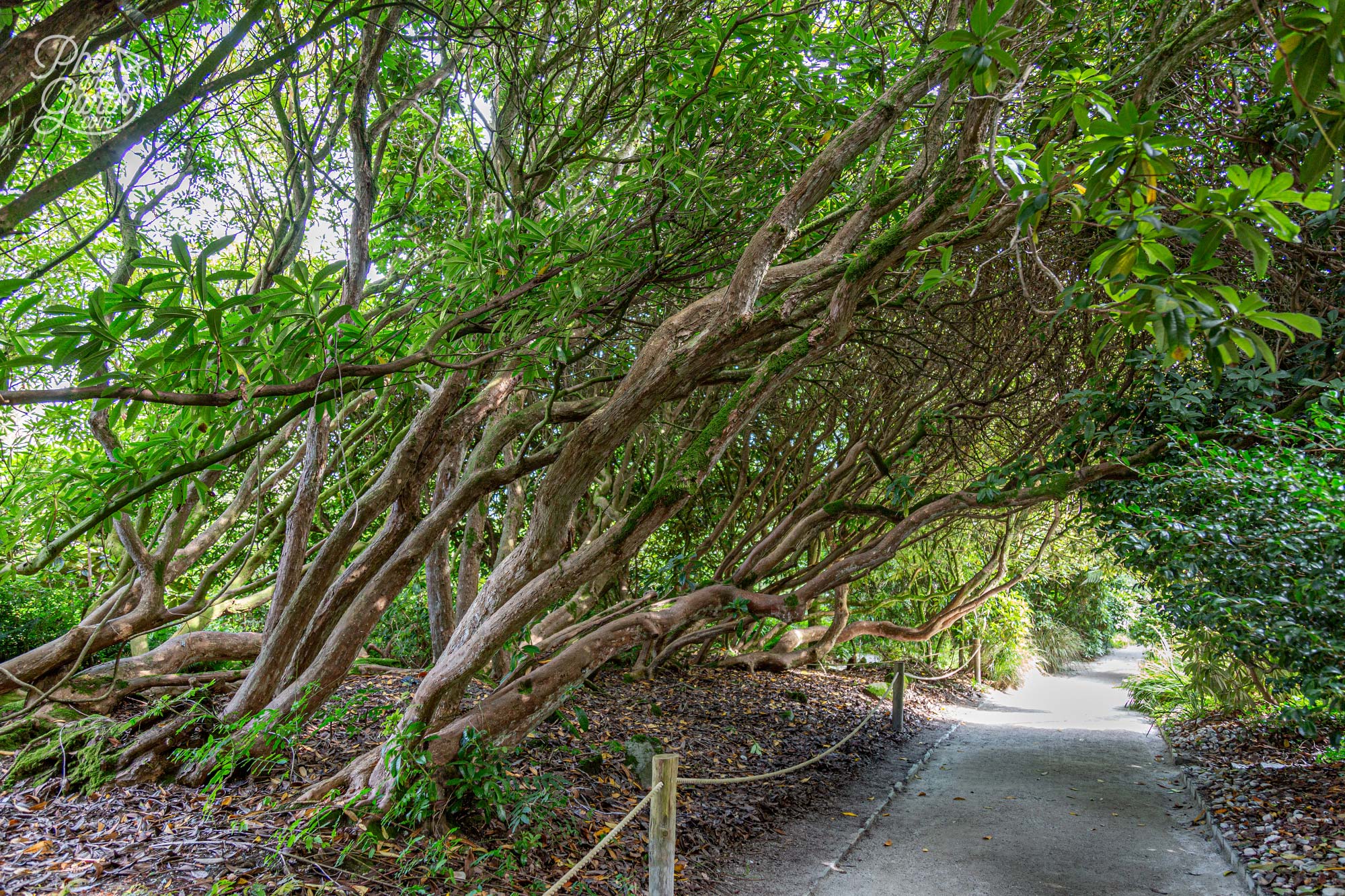
The Woodland Walk Lost Gardens of Heligan
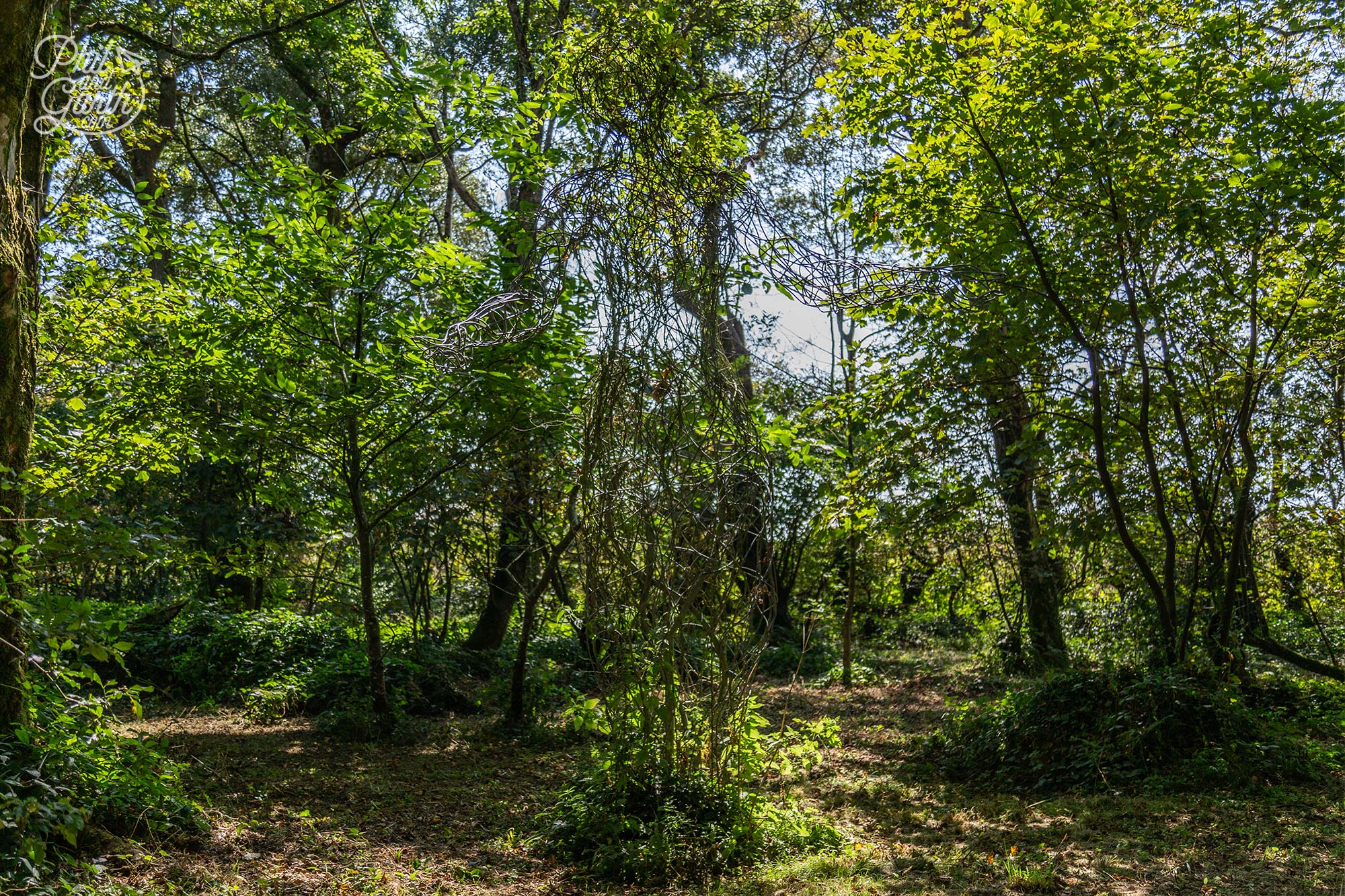
Can you make out the Grey Lady in this photograph?
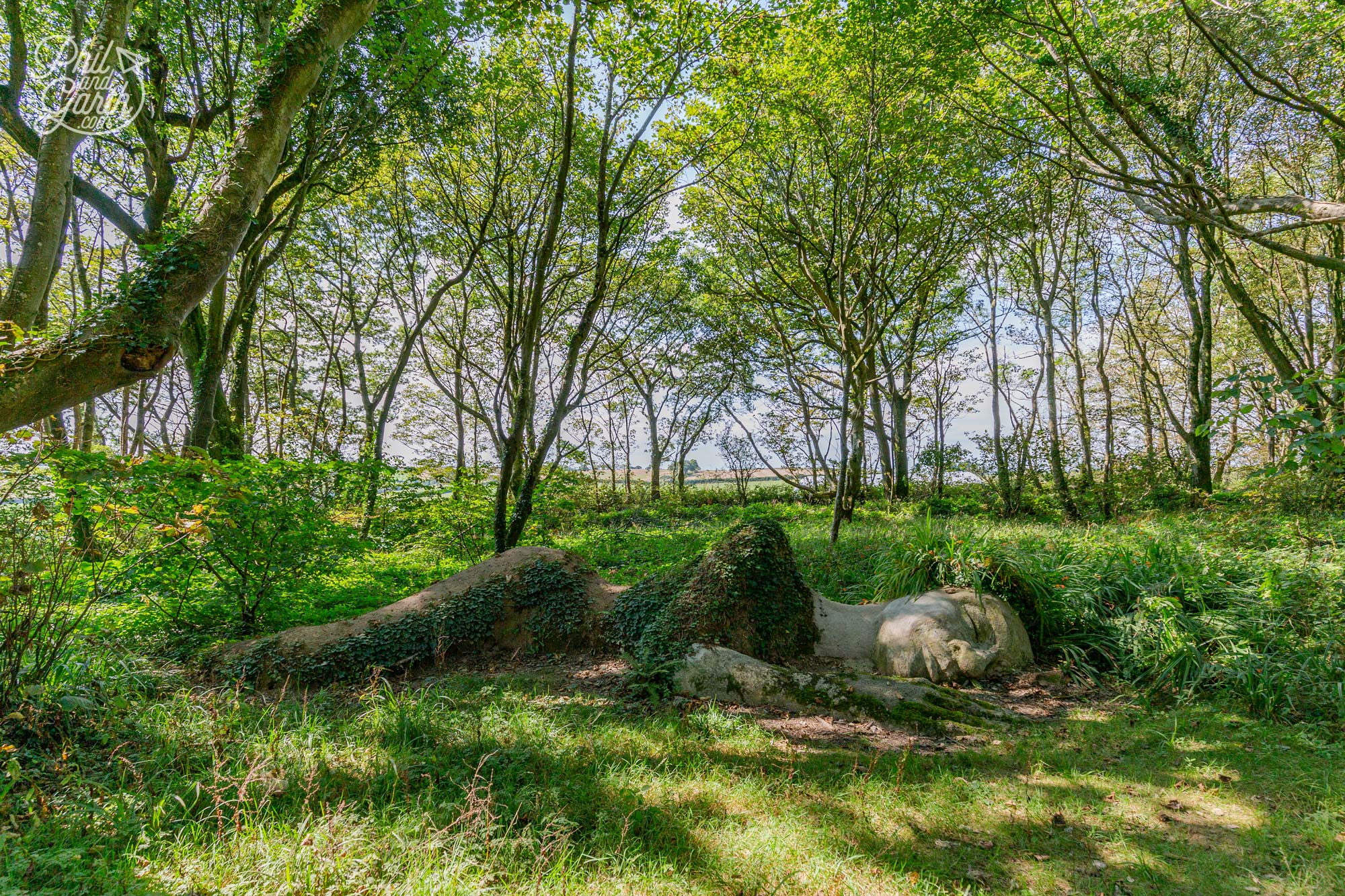
The Lost Gardens of Heligan’s famous Mud Maid sleeping in the woodland
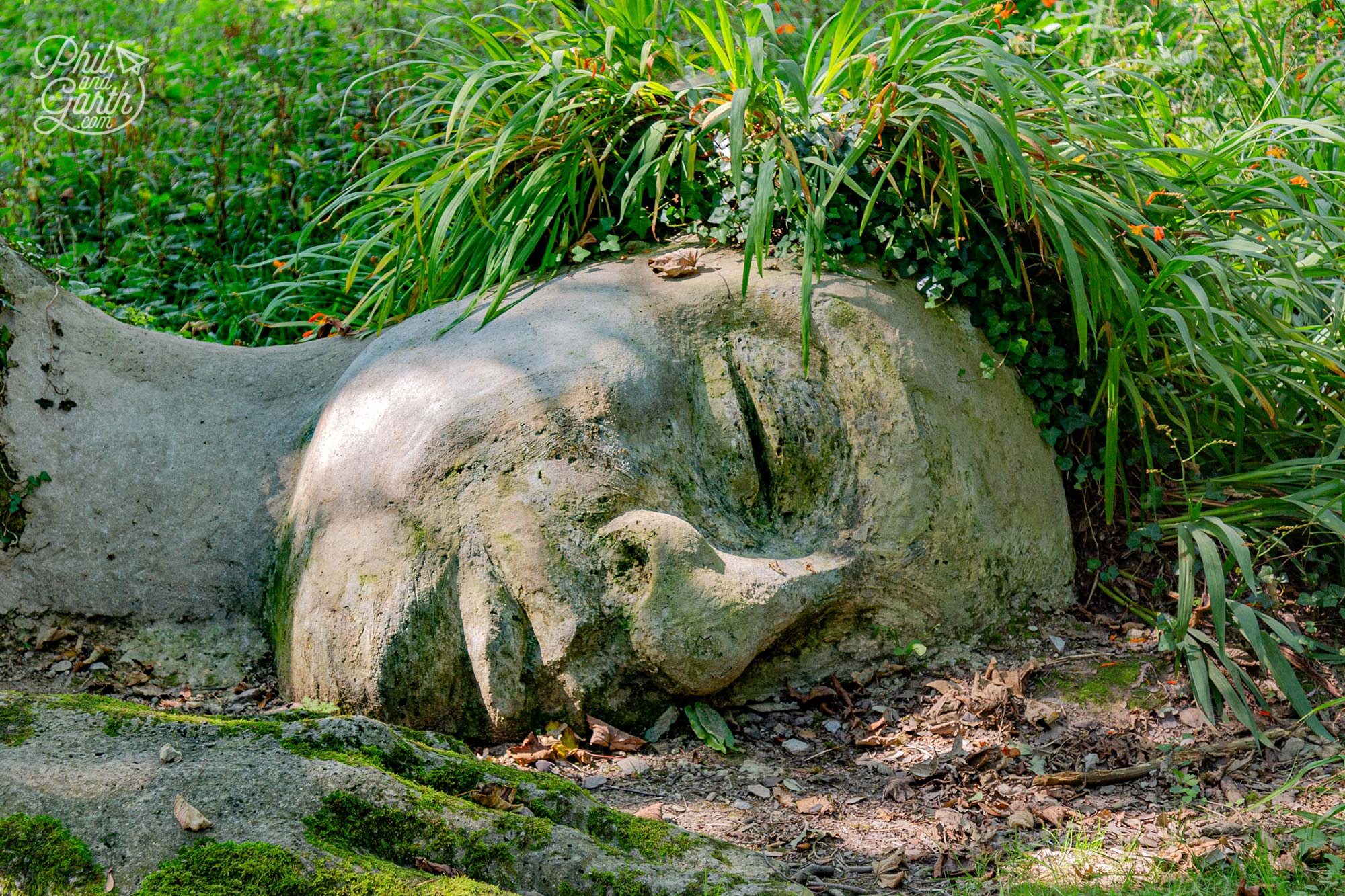
The Mud Maid was created by Cornish artists Pete and Sue Hill
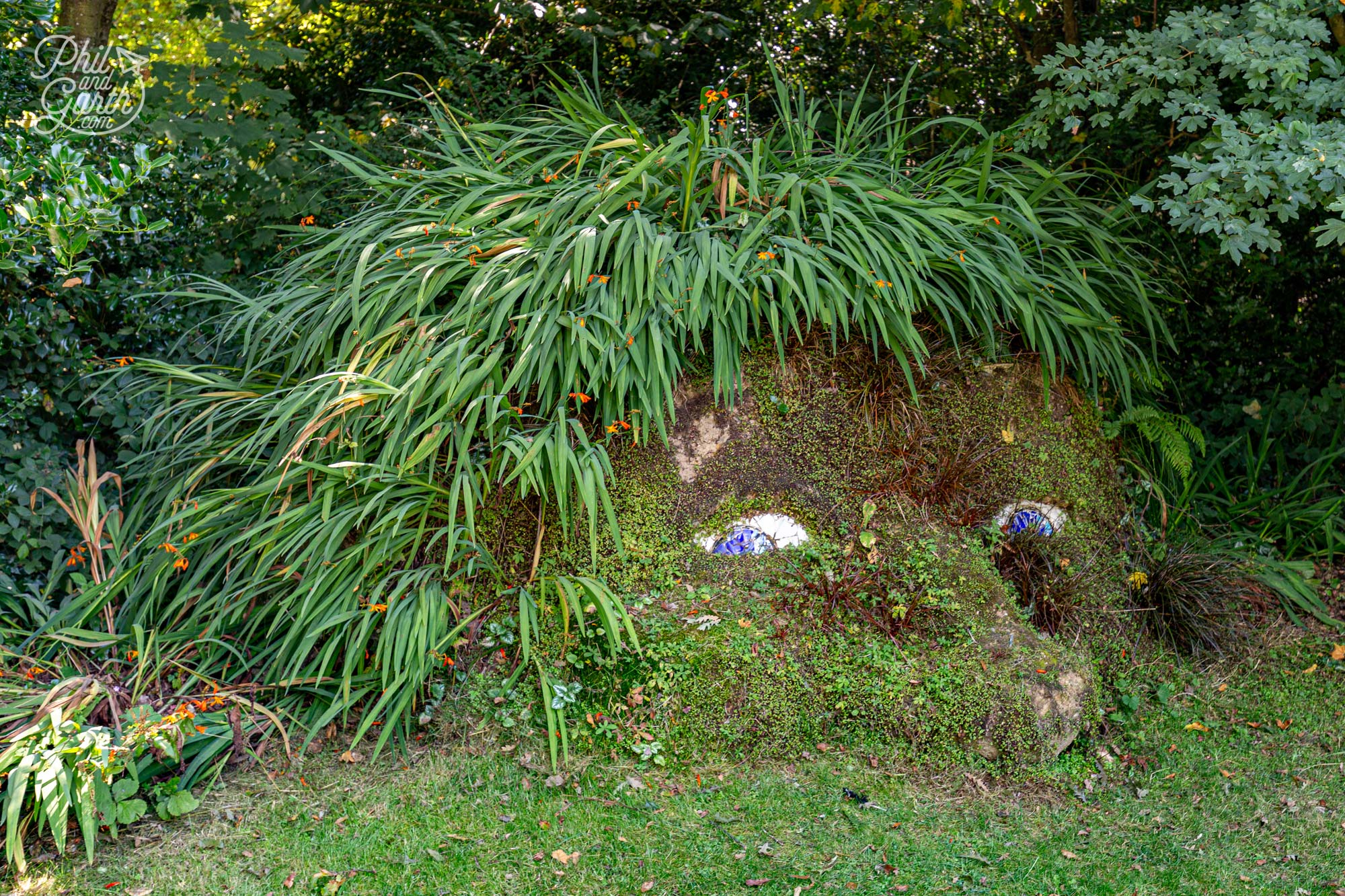
The Giant’s Head – a mud sculpture created by local artists Pete and Sue Hill
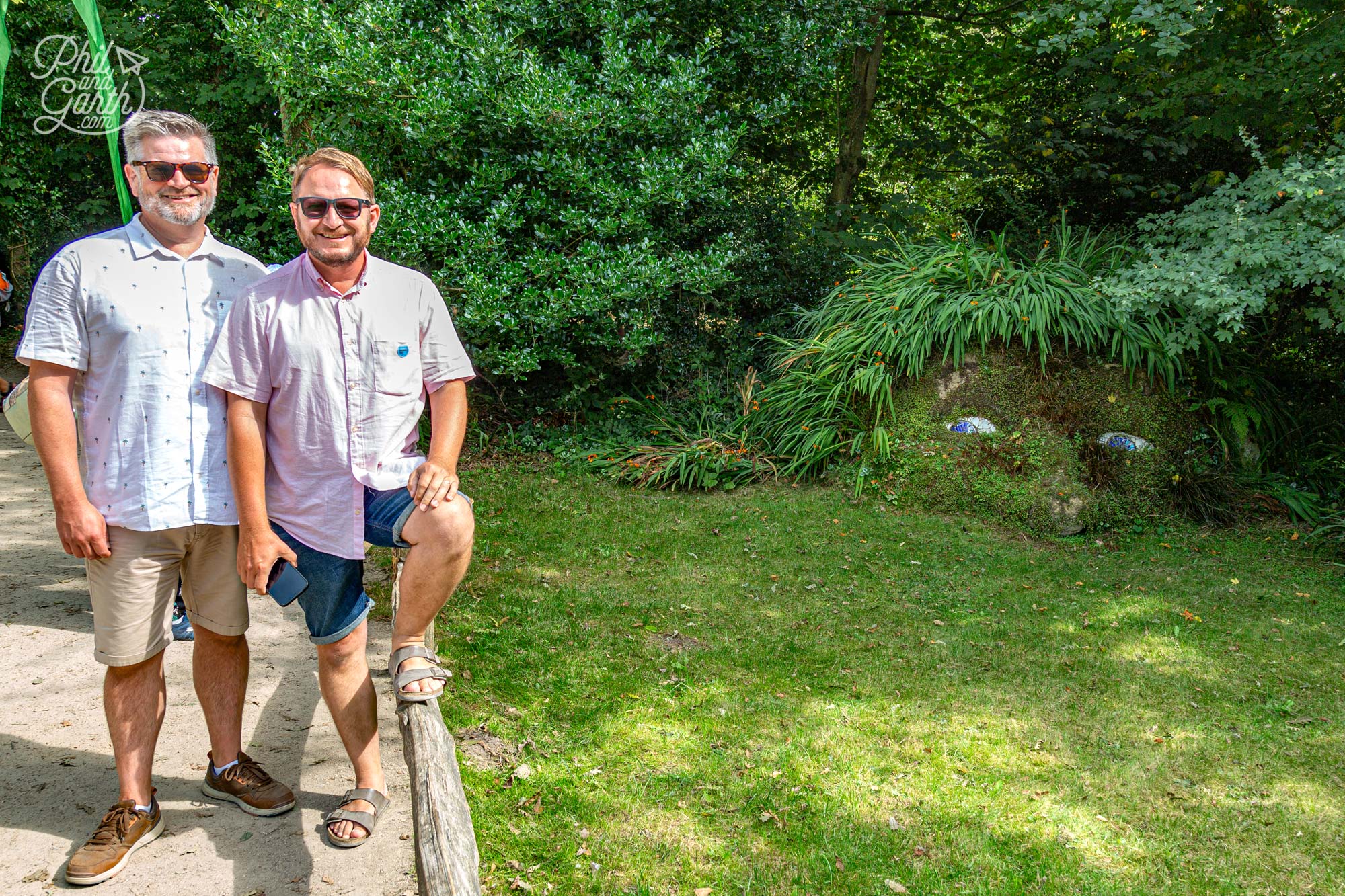
Standing next the Giant’s Head Heligan. His hair is made from orange crocosmia
Food and Drink Options
There are 3 food main options in the Lost Gardens of Heligan. The Heligan Kitchen & Bakery near the ticket office offers the biggest choice including fresh coffee and cream teas. The Steward’s House Cafe offers take away homemade pies and Cornish pasties whilst the Heligan BBQ Hut cooks hot dogs and burgers over their home-produced charcoal. This is where we stopped for lunch.
All produce is locally sourced and uses sustainable methods with fresh seasonal produce from the Kitchen Garden which only travels 157 yards to the kitchen. Heligan Estate reared meat is also used.
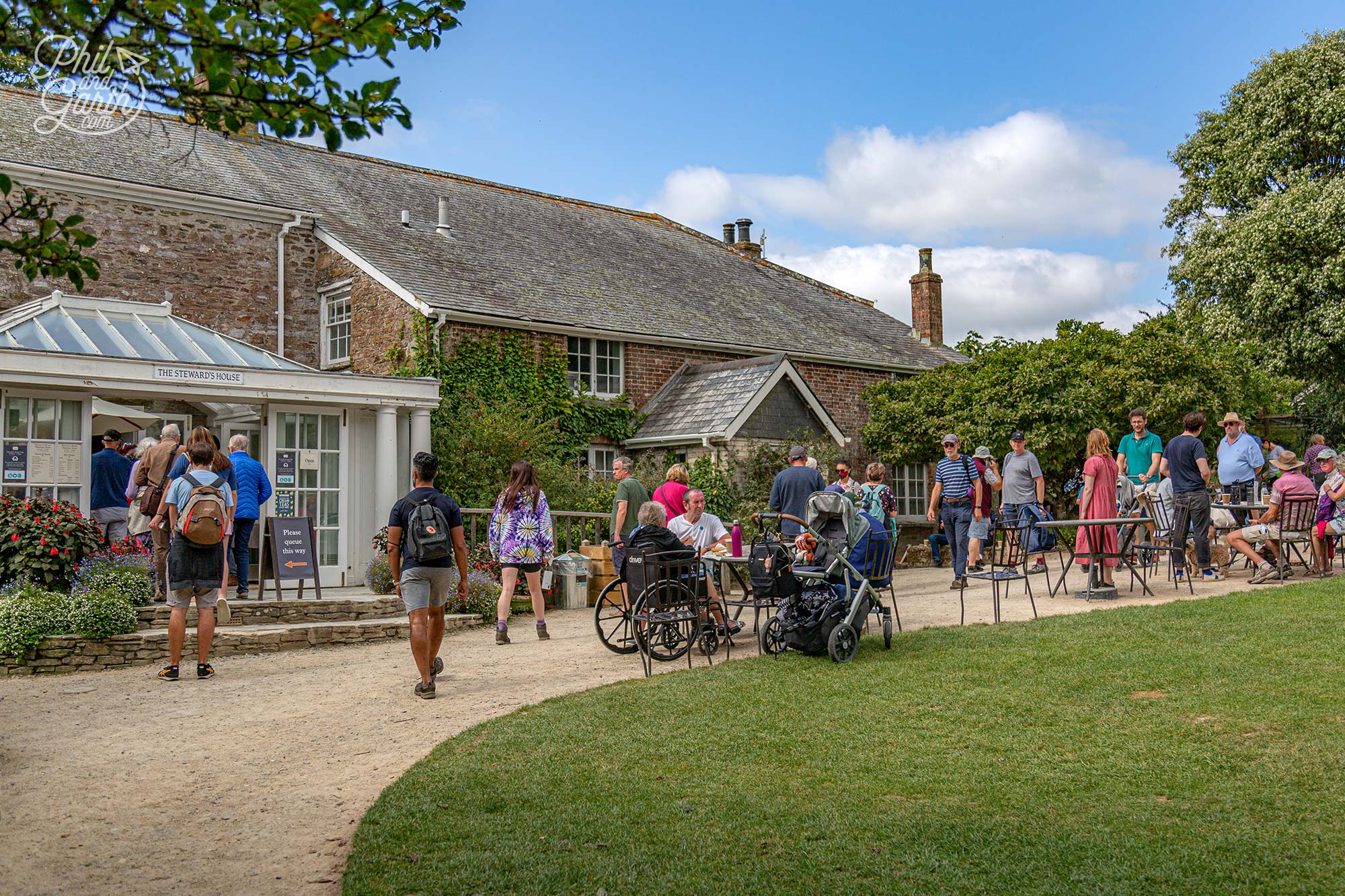
The Steward’s House Cafe for food at the Lost Gardens of Heligan

A decent hot dog from the Heligan BBQ Hut
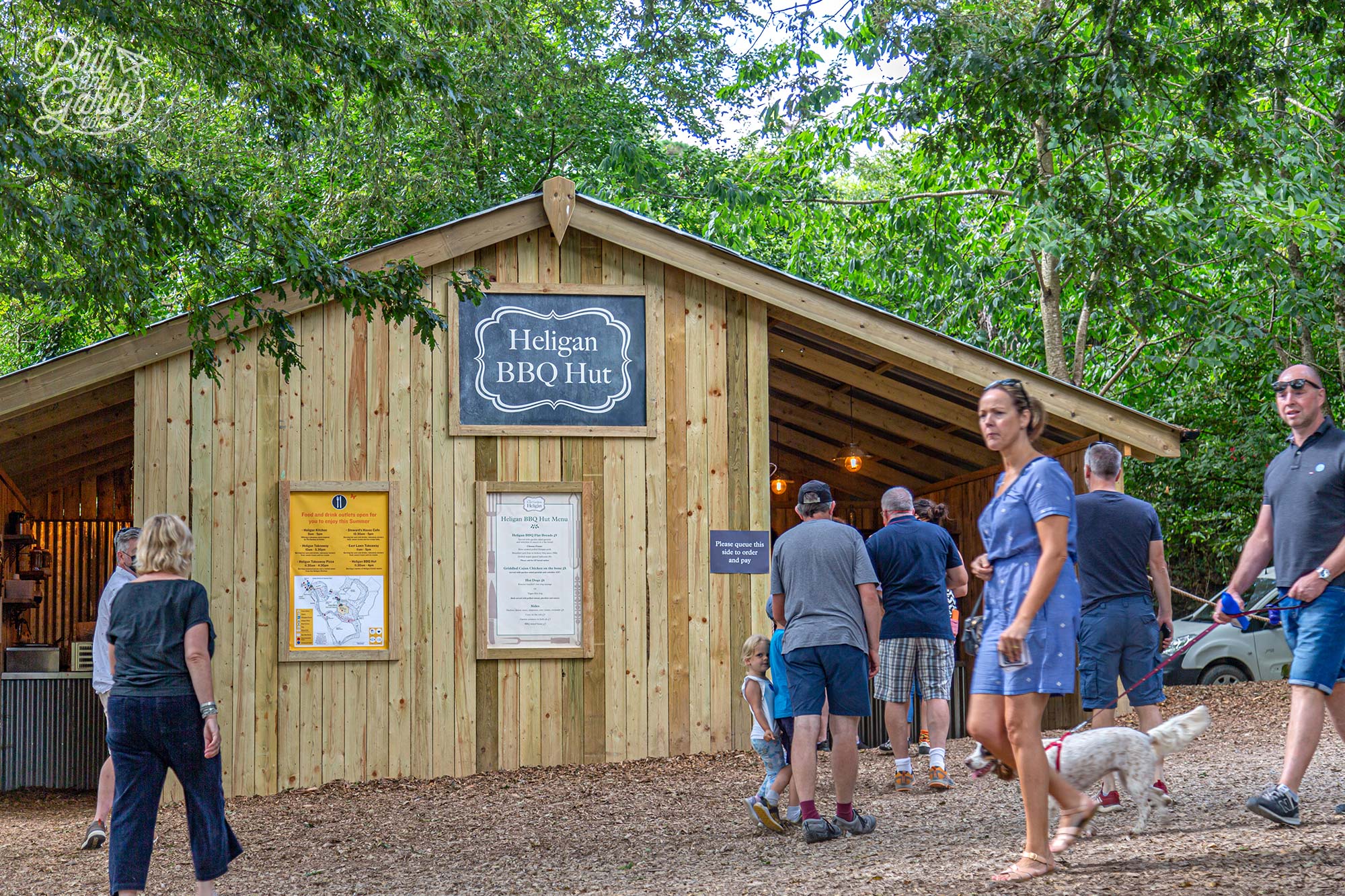
Heligan BBQ Hut
The Lost Gardens of Heligan Facts & Useful Advice
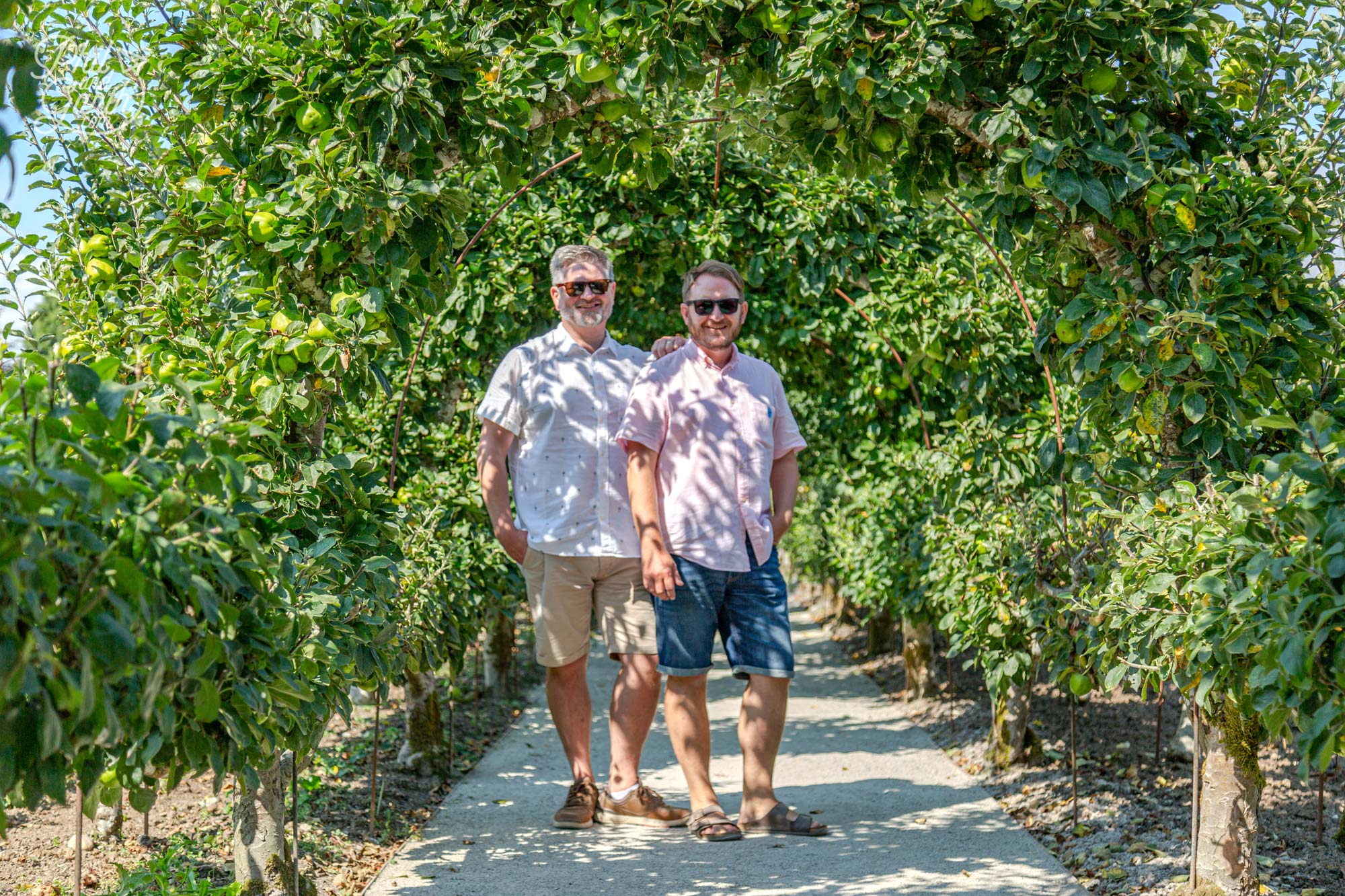
Phil and Garth under a tunnel of fruit trees at the Lost Gardens of Heligan
Phil and Garth’s Top 5 Lost Garden of Heligan Tips
- Tip #1: Consider visiting the walled gardens later in the day as everyone does it first.
- Tip #2: Use the map supplied with your ticket to plan out a route. Or follow our order of attractions.
- Tip #3: There are lots of walking with steep paths in parts so you will get tired.
- Tip #4: Take a blanket and a picnic to save money on food.
- Tip #5: Take lots of water on a sunny day.
Lost Gardens of Heligan FAQ
- What is the sat-nav postcode for the Lost Gardens of Heligan? PL26 6EN (Pentewan)
- Where is the Lost Gardens of Heligan? Close to the small town of Mevagissey, near St Austell in Cornwall.
- What is the Lost Gardens of Heligan official website? Pre-book your tickets at heligan.com
- How much does it cost? £17.50 for adults, £8.50 for children.
- Who much is the parking? Parking is free
- What are the opening times? 10am – 6pm April to September and 10am – 5pm October to March.
- When is the best time to visit Heligan Gardens? Late spring or late summer when the gardens are full of colour.
- How long do you need? At least 4 hours.
- Where is the best photo spot? Under the Apple Arch in the kitchen garden or next to the Mud Maid.
- Can I take my dog to Heligan Lost Gardens? Yes, but they must be kept on a short lead and not allowed in the cafes.
Lost Gardens Of Heligan Map
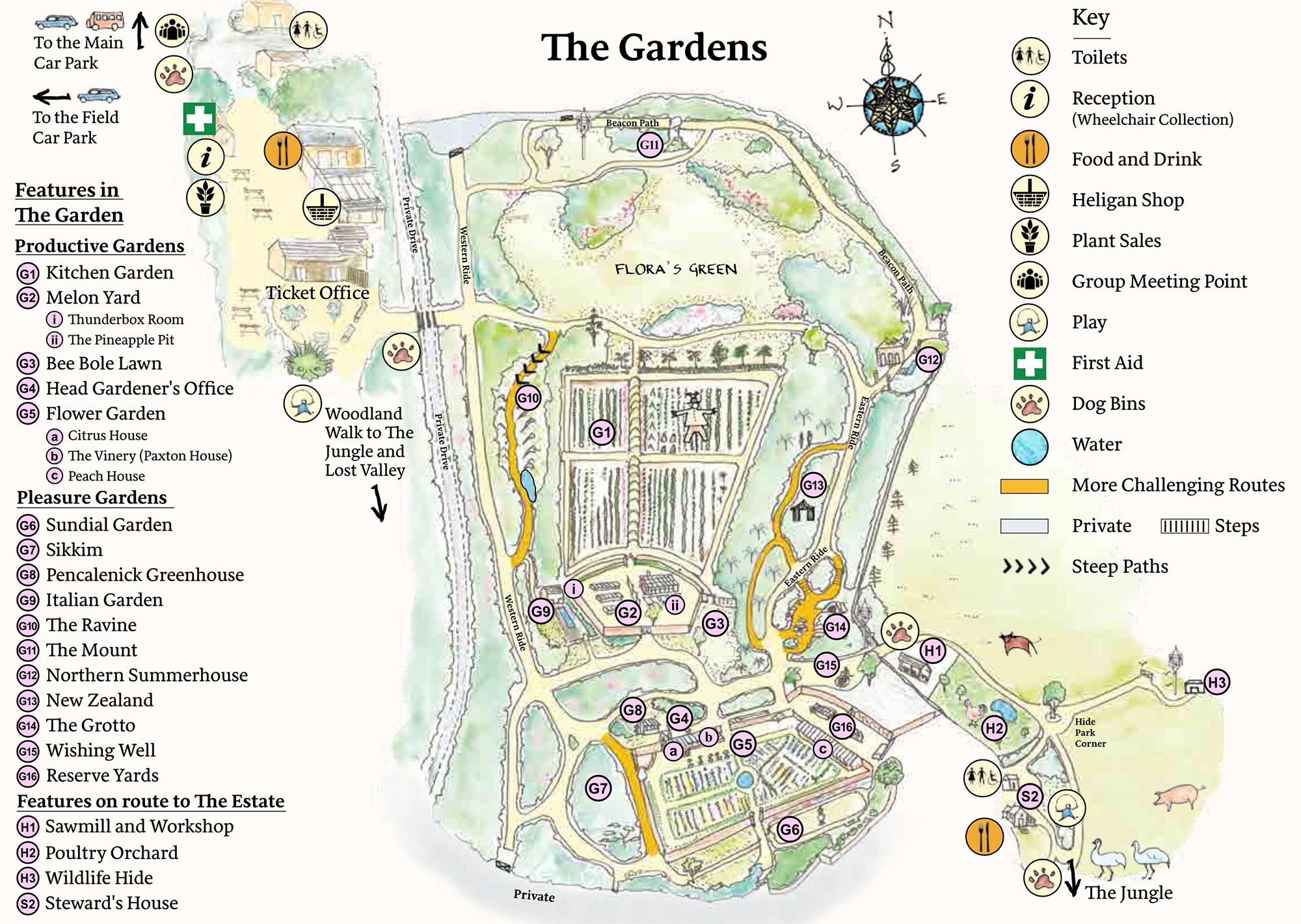
The Lost Gardens of Heligan Map
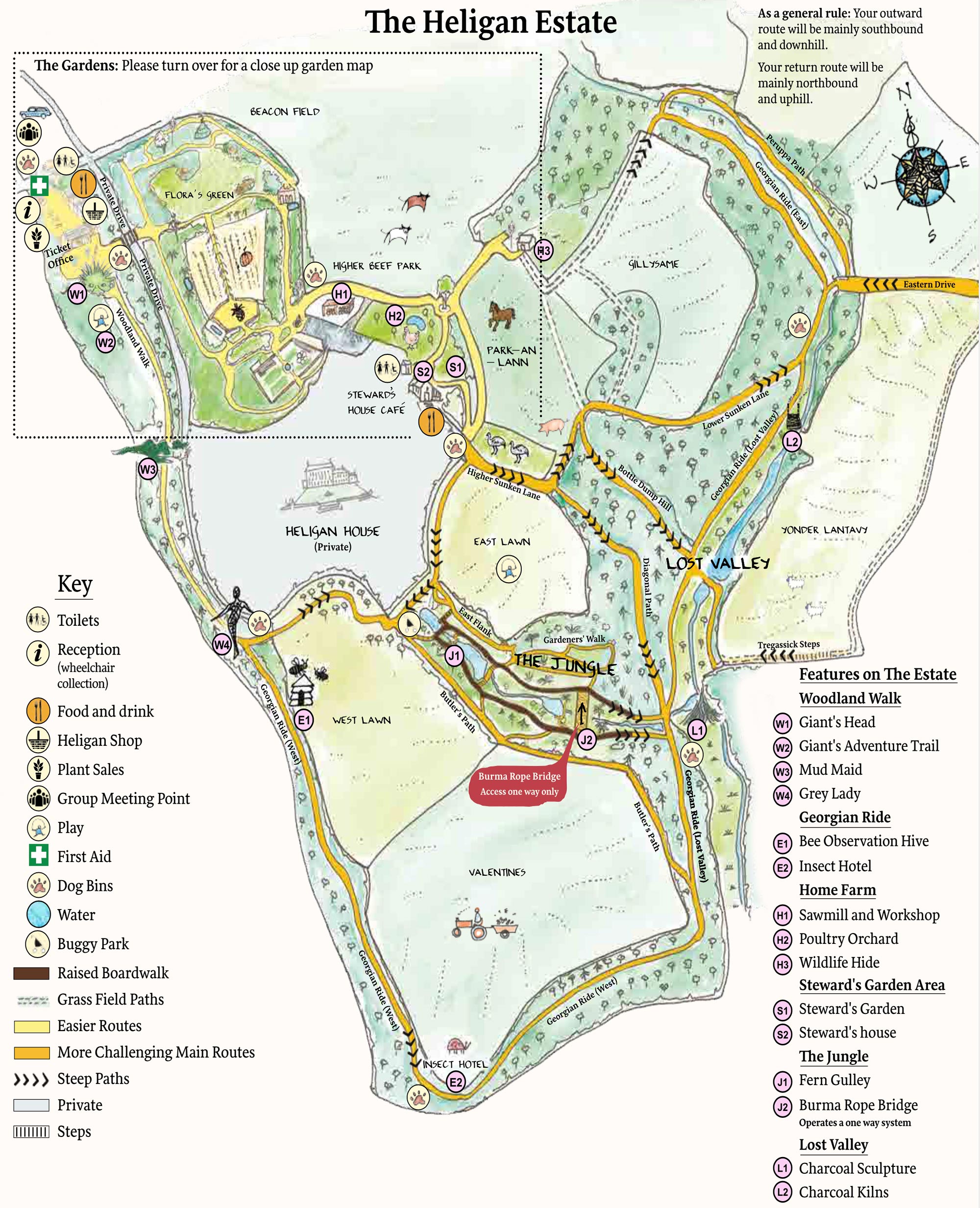
Lost Gardens of Heligan Estate Map
How We Did It
- We stayed the night at Boscundle Manor in St. Austell which is right next to Charlestown. A lovely fishing harbour, made famous by the BBC TV series Poldark as a filming location.
- We visited Heligan Gardens at the end of August. The weather was great and we thought it’s one of the best gardens to visit in Cornwall.


